Best Short Stories for Teaching the Hero’s Journey

Looking to shake up your approach to teaching the Hero’s Journey? Whether you’re looking to replace a novel with a range of short stories or to use them as additional texts, this post reveals 8 short stories that will get the job done.
Gearing up to teach the Hero’s Journey? Before you grab your go-to book from the shelf, I urge you to consider an alternative approach—using short stories.
While there are plenty of great novels out there to emphasize the Hero’s Journey, it was always a challenge to choose just one. Did I want to go with a popular classic, like The Odyssey ? Or an engaging modern text, like The Hunger Games ? That very challenge is what first got me thinking—What if my students could dive into multiple examples of the Hero’s Journey? Besides, heroes come in all shapes and sizes, right? So, in an attempt to expose my students to a classic narrative archetype and a variety of texts, I turned to short stories. And, honestly, I haven’t turned back since.
Whether you’re looking for short stories to take center stage or serve as a stepping stone before jumping into a full-length novel, they make the perfect addition to a Hero’s Journey unit. Keep reading to learn the advantages of teaching the Hero’s Journey using short stories and 8 short story titles that are sure to enhance your lessons.

What Is the Hero’s Journey?
Whether this is your first time teaching the Hero’s Journey or you need a quick review, let’s go over the basics. The Hero’s Journey is a narrative framework coined by Joseph Campbell in his book called The Hero With A Thousand Faces , published in 1949. However, the concept and pattern of the journey have been around since the earliest days of storytelling. It outlines the transformative journey of a protagonist who overcomes obstacles, faces inner and outer challenges, and emerges with newfound strength and wisdom.
While variations certainly exist across different narratives, cultures, and uses, the classic phases of the Hero’s Journey include the following:
- The Ordinary World: An introduction to the protagonist’s everyday life, relationships, and any challenges or limitations they face are first introduced.
- The Call to Adventure: The protagonist receives a compelling invitation or challenge that initiates the on the heroic journey.
- Refusal of the Call: The protagonist resists the call to adventure due to fear, doubt, or a sense of inadequacy.
- Meeting the Mentor: The protagonist encounters a mentor figure who provides guidance, advice, and assistance needed for the journey.
- Crossing the Threshold: The protagonist leaves the familiar and ordinary world behind and enters the unknown.
- Tests, Allies, and Enemies: The protagonist encounters various obstacles,enemies, and allies that test their will, determination and character.
- Approach to the Inmost Cave: The protagonist prepares for a significant challenge or confrontation, symbolizing their innermost fears, doubts, or weaknesses.
- Ordeal: The protagonist is pushed to their limits when faced with their greatest challenge, undergoing a transformative experience.
- Reward: After overcoming the ordeal, the protagonist is rewarded with something, often knowledge, that empowers them to continue their journey.
- The Road Back: The protagonist begins a journey back to the ordinary world.
- Resurrection: They face a final challenge, where they must apply everything they have learned and experienced.
- Return with the Elixir: The protagonist returns and is reunited with the ordinary world, having been transformed by “the elixir”—an object, knowledge, or insight—for the greater good.
Why Teach the Hero’s Journey with Short Stories?
You can apply the Hero’s Journey to a wide variety of literary texts, including myths, fairy tales, novels, short stories, and plays. Heck, you can even track the Hero’s Journey in movies, too. No matter which avenue you use, the Hero’s Journey encourages students to analyze plot structure, character motivation and development, and universal themes.
It gets them shrinking about essential questions like, are heroes born or are they made? What defines a hero? How can an individual change through taking heroic action? What can we learn about ourselves through studying a protagonist’s Hero’s Journey?
While many teachers opt for teaching the Hero’s Journey through a novel, here’s why I love using short stories to do so:
- Concise Storytelling: Short stories allow students to explore the Hero’s Journey in a concise format. This brevity allows for you to utilize short stories in various ways. Have students explore multiple examples of the Hero’s Journey, comparing and contrasting the variations. Alternatively, you can use a short story as Hero’s Journey review or as an introductory experience before diving into a full-length novel.
- Engaging Narratives: Given the waning attention spans of today’s students, it can be challenging to keep them engaged and on track with a longer text. On the other hand, short stories captivate students with their fast-paced narratives and intriguing characters. Short stories can make it through a 12-phase Hero’s Journey in a matter of pages. They often pack a punch with their themes and conflicts, giving students plenty to work with.
- Diverse Perspectives: Heroes come from different places and backgrounds, and possess various strengths and skills. It’s not a one-size-fits-all thing. Therefore, short stories allow you to expose your students to a range of protagonists and the different journeys they take. In fact, students can analyze multiple heroes in the same amount of time it would take to read an entire novel. In turn, you expose students to different voices, perspectives, and cultural experiences, fostering empathy and understanding in addition to highlighting the Hero’s Journey. Talk about two birds with one stone!
- Accessibility and Differentiation: Short stories are a great way to make literature accessible for students of varying abilities and interests. Teaching the Hero’s Journey through these shorter narratives is a great way to set students up for success by assigning a text based on their reading and comprehension level. And, if you ask me, it’s far easier for teachers to manage various short stories than multiple novels.
8 Short Stories for Teaching the Hero’s Journey
If you’ve made it this far down in the post, I’ve convinced you to at least consider using short stories when teaching the Hero’s Journey. (You won’t regret it.) But, let’s take it one step further, shall we? Instead of starting from the drawing board, here are 8 short stories that are perfect for teaching the Hero’s Journey in secondary ELA.
1. “A Sound of Thunder” by Ray Bradbury
Would it be a great short story list without at least one Bradbury title? “A Sound of Thunder” may not follow every stage of the Hero’s Journey in a traditional sense, but the protagonist, Eckels, certainly experiences his own form of the journey. Bradbury’s story incorporates elements of the hero’s transformation, the challenges faced, and the revelation of the consequences of their actions as Eckles ultimately learns the hard truth that even the smallest actions can have big consequences.

2. “The Secret Life of Walter Mitty” by James Thurber
This is another short story that doesn’t completely follow the journey in the most traditional sense. However, students will enjoy tracking protagonist Walter Mitty’s own form of his Hero’s Journey. Walter Mitty’s journey involves vivid daydreams that serve as an escape from his mundane reality. Students can track the stages of the Hero’s Journey as Mr. Mitty sets out on a quest for self-expression, courage, and embracing the extraordinary within.
3. “The Yellow Wallpaper” by Charlotte Perkins Gilman
This is not your average Hero’s Journey, making it the perfect challenge text for advanced students. Students can track how the unnamed narrator turns to the titular yellow wallpaper as her supernatural aid, becoming the catalyst for her journey of self-discovery.

4. “Thank you, Ma’am” by Langston Hughes
Students will appreciate the simple realness of Roger’s Hero’s Journey. What begins as an attempted purse robbery, Roger is faced with a different kind of call to “adventure.” Ironically, the woman he tried to steal from, Mrs. Luella Bates Washington Jones, serves as his mentor during this journey, ultimately leading him to gain a newfound understanding of the importance of kindness and compassion.
5. “The Most Dangerous Game” by Richard Connell
The story’s protagonist and skilled hunter, Sanger Rainsford, goes on a harrowing Hero’s Journey when he falls off his yacht and winds up stranded on a mysterious island. Suddenly, he finds himself caught in a deadly game of survival. (Dun, dun, dun.) However, by the end of his journey, Rainsford returns to civilization with a newfound perspective and appreciation for life.
6. “Raymond’s Run” by Toni Cade Bambara
Squeaky, the story’s young protagonist, is a talented runner who unexpectedly embarks on her own Hero’s Journey. While she is initially focused on her own ambitions, Squeaky’s perspective shifts as she heads down a path of self-discovery and compassion. By the end of her journey, Squeaky transforms from a self-centered competitor to a caring sister who is able to support her brother.
7. “Marigolds” by by Eugenia Collier
The story’s protagonist, Lizabeth, finds herself on a transformative journey initiated by frustrations with the poverty and hopelessness in her community. By the end, despite the struggles around her, she is able to find moments of beauty and to approach others with kindness and understanding. Ultimately, Lizabeth’s Hero’s Journey is one of learning empathy and self-realization in the face of adversity.
8. “To Build a Fire” by Jack London Does this story follow the traditional Hero’s Journey? Nope. But that’s what makes it the perfect companion text to a storyline that follows the traditional journey structure and stages. In London’s story, the protagonist, simply known as “the man,” sets out on a journey through the frozen Yukon wilderness. The man’s survival skills and overall resilience are tested again and again as he faces numerous challenges and tests throughout his journey. Rather than ending with a traditional elixir or triumphant return, the man learns the power of nature and the consequences of overestimating one’s abilities. (Yikes!)
There you have it, my teacher friend! If you’re looking to shake up your approach to the Hero’s Journey, short stories may just be what you need. The stories above offer diverse examples of the Hero’s Journey, showcasing different characters, settings, and themes. As a result, your students can explore variations of this classic narrative structure, laying the groundwork for engaging discussions, a cumulative compare and contrast activity, or analytical essay.
Have any other titles to add to the list? Don’t forget to share your favorite short stories for teaching the Hero’s Journey in the comments below!
1 thought on “Best Short Stories for Teaching the Hero’s Journey”
I was searching for short stories that fit the monomyth and came across “Through the Tunnel” by Dorris Lessing. It’s fantastic and fits beautifully. Thanks for your list!
Leave a Reply Cancel reply
Your email address will not be published. Required fields are marked *
Save my name, email, and website in this browser for the next time I comment.
- My Storyboards
The Hero’s Journey

What is the Hero's Journey in Literature?
Crafting a heroic character is a crucial aspect of storytelling, and it involves much more than simply sketching out a brave and virtuous figure. The hero's journey definition is not the typical linear narrative but rather a cyclical pattern that encompasses the hero's transformation, trials, and ultimate return, reflecting the profound and timeless aspects of human experience. The writer's journey in this endeavor goes beyond the external actions of the hero and delves into the character's inner world. The hero arc is the heart of the narrative, depicting the character's evolution from an ordinary person to a true hero.
Narratology and Writing Instructions for Heroic Characters
Related to both plot diagram and types of literary conflict , the ”Hero’s Journey” structure is a recurring pattern of stages many heroes undergo over the course of their stories. Joseph Campbell, an American mythologist, writer, and lecturer, articulated this cycle after researching and reviewing numerous myths and stories from a variety of time periods and regions of the world. He found that different writers take us on different journeys, however, they all share fundamental principles. Through the hero's trials, growth, and ultimate triumph, the narrative comes full circle, embodying the timeless pattern of the hero cycle. Literature abounds with examples of the hero cycle, illustrating how this narrative structure transcends cultural boundaries and remains a fundamental element of storytelling. This hero cycle in literature is also known as the Monomyth, archetype . The most basic version of Joseph Campbell's Monomyth has 12 steps, while more detailed versions can have up to 17 steps. His type of hero's journey diagram provides a visual roadmap for understanding the various stages and archetypal elements that protagonists typically encounter in their transformative quests. The wheel to the right is an excellent visual to share with students of how these steps occur. Hero's journey diagram examples provide a visual roadmap for understanding the various stages and archetypal elements that protagonists typically encounter in their transformative quests. Exploring the monomyth steps outlined by Joseph Campbell, we can see how these universal narrative elements have shaped countless stories across cultures and time periods.
Which Story Structure is Right for You?
The choice of story structure depends on various factors, including the type of story you want to tell, your intended audience, and your personal creative style. Here are some popular story structures and when they might be suitable:
- The Hero's Journey: Use this structure when you want to tell a story of personal growth, transformation, and adventure. It works well for epic tales, fantasy, and science fiction, but it can be adapted to other genres as well.
- Three-Act Structure: This is a versatile structure suitable for a wide range of genres, from drama to comedy to action. It's ideal for stories that have a clear beginning, middle, and end, with well-defined turning points.
- Episodic or Serial Structure: If you're creating a long-running series or a story with multiple interconnected arcs, this structure is a good choice. It allows for flexibility in storytelling and can keep audiences engaged over the long term.
- Nonlinear Structure: Experiment with this structure if you want to challenge traditional narrative conventions. It's suitable for stories where timelines are fragmented, revealing information gradually to build intrigue and suspense.
- Circular or Cyclical Structure: This structure is great for stories with recurring themes or for tales that come full circle. It can be particularly effective in literary fiction and philosophical narratives.
Ultimately, the right story structure for you depends on your creative vision, the genre you're working in, and the narrative you want to convey. You may also choose to blend or adapt different structures to suit your story's unique needs. The key is to select a structure that serves your storytelling goals and engages your target audience effectively.
What is a Common Theme in the Hero's Journey?
A common theme in the hero's journey is the concept of personal transformation and growth. Throughout the hero's journey, the protagonist typically undergoes significant change, evolving from an ordinary or flawed individual into a more heroic, self-realized, or enlightened character. This theme of transformation is often accompanied by challenges, trials, and self-discovery, making it a central and universal element of hero's journey narratives.
Structure of the Monomyth: The Hero's Journey Summary
This summary of the different elements of the archetypal hero's journey outlines the main four parts along with the different stages within each part. This can be shared with students and used as a reference along with the hero's journey wheel to analyze literature.
Part One - Call to Adventure
During the exposition, the hero is in the ordinary world , usually the hero’s home or natural habitat. Conflict arises in their everyday life, which calls the hero to adventure , where they are beckoned to leave their familiar world in search of something. They may refuse the call at first, but eventually leave, knowing that something important hangs in the balance and refusal of the call is simply not an option.
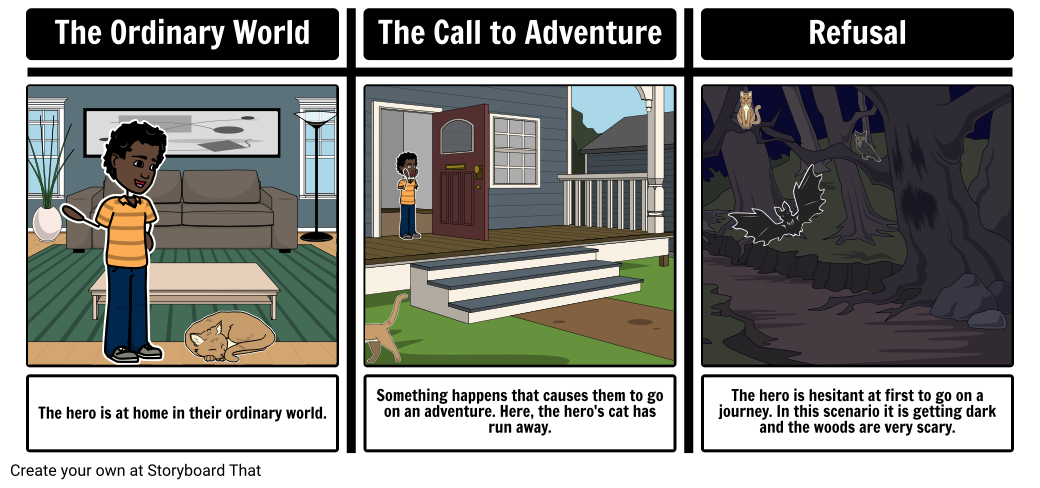
Part Two - Supreme Ordeal or Initiation
Once the hero makes the decision to leave the normal world, venture into the unfamiliar world, and has officially begun their mysterious adventure, they will meet a mentor figure (a sidekick in some genres) and together these two will cross the first threshold . This is the point where turning back is not an option, and where the hero must encounter tests, allies and enemies . Obstacles like tests and enemies must be overcome to continue. Helpers aid the hero in their journey.
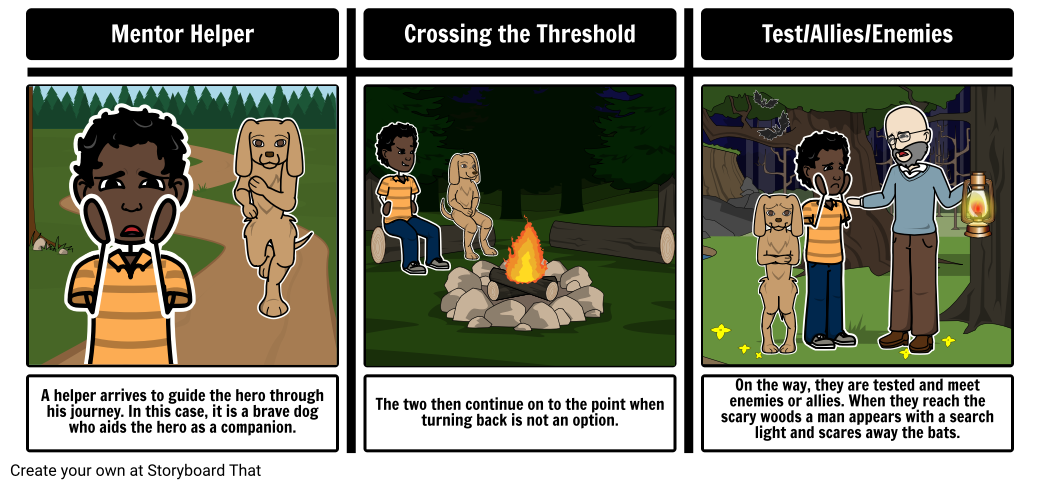
Part Three - Unification or Transformation
Having overcome initial obstacles, in this part of the heroic cycle, the hero and their allies reach the approach . Here they will prepare for the major challenge in this new or special world. During the approach, the hero undergoes an ordeal , testing them to point near death. Their greatest fear is sometimes exposed, and from the ordeal comes a new life or revival for the hero. This transformation is the final separation from their old life to their new life. For their efforts in overcoming the ordeal, the hero reaches the reward . The hero receives the reward for facing death. There may be a celebration, but there is also danger of losing the reward.

Part Four - Road Back or Hero's Return
Once the hero achieves their goal and the reward is won, the hero and companions start on the road back . The hero wants to complete the adventure and return to their ordinary world with their treasure. This stage is often referred to as either the resurrections or atonement . Hero's journey examples that showcase the atonement stage often highlight the protagonist's inner turmoil and the difficult decisions they must make to reconcile with their past and fully embrace their heroic destiny. The hero becomes "at one" with themselves. As the hero crosses the threshold (returning from the unknown to their ordinary world), the reader arrives at the climax of the story. Here, the hero is severely tested one last time. This test is an attempt to undo their previous achievements. At this point, the hero has come full circle, and the major conflict at the beginning of the journey is finally resolved. In the return home, the hero has now resumed life in his/her original world, and things are restored to ordinary.
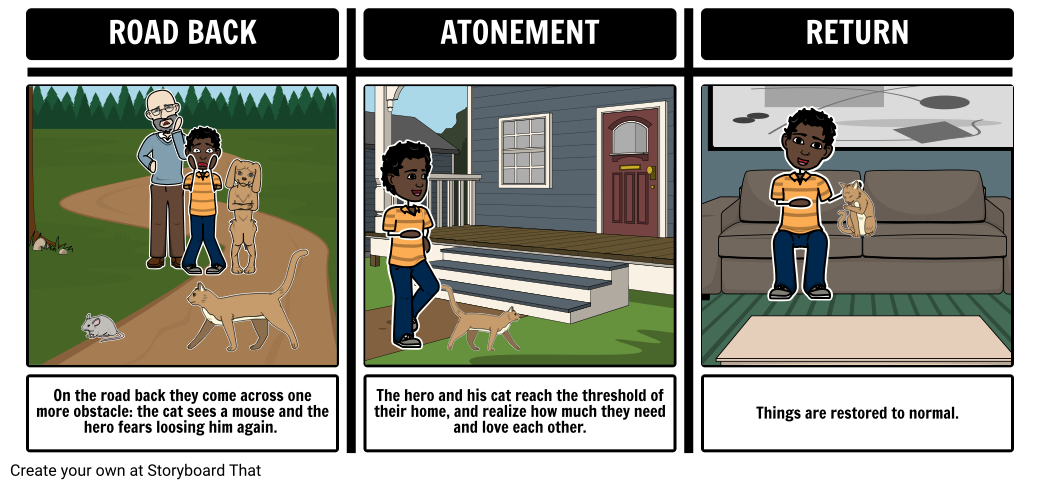
Popular Hero's Journey Examples
Monomyth example: homer's odyssey.
Monomyth examples typically involve a hero who embarks on an adventure, faces trials and challenges, undergoes personal transformation, and returns home or to society with newfound wisdom or a significant achievement, making this storytelling structure a powerful and timeless tool for crafting compelling narratives.
The hero's journey chart below for Homer’s Odyssey uses the abridged ninth grade version of the epic. The Heroic Journey in the original story of the Odyssey is not linear, beginning in media res , Latin for “in the middle of things”.)

To Kill a Mockingbird Heroic Journey

Did you know that many popular movies have heroes that follow this type of journey? It is true! In the "Star Wars" movies, Hollywood film producer George Lucas creates a journey for Luke Skywalker and Princess Leia. In "The Lion King", Simba goes on quite the adventure that ends in a final battle with his uncle Scar, a major turning point in the film before the hero returns to save his land. In "The Wizard of Oz", Dorothy takes on the role of the epic hero as she teeters between the two worlds of Kansas and Oz. These are just a few of the many examples of Campbell's theory in the cinematic realm.
Classroom Applications and Uses
Example exercises.
Create your own hero's journey examples using the Storyboard That Creator! Customize the level of detail and number of cells required for projects based on available class time and resources.
- Students identify the stages of the heroic journey in a piece of literature by creating one cell depicting each of the twelve steps.
- Students create storyboards that show and explain each stage found in the work of literature, using specific quotes from the text which highlight each part of the journey.
- Students create an outline of their own original story that follows the monomyth stages.
Common Core
- ELA-Literacy.RL.9-10.3 : Analyze how complex characters (e.g., those with multiple or conflicting motivations) develop over the course of a text, interact with other characters, and advance the plot or develop the theme
- ELA-Literacy.RL.9-10.7 : Analyze the representation of a subject or a key scene in two different artistic mediums, including what is emphasized or absent in each treatment (e.g., Auden’s “Musée des Beaux Arts” and Breughel’s Landscape with the Fall of Icarus)
- ELA-Literacy.W.9-10.6 : Use technology, including the Internet, to produce, publish, and update individual or shared writing products, taking advantage of technology’s capacity to link to other information and to display information flexibly and dynamically
- ELA-Literacy.SL.9-10.2 : Integrate multiple sources of information presented in diverse media or formats (e.g., visually, quantitatively, orally) evaluating the credibility and accuracy of each source
- ELA-Literacy.RL.11-12.3 : Analyze the impact of the author’s choices regarding how to develop and relate elements of a story or drama (e.g., where a story is set, how the action is ordered, how the characters are introduced and developed)
- ELA-Literacy.RL.11-12.7 : Analyze multiple interpretations of a story, drama, or poem (e.g., recorded or live production of a play or recorded novel or poetry), evaluating how each version interprets the source text. (Include at least one play by Shakespeare and one play by an American dramatist.)
- ELA-Literacy.W.11-12.6 : Use technology, including the Internet, to produce, publish, and update individual or shared writing products in response to ongoing feedback, including new arguments or information
- ELA-Literacy.SL.11-12.2 : Integrate multiple sources of information presented in diverse formats and media (e.g., visually, quantitatively, orally) in order to make informed decisions and solve problems, evaluating the credibility and accuracy of each source and noting any discrepancies among the data
Related Resources
- Plot Diagram and Narrative Arc
- Types of Conflict In Literature
- What is an Archetype?
- The Odyssey Teacher Guide
- Types of Heroes in Literature
How Teachers Can Use The Concept of The Heroic Journey To Help Students Better Understand Character Development In Literature
Introduce the concept of the heroic journey.
Teachers can introduce the concept of the heroic journey to students and explain the different stages involved in the journey. This will provide a framework for students to better understand how characters develop throughout the story.
Analyze Characters Using the Heroic Journey
Teachers can guide students through the stages of the heroic journey and ask them to identify where the character is in the journey. This will help students to understand the character's development and how their actions and decisions are influenced by the different stages of the journey.
Compare and Contrast Character Journeys
Teachers can ask students to compare and contrast the journeys of different characters within a story or across multiple stories. This will help students to gain a deeper understanding of how the heroic journey is used to develop characters in literature and how it can be applied across different genres and cultures.
Discuss the Role of Character Motivation
Teachers can encourage students to think critically about the motivations of characters at each stage of the journey. This will help students to understand why characters make certain decisions and how their motivations contribute to their development.
Apply the Concept to Real-Life Situations
Teachers can encourage students to apply the concept of the heroic journey to real-life situations. This will help students to see how the journey applies not only to literature, but also to their own lives and experiences.
Frequently Asked Questions about the Hero's Journey
What is a "monomyth" or the "hero's journey" in literature.
In comparative mythology, the monomyth, or the hero's journey, is the series of stages that can be applied to a variety of stories from all genres. It involves a hero who is called to pursue an adventure, undergoes an ordeal, achieves their goal and returns home transformed.
What are the 12 Stages of the Hero's Journey in literature?
- Ordinary World
- Call to Adventure
- Meeting the Mentor / Helper
- Crossing the Threshold
- Test / Allies / Enemies
What is a common theme in the hero's journey?
The Hero's Journey usually follows the path of the main character from childhood or young adulthood through maturity. It is about the common human experiences of growth, challenges and change that are relatable to us all.
Why should students learn about the hero's journey?
The hero's journey is relevant for students in that it demonstrates the possibility of overcoming adversity and the potential for growth and change that is within us all. It is a common theme of literature and movies that once students understand, they will be able to identify over and over again. It is helpful for students to make the text-to-self connection and apply this thinking to their own life as a "growth mindset" . They can see that they are on their own hero's journey and that everyone has the ability to overcome obstacles to achieve their goals and affect positive change in their lives and the lives of others.
What are some of the best examples of the hero's journey?
The hero's journey stages appear in more books than students may realize! Here are just a few examples of popular books that contain the monomyth structure:
- The Graveyard Book
- The Hunger Games
- To Kill a Mockingbird
- The Odyssey
- The Lions of Little Rock
- Wednesday Wars
- One Crazy Summer
- Out of My Mind
- Brown Girl Dreaming
- The Lightning Thief
- The Miraculous Journey of Edward Tulane
- The Stars Beneath Our Feet
- Fish in a Tree
Pricing for Schools & Districts
Limited Time
- 10 Teachers for One Year
- 2 Hours of Virtual PD
30 Day Money Back Guarantee • New Customers Only • Full Price After Introductory Offer • Access is for 1 Calendar Year
- 30 Day Money Back Guarantee
- New Customers Only
- Full Price After Introductory Offer
Limited Time. New Customers Only
Back to school special!
Purchase orders must be received by 9/6/24.
30 Day Money Back Guarantee. New Customers Only. Full Price After Introductory Offer. Access is for 1 Calendar Year
Generating a Quote
This is usually pretty quick :)
Quote Sent!
Email Sent to
TRY OUR FREE APP
Write your book in Reedsy Studio. Try the beloved writing app for free today.
Craft your masterpiece in Reedsy Studio
Plan, write, edit, and format your book in our free app made for authors.

Last updated on Aug 10, 2023
The Hero's Journey: 12 Steps to a Classic Story Structure
About the author.
Reedsy's editorial team is a diverse group of industry experts devoted to helping authors write and publish beautiful books.
About Dario Villirilli
Editor-in-Chief of the Reedsy blog, Dario is a graduate of Mälardalen University. As a freelance writer, he has written for many esteemed outlets aimed at writers. A traveler at heart, he can be found roaming the world and working from his laptop.
The Hero's Journey is a timeless story structure which follows a protagonist on an unforeseen quest, where they face challenges, gain insights, and return home transformed. From Theseus and the Minotaur to The Lion King , so many narratives follow this pattern that it’s become ingrained into our cultural DNA.
In this post, we'll show you how to make this classic plot structure work for you — and if you’re pressed for time, download our cheat sheet below for everything you need to know.

FREE RESOURCE
Hero's Journey Template
Plot your character's journey with our step-by-step template.
What is the Hero’s Journey?
The Hero's Journey, also known as the monomyth, is a story structure where a hero goes on a quest or adventure to achieve a goal, and has to overcome obstacles and fears, before ultimately returning home transformed.
This narrative arc has been present in various forms across cultures for centuries, if not longer, but gained popularity through Joseph Campbell's mythology book, The Hero with a Thousand Faces . While Campbell identified 17 story beats in his monomyth definition, this post will concentrate on a 12-step framework popularized in 2007 by screenwriter Christopher Vogler in his book The Writer’s Journey .
The 12 Steps of the Hero’s Journey

The Hero's Journey is a model for both plot points and character arc development: as the Hero traverses the world, they'll undergo inner and outer transformation at each stage of the journey. The 12 steps of the hero's journey are:
- The Ordinary World: We meet our hero.
- Call to Adventure: Will they meet the challenge?
- Refusal of the Call: They resist the adventure.
- Meeting the Mentor: A teacher arrives.
- Crossing the First Threshold: The hero leaves their comfort zone.
- Tests, Allies, Enemies: Making friends and facing roadblocks.
- Approach to the Inmost Cave: Getting closer to our goal.
- Ordeal: The hero’s biggest test yet!
- Reward (Seizing the Sword): Light at the end of the tunnel
- The Road Back: We aren’t safe yet.
- Resurrection: The final hurdle is reached.
- Return with the Elixir: The hero heads home, triumphant.
Believe it or not, this story structure also applies across mediums and genres. Let's dive into it!
1. Ordinary World
In which we meet our Hero.
The journey has yet to start. Before our Hero discovers a strange new world, we must first understand the status quo: their ordinary, mundane reality.
It’s up to this opening leg to set the stage, introducing the Hero to readers. Importantly, it lets readers identify with the Hero as a “normal” person in a “normal” setting, before the journey begins.
2. Call to Adventure
In which an adventure starts.
The call to adventure is all about booting the Hero out of their comfort zone. In this stage, they are generally confronted with a problem or challenge they can't ignore. This catalyst can take many forms, as Campbell points out in Hero with a Thousand Faces . The Hero can, for instance:
- Decide to go forth of their own volition;
- Theseus upon arriving in Athens.
- Be sent abroad by a benign or malignant agent;
- Odysseus setting off on his ship in The Odyssey .
- Stumble upon the adventure as a result of a mere blunder;
- Dorothy when she’s swept up in a tornado in The Wizard of Oz .
- Be casually strolling when some passing phenomenon catches the wandering eye and lures one away from the frequented paths of man.
- Elliot in E.T. upon discovering a lost alien in the tool shed.
The stakes of the adventure and the Hero's goals become clear. The only question: will he rise to the challenge?

3. Refusal of the Call
In which the Hero digs in their feet.
Great, so the Hero’s received their summons. Now they’re all set to be whisked off to defeat evil, right?
Not so fast. The Hero might first refuse the call to action. It’s risky and there are perils — like spiders, trolls, or perhaps a creepy uncle waiting back at Pride Rock . It’s enough to give anyone pause.
In Star Wars , for instance, Luke Skywalker initially refuses to join Obi-Wan on his mission to rescue the princess. It’s only when he discovers that his aunt and uncle have been killed by stormtroopers that he changes his mind.
4. Meeting the Mentor
In which the Hero acquires a personal trainer.
The Hero's decided to go on the adventure — but they’re not ready to spread their wings yet. They're much too inexperienced at this point and we don't want them to do a fabulous belly-flop off the cliff.
Enter the mentor: someone who helps the Hero, so that they don't make a total fool of themselves (or get themselves killed). The mentor provides practical training, profound wisdom, a kick up the posterior, or something abstract like grit and self-confidence.

Wise old wizards seem to like being mentors. But mentors take many forms, from witches to hermits and suburban karate instructors. They might literally give weapons to prepare for the trials ahead, like Q in the James Bond series. Or perhaps the mentor is an object, such as a map. In all cases, they prepare the Hero for the next step.

GET ACCOUNTABILITY
Meet writing coaches on Reedsy
Industry insiders can help you hone your craft, finish your draft, and get published.
5. Crossing the First Threshold
In which the Hero enters the other world in earnest.
Now the Hero is ready — and committed — to the journey. This marks the end of the Departure stage and is when the adventure really kicks into the next gear. As Vogler writes: “This is the moment that the balloon goes up, the ship sails, the romance begins, the wagon gets rolling.”
From this point on, there’s no turning back.
Like our Hero, you should think of this stage as a checkpoint for your story. Pause and re-assess your bearings before you continue into unfamiliar territory. Have you:
- Launched the central conflict? If not, here’s a post on types of conflict to help you out.
- Established the theme of your book? If not, check out this post that’s all about creating theme and motifs.
- Made headway into your character development? If not, this author-approved template may be useful:

Reedsy’s Character Profile Template
A story is only as strong as its characters. Fill this out to develop yours.
6. Tests, Allies, Enemies
In which the Hero faces new challenges and gets a squad.
When we step into the Special World, we notice a definite shift. The Hero might be discombobulated by this unfamiliar reality and its new rules. This is generally one of the longest stages in the story , as our protagonist gets to grips with this new world.
This makes a prime hunting ground for the series of tests to pass! Luckily, there are many ways for the Hero to get into trouble:
- In Jumanji: Welcome to the Jungle , Spencer, Bethany, “Fridge,” and Martha get off to a bad start when they bump into a herd of bloodthirsty hippos.
- In his first few months at Hogwarts, Harry Potter manages to fight a troll, almost fall from a broomstick and die, and get horribly lost in the Forbidden Forest.
- Marlin and Dory encounter three “reformed” sharks, get shocked by jellyfish, and are swallowed by a blue whale en route to finding Nemo.

This stage often expands the cast of characters. Once the protagonist is in the Special World, he will meet allies and enemies — or foes that turn out to be friends and vice versa. He will learn a new set of rules from them. Saloons and seedy bars are popular places for these transactions, as Vogler points out (so long as the Hero survives them).
7. Approach to the Inmost Cave
In which the Hero gets closer to his goal.
This isn’t a physical cave. Instead, the “inmost cave” refers to the most dangerous spot in the other realm — whether that’s the villain’s chambers, the lair of the fearsome dragon, or the Death Star. Almost always, it is where the ultimate goal of the quest is located.
Note that the protagonist hasn’t entered the Inmost Cave just yet. This stage is all about the approach to it. It covers all the prep work that's needed in order to defeat the villain.
In which the Hero faces his biggest test of all thus far.
Of all the tests the Hero has faced, none have made them hit rock bottom — until now. Vogler describes this phase as a “black moment.” Campbell refers to it as the “belly of the whale.” Both indicate some grim news for the Hero.
The protagonist must now confront their greatest fear. If they survive it, they will emerge transformed. This is a critical moment in the story, as Vogler explains that it will “inform every decision that the Hero makes from this point forward.”
The Ordeal is sometimes not the climax of the story. There’s more to come. But you can think of it as the main event of the second act — the one in which the Hero actually earns the title of “Hero.”
9. Reward (Seizing the Sword)
In which the Hero sees light at the end of the tunnel.
Our Hero’s been through a lot. However, the fruits of their labor are now at hand — if they can just reach out and grab them! The “reward” is the object or knowledge the Hero has fought throughout the entire journey to hold.
Once the protagonist has it in their possession, it generally has greater ramifications for the story. Vogler offers a few examples of it in action:
- Luke rescues Princess Leia and captures the plans of the Death Star — keys to defeating Darth Vader.
- Dorothy escapes from the Wicked Witch’s castle with the broomstick and the ruby slippers — keys to getting back home.

10. The Road Back
In which the light at the end of the tunnel might be a little further than the Hero thought.
The story's not over just yet, as this phase marks the beginning of Act Three. Now that he's seized the reward, the Hero tries to return to the Ordinary World, but more dangers (inconveniently) arise on the road back from the Inmost Cave.
More precisely, the Hero must deal with the consequences and aftermath of the previous act: the dragon, enraged by the Hero who’s just stolen a treasure from under his nose, starts the hunt. Or perhaps the opposing army gathers to pursue the Hero across a crowded battlefield. All further obstacles for the Hero, who must face them down before they can return home.
11. Resurrection
In which the last test is met.
Here is the true climax of the story. Everything that happened prior to this stage culminates in a crowning test for the Hero, as the Dark Side gets one last chance to triumph over the Hero.
Vogler refers to this as a “final exam” for the Hero — they must be “tested once more to see if they have really learned the lessons of the Ordeal.” It’s in this Final Battle that the protagonist goes through one more “resurrection.” As a result, this is where you’ll get most of your miraculous near-death escapes, à la James Bond's dashing deliverances. If the Hero survives, they can start looking forward to a sweet ending.
12. Return with the Elixir
In which our Hero has a triumphant homecoming.
Finally, the Hero gets to return home. However, they go back a different person than when they started out: they’ve grown and matured as a result of the journey they’ve taken.
But we’ve got to see them bring home the bacon, right? That’s why the protagonist must return with the “Elixir,” or the prize won during the journey, whether that’s an object or knowledge and insight gained.
Of course, it’s possible for a story to end on an Elixir-less note — but then the Hero would be doomed to repeat the entire adventure.
Examples of The Hero’s Journey in Action
To better understand this story template beyond the typical sword-and-sorcery genre, let's analyze three examples, from both screenplay and literature, and examine how they implement each of the twelve steps.
The 1976 film Rocky is acclaimed as one of the most iconic sports films because of Stallone’s performance and the heroic journey his character embarks on.

- Ordinary World. Rocky Balboa is a mediocre boxer and loan collector — just doing his best to live day-to-day in a poor part of Philadelphia.
- Call to Adventure. Heavyweight champ Apollo Creed decides to make a big fight interesting by giving a no-name loser a chance to challenge him. That loser: Rocky Balboa.
- Refusal of the Call. Rocky says, “Thanks, but no thanks,” given that he has no trainer and is incredibly out of shape.
- Meeting the Mentor. In steps former boxer Mickey “Mighty Mick” Goldmill, who sees potential in Rocky and starts training him physically and mentally for the fight.
- Crossing the First Threshold. Rocky crosses the threshold of no return when he accepts the fight on live TV, and 一 in parallel 一 when he crosses the threshold into his love interest Adrian’s house and asks her out on a date.
- Tests, Allies, Enemies. Rocky continues to try and win Adrian over and maintains a dubious friendship with her brother, Paulie, who provides him with raw meat to train with.
- Approach to the Inmost Cave. The Inmost Cave in Rocky is Rocky’s own mind. He fears that he’ll never amount to anything — something that he reveals when he butts heads with his trainer, Mickey, in his apartment.
- Ordeal. The start of the training montage marks the beginning of Rocky’s Ordeal. He pushes through it until he glimpses hope ahead while running up the museum steps.
- Reward (Seizing the Sword). Rocky's reward is the restoration of his self-belief, as he recognizes he can try to “go the distance” with Apollo Creed and prove he's more than "just another bum from the neighborhood."
- The Road Back. On New Year's Day, the fight takes place. Rocky capitalizes on Creed's overconfidence to start strong, yet Apollo makes a comeback, resulting in a balanced match.
- Resurrection. The fight inflicts multiple injuries and pushes both men to the brink of exhaustion, with Rocky being knocked down numerous times. But he consistently rises to his feet, enduring through 15 grueling rounds.
- Return with the Elixir. Rocky loses the fight — but it doesn’t matter. He’s won back his confidence and he’s got Adrian, who tells him that she loves him.
Moving outside of the ring, let’s see how this story structure holds on a completely different planet and with a character in complete isolation.
The Martian
In Andy Weir’s bestselling novel (better known for its big screen adaptation) we follow astronaut Mark Watney as he endures the challenges of surviving on Mars and working out a way to get back home.

- The Ordinary World. Botanist Mark and other astronauts are on a mission on Mars to study the planet and gather samples. They live harmoniously in a structure known as "the Hab.”
- Call to Adventure. The mission is scrapped due to a violent dust storm. As they rush to launch, Mark is flung out of sight and the team believes him to be dead. He is, however, very much alive — stranded on Mars with no way of communicating with anyone back home.
- Refusal of the Call. With limited supplies and grim odds of survival, Mark concludes that he will likely perish on the desolate planet.
- Meeting the Mentor. Thanks to his resourcefulness and scientific knowledge he starts to figure out how to survive until the next Mars mission arrives.
- Crossing the First Threshold. Mark crosses the mental threshold of even trying to survive 一 he successfully creates a greenhouse to cultivate a potato crop, creating a food supply that will last long enough.
- Tests, Allies, Enemies. Loneliness and other difficulties test his spirit, pushing him to establish contact with Earth and the people at NASA, who devise a plan to help.
- Approach to the Inmost Cave. Mark faces starvation once again after an explosion destroys his potato crop.
- Ordeal. A NASA rocket destined to deliver supplies to Mark disintegrates after liftoff and all hope seems lost.
- Reward (Seizing the Sword). Mark’s efforts to survive are rewarded with a new possibility to leave the planet. His team 一 now aware that he’s alive 一 defies orders from NASA and heads back to Mars to rescue their comrade.
- The Road Back. Executing the new plan is immensely difficult 一 Mark has to travel far to locate the spaceship for his escape, and almost dies along the way.
- Resurrection. Mark is unable to get close enough to his teammates' ship but finds a way to propel himself in empty space towards them, and gets aboard safely.
- Return with the Elixir. Now a survival instructor for aspiring astronauts, Mark teaches students that space is indifferent and that survival hinges on solving one problem after another, as well as the importance of other people’s help.
Coming back to Earth, let’s now examine a heroine’s journey through the wilderness of the Pacific Crest Trail and her… humanity.
The memoir Wild narrates the three-month-long hiking adventure of Cheryl Strayed across the Pacific coast, as she grapples with her turbulent past and rediscovers her inner strength.

- The Ordinary World. Cheryl shares her strong bond with her mother who was her strength during a tough childhood with an abusive father.
- Call to Adventure. As her mother succumbs to lung cancer, Cheryl faces the heart-wrenching reality to confront life's challenges on her own.
- Refusal of the Call. Cheryl spirals down into a destructive path of substance abuse and infidelity, which leads to hit rock bottom with a divorce and unwanted pregnancy.
- Meeting the Mentor. Her best friend Lisa supports her during her darkest time. One day she notices the Pacific Trail guidebook, which gives her hope to find her way back to her inner strength.
- Crossing the First Threshold. She quits her job, sells her belongings, and visits her mother’s grave before traveling to Mojave, where the trek begins.
- Tests, Allies, Enemies. Cheryl is tested by her heavy bag, blisters, rattlesnakes, and exhaustion, but many strangers help her along the trail with a warm meal or hiking tips.
- Approach to the Inmost Cave. As Cheryl goes through particularly tough and snowy parts of the trail her emotional baggage starts to catch up with her.
- Ordeal. She inadvertently drops one of her shoes off a cliff, and the incident unearths the helplessness she's been evading since her mother's passing.
- Reward (Seizing the Sword). Cheryl soldiers on, trekking an impressive 50 miles in duct-taped sandals before finally securing a new pair of shoes. This small victory amplifies her self-confidence.
- The Road Back. On the last stretch, she battles thirst, sketchy hunters, and a storm, but more importantly, she revisits her most poignant and painful memories.
- Resurrection. Cheryl forgives herself for damaging her marriage and her sense of worth, owning up to her mistakes. A pivotal moment happens at Crater Lake, where she lets go of her frustration at her mother for passing away.
- Return with the Elixir. Cheryl reaches the Bridge of the Gods and completes the trail. She has found her inner strength and determination for life's next steps.
There are countless other stories that could align with this template, but it's not always the perfect fit. So, let's look into when authors should consider it or not.
When should writers use The Hero’s Journey?

The Hero’s Journey is just one way to outline a novel and dissect a plot. For more longstanding theories on the topic, you can go here to read about the ever-popular Three-Act Structure, here to discover Dan Harmon's Story Circle, and here to learn about three more prevalent structures.
So when is it best to use the Hero’s Journey? There are a couple of circumstances which might make this a good choice.
When you need more specific story guidance than simple structures can offer
Simply put, the Hero’s Journey structure is far more detailed and closely defined than other story structure theories. If you want a fairly specific framework for your work than a thee-act structure, the Hero’s Journey can be a great place to start.
Of course, rules are made to be broken . There’s plenty of room to play within the confines of the Hero’s Journey, despite it appearing fairly prescriptive at first glance. Do you want to experiment with an abbreviated “Resurrection” stage, as J.K. Rowling did in Harry Potter and the Sorcerer’s Stone? Are you more interested in exploring the journey of an anti-hero? It’s all possible.
Once you understand the basics of this universal story structure, you can use and bend it in ways that disrupt reader expectations.
Need more help developing your book? Try this template on for size:

Get our Book Development Template
Use this template to go from a vague idea to a solid plan for a first draft.
When your focus is on a single protagonist
No matter how sprawling or epic the world you’re writing is, if your story is, at its core, focused on a single character’s journey, then this is a good story structure for you. It’s kind of in the name! If you’re dealing with an entire ensemble, the Hero’s Journey may not give you the scope to explore all of your characters’ plots and subplot — a broader three-act structure may give you more freedom to weave a greater number story threads.
Which story structure is right for you?
Take this quiz and we'll match your story to a structure in minutes!
Whether you're a reader or writer, we hope our guide has helped you understand this universal story arc. Want to know more about story structure? We explain 6 more in our guide — read on!
6 responses
PJ Reece says:
25/07/2018 – 19:41
Nice vid, good intro to story structure. Typically, though, the 'hero's journey' misses the all-important point of the Act II crisis. There, where the hero faces his/her/its existential crisis, they must DIE. The old character is largely destroyed -- which is the absolute pre-condition to 'waking up' to what must be done. It's not more clever thinking; it's not thinking at all. Its SEEING. So many writing texts miss this point. It's tantamount to a religions experience, and nobody grows up without it. STORY STRUCTURE TO DIE FOR examines this dramatic necessity.
↪️ C.T. Cheek replied:
13/11/2019 – 21:01
Okay, but wouldn't the Act II crisis find itself in the Ordeal? The Hero is tested and arguably looses his/her/its past-self for the new one. Typically, the Hero is not fully "reborn" until the Resurrection, in which they defeat the hypothetical dragon and overcome the conflict of the story. It's kind of this process of rebirth beginning in the earlier sections of the Hero's Journey and ending in the Resurrection and affirmed in the Return with the Elixir.
Lexi Mize says:
25/07/2018 – 22:33
Great article. Odd how one can take nearly every story and somewhat plug it into such a pattern.
Bailey Koch says:
11/06/2019 – 02:16
This was totally lit fam!!!!
↪️ Bailey Koch replied:
11/09/2019 – 03:46
where is my dad?
Frank says:
12/04/2020 – 12:40
Great article, thanks! :) But Vogler didn't expand Campbell's theory. Campbell had seventeen stages, not twelve.
Comments are currently closed.
Join a community of over 1 million authors
Reedsy is more than just a blog. Become a member today to discover how we can help you publish a beautiful book.
Bring your stories to life
Our free writing app lets you set writing goals and track your progress, so you can finally write that book!

1 million authors trust the professionals on Reedsy. Come meet them.
Enter your email or get started with a social account:

The Hero’s Journey in Interview with a Vampire
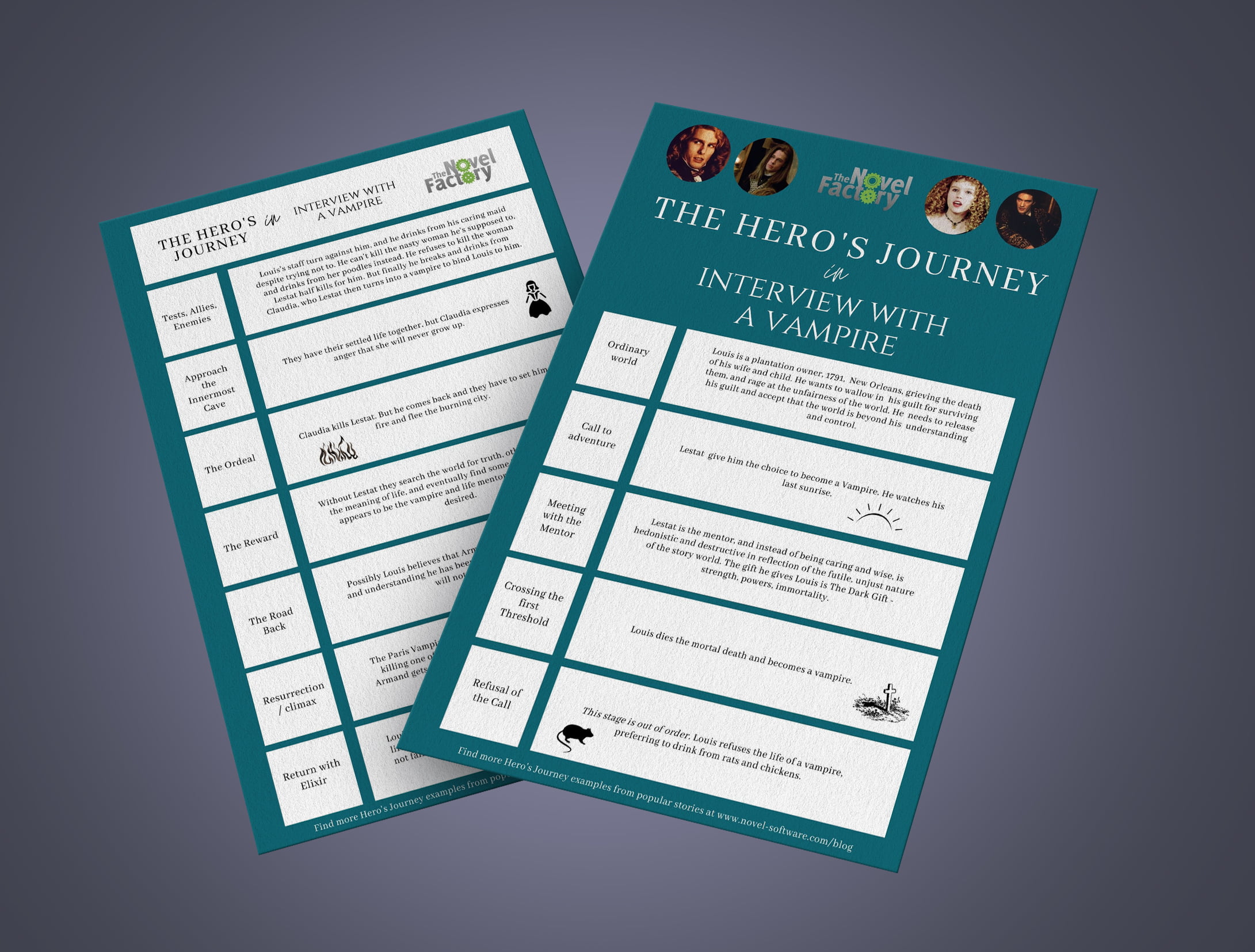
The Hero’s Journey in The Hunger Games
the hero’s journey in interstellar, the hero’s journey in harry potter and the philosopher’s stone, unlock your writing potential.
If you liked this article by the Novel Factory, then why not try the Novel Factory app for writers?
It includes:
- Plot Templates
- Character Questionnaires
- Writing Guides
- Drag & Drop Plotting Tools
- World Building resources
- Much, much more
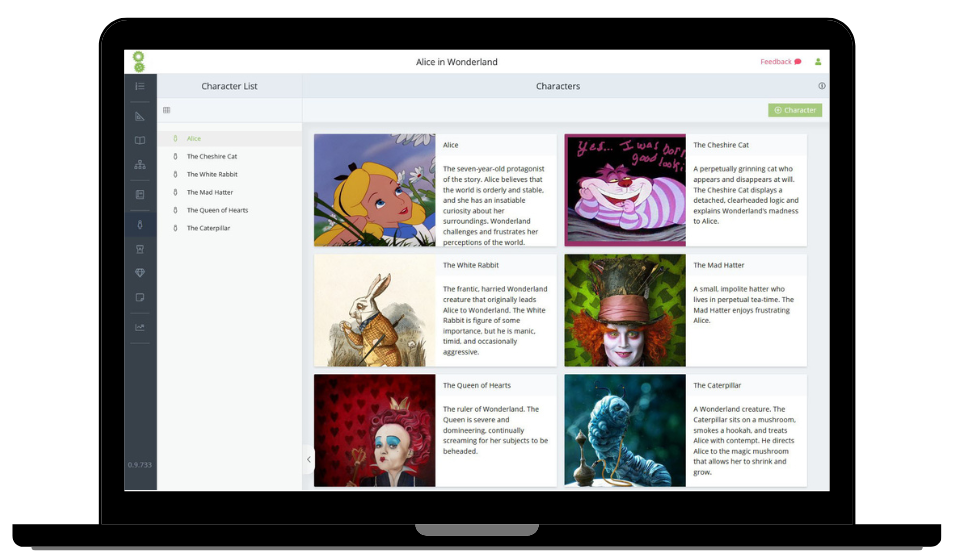
Improve your writing in one of the largest and most successful writing groups online
Join our writing group!
The Hero’s Journey Ultimate Writing Guide with Examples

by Alex Cabal
What do Star Wars , The Hobbit , and Harry Potter have in common? They’re all examples of a story archetype as old as time. You’ll see this universal narrative structure in books, films, and even video games.
This ultimate Hero’s Journey writing guide will define and explore all quintessential elements of the Hero’s Journey—character archetypes, themes, symbolism, the three act structure, as well as 12 stages of the Hero’s Journey. We’ll even provide a downloadable plot template, tips for writing the Hero’s Journey, and writing prompts to get the creative juices flowing.
What is the Hero’s Journey?
The Hero’s Journey is a universal story structure that follows the personal metamorphosis and psychological development of a protagonist on a heroic adventure. The protagonist goes through a series of stages to overcome adversity and complete a quest to attain an ultimate reward—whether that’s something tangible, like the holy grail, or something internal, like self confidence.
In the process of self-discovery, the archetypal Hero’s Journey is typically cyclical; it begins and ends in the same place (Think Frodo leaving and then returning to the Shire). After the epic quest or adventure has been completed by overcoming adversity and conflict—both physical and mental—the hero arrives where they once began, changed in some as they rose to meet the ultimate conflict or ordeal of the quest.
Joseph Campbell and Christopher Vogler
The Hero’s Journey has a long history of conversation around the form and its uses, with notable contributors including Joseph Campbell and the screenwriter Christopher Vogler , who later revised the steps of the Hero’s Journey.
Joseph Campbell’s “monomyth” framework is the traditional story structure of the Hero’s Journey archetype. Campbell developed it through analysis of ancient myths, folktales, and religious stories. It generally follows three acts in a cyclical, rather than a linear, way: a hero embarks on a journey, faces a crisis, and then returns home transformed and victorious.
Campbell’s ideation of the monomyth in his book The Hero With a Thousand Faces was influenced by Carl Jung’s perspective of psychology and models of self-transformation , where the Hero’s Journey is a path of transformation to a higher self, psychological healing, and spiritual growth.
While Campbell’s original take on the monomyth included 17 steps within the three acts, Christopher Vogler, in his book The Writer’s Journey , refined those 17 steps into 12 stages—the common formula for the modern structure many writers use today.
It’s also worth checking out Maureen Murdock’s work on the archetype, “The Heroine’s Journey.” This takes a look at the female Hero’s Journey, which examines the traditionally masculine journey through a feminist lens.
Hero’s Journey diagram: acts, steps, and stages
Below, you can see the way Volger’s Hero’s Journey is broken into twelve story beats across three acts.

Why is the Hero’s Journey so popular?
The structure of the Hero’s Journey appears in many of our most beloved classic stories, and it continues to resonate over time because it explores the concept of personal transformation and growth through both physical and mental trials and tribulations. In some sense, every individual in this mythic structure experiences rites of passage, the search for home and the true authentic self, which is mirrored in a protagonist’s journey of overcoming obstacles while seeking to fulfill a goal.
Additionally, the Hero’s Journey typically includes commonly shared symbols and aspects of the human psyche—the trickster, the mother, the child, etc. These archetypes play a role in creating a story that the reader can recognize from similar dynamics in their own relationships, experiences, and familiar world. Archetypes allow the writer to use these “metaphorical truths”—a playful deceiver, a maternal bond, a person of innocence and purity—to deeply and empathetically connect with the reader through symbolism. That’s why they continue to appear in countless stories all around the world.
Hero’s Journey character archetypes
Character archetypes are literary devices based on a set of qualities that are easy for a reader to identify, empathize with, and understand, as these qualities and traits are common to the human experience.
It should be noted that character archetypes are not stereotypes . While stereotypes are oversimplifications of demographics or personality traits, an archetype is a symbol of a universal type of character that can be recognized either in one’s self or in others in real life.
The following archetypes are commonly used in a Hero’s Journey:
The hero is typically the protagonist or principal point-of-view character within a story. The hero transforms—internally, externally, often both—while on their journey as they experience tests and trials and are aided or hindered by the other archetypes they encounter. In general, the hero must rise to the challenge and at some point make an act of sacrifice for the ultimate greater good. In this way, the Hero’s Journey represents the reader’s own everyday battles and their power to overcome them.
Heroes may be willing or unwilling. Some can be downright unheroic to begin with. Antiheroes are notably flawed characters that must grow significantly before they achieve the status of true hero.
The mentor often possesses divine wisdom or direct experience with the special world, and has faith in the hero. They often give the hero a gift or supernatural aid, which is usually something important for the quest: either a weapon to destroy a monster, or a talisman to enlighten the hero. The mentor may also directly aid the hero or present challenges to them that force internal or external growth. After their meeting, the hero leaves stronger and better prepared for the road ahead.
The herald is the “call to adventure.” They announce the coming of significant change and become the reason the hero ventures out onto a mysterious adventure. The herald is a catalyst that enters the story and makes it impossible for the hero to remain in status quo. Existing in the form of a person or an event, or sometimes just as information, they shift the hero’s balance and change their world.
The Threshold Guardian
This archetype guards the first threshold—the major turning point of the story where the hero must make the true commitment of the journey and embark on their quest to achieve their destiny. Threshold guardians spice up the story by providing obstacles the hero must overcome, but they’re usually not the main antagonist.
The role of the threshold guardian is to help round out the hero along their journey. The threshold guardian will test the hero’s determination and commitment and will drive them forward as the hero enters the next stage of their journey, assisting the development of the hero’s character arc within the plot. The threshold guardian can be a friend who doesn’t believe in the hero’s quest, or a foe that makes the hero question themselves, their desires, or motives in an attempt to deter the hero from their journey. Ultimately, the role of the threshold guardian is to test the hero’s resolve on their quest.
The Shape Shifter
The shape shifter adds dramatic tension to the story and provides the hero with a puzzle to solve. They can seem to be one thing, but in fact be something else. They bring doubt and suspense to the story and test the hero’s ability to discern their path. The shape shifter may be a lover, friend, ally, or enemy that somehow reveals their true self from the hero’s preconceived notion. This often causes the hero internal turmoil, or creates additional challenges and tests to overcome.
The shadow is the “monster under the bed,” and could be repressed feelings, deep trauma, or festering guilt. These all possess the dark energy of the shadow. It is the dark force of the unexpressed, unrealized, rejected, feared aspects of the hero and is often, but not necessarily, represented by the main antagonist or villain.
However, other characters may take the form of the shadow at different stages of the story as “foil characters” that contrast against the hero. They might also represent what could happen if the hero fails to learn, transform, and grow to complete their quest. At times, a hero may even succumb to the shadow, from which they will need to make sacrifices to be redeemed to continue on their overall quest.
The Trickster
The trickster is the jester or fool of the story that not only provides comic relief, but may also act as a commentator as the events of the plot unfold. Tricksters are typically witty, clever, spontaneous, and sometimes even ridiculous. The trickster within a story can bring a light-hearted element to a challenge, or find a clever way to overcome an obstacle.

Hero’s Journey themes and symbols
Alongside character archetypes, there are also archetypes for settings, situations, and symbolic items that can offer meaning to the world within the story or support your story’s theme.
Archetypes of themes, symbols, and situations represent shared patterns of human existence. This familiarity can provide the reader insight into the deeper meaning of a story without the writer needing to explicitly tell them. There are a great number of archetypes and symbols that can be used to reinforce a theme. Some that are common to the Hero’s Journey include:
Situational archetypes
Light vs. dark and the battle of good vs. evil
Death, rebirth, and transformation in the cycle of life
Nature vs. technology, and the evolution of humanity
Rags to riches or vice versa, as commentary on the material world and social status
Wisdom vs. knowledge and innocence vs. experience, in the understanding of intuition and learned experience
Setting archetypes
Gardens may represent the taming of nature, or living in harmony with nature.
Forests may represent reconnection with nature or wildness, or the fear of the unknown.
Cities or small towns may represent humanity at its best and at its worst. A small town may offer comfort and rest, while simultaneously offering judgment; a city may represent danger while simultaneously championing diversity of ideas, beings, and cultures.
Water and fire within a landscape may represent danger, change, purification, and cleansing.
Symbolic items
Items of the past self. These items are generally tokens from home that remind the hero of where they came from and who or what they’re fighting for.
Gifts to the hero. These items may be given to the hero from a mentor, ally, or even a minor character they meet along the way. These items are typically hero talismans, and may or may not be magical, but will aid the hero on their journey.
Found items. These items are typically found along the journey and represent some sort of growth or change within the hero. After all, the hero would never have found the item had they not left their everyday life behind. These items may immediately seem unimportant, but often carry great significance.
Earned rewards. These items are generally earned by overcoming a test or trial, and often represent growth, or give aid in future trials, tests, and conflicts.
The three act structure of the Hero’s Journey
The structure of the Hero’s Journey, including all 12 steps, can be grouped into three stages that encompass each phase of the journey. These acts follow the the external and internal arc of the hero—the beginning, the initiation and transformation, and the return home.
Act One: Departure (Steps 1—5)
The first act introduces the hero within the ordinary world, as they are—original and untransformed. The first act will typically include the first five steps of the Hero’s Journey.
This section allows the writer to set the stage with details that show who the hero is before their metamorphosis—what is the environment of the ordinary world? What’s important to the hero? Why do they first refuse the call, and then, why do they ultimately accept and embark on the journey to meet with the conflict?
This stage introduces the first major plot point of the story, explores the conflict the hero confronts, and provides the opportunity for characterization for the hero and their companions.
The end of the first act generally occurs when the hero has fully committed to the journey and crossed the threshold of the ordinary world—where there is no turning back.
Act Two: Initiation (Steps 6—9)
Once the hero begins their journey, the second act marks the beginning of their true initiation into the unfamiliar world—they have crossed the threshold, and through this choice, have undergone their first transformation.
The second act is generally the longest of the three and includes steps six through nine.
In this act, the hero meets most of the characters that will be pivotal to the plot, including friends, enemies, and allies. It offers the rising action and other minor plot points related to the overarching conflict. The hero will overcome various trials, grow and transform, and navigate subplots—the additional and unforeseen complexity of the conflict.
This act generally ends when the hero has risen to the challenge to overcome the ordeal and receives their reward. At the end of this act, it’s common for the theme and moral of the story to be fully unveiled.
Act Three: Return (Steps 10—12)
The final stage typically includes steps 10—12, generally beginning with the road back—the point in the story where the hero must recommit to the journey and use all of the growth, transformation, gifts and tools acquired along the journey to bring a decisive victory against their final conflict.
From this event, the hero will also be “reborn,” either literally or metaphorically, and then beginning anew as a self-actualized being, equipped with internal knowledge about themselves, external knowledge about the world, and experience.
At the end of the third act, the hero returns home to the ordinary world, bringing back the gifts they earned on their journey. In the final passages, both the hero and their perception of the ordinary world are compared with what they once were.
The 12 steps of the Hero’s Journey
The following guide outlines the 12 steps of the Hero’s Journey and represents a framework for the creation of a Hero’s Journey story template. You don’t necessarily need to follow the explicit cadence of these steps in your own writing, but they should act as checkpoints to the overall story.
We’ll also use JRR Tolkien’s The Hobbit as a literary example for each of these steps. The Hobbit does an exemplary job of following the Hero’s Journey, and it’s also an example of how checkpoints can exist in more than one place in a story, or how they may deviate from the typical 12-step process of the Hero’s Journey.

1. The Ordinary World
This stage in the Hero’s Journey is all about exposition. This introduces the hero’s backstory—who the hero is, where they come from, their worldview, culture, and so on. This offers the reader a chance to relate to the character in their untransformed form.
As the story and character arc develop, the reader is brought along the journey of transformation. By starting at the beginning, a reader has a basic understanding of what drives the hero, so they can understand why the hero makes the choices they do. The ordinary world shows the protagonist in their comfort zone, with their worldview being limited to the perspective of their everyday life.
Characters in the ordinary world may or may not be fully comfortable or satisfied, but they don’t have a point of reference to compare—they have yet to leave the ordinary world to gain the knowledge to do so.
Step One example
The Hobbit begins by introducing Bilbo in the Shire as a respectable and well-to-do member of the community. His ordinary world is utopian and comfortable. Yet, even within a village that is largely uninterested in the concerns of the world outside, the reader is provided a backstory: even though Bilbo buys into the comforts and normalcy of the Shire, he still yearns for adventure—something his neighbors frown upon. This ordinary world of the Shire is disrupted with the introduction of Gandalf—the “mentor”—who is somewhat uncomfortably invited to tea.
2. Call to Adventure
The call to adventure in the Hero’s Journey structure is the initial internal conflict that the protagonist hero faces, that drives them to the true conflict that they must overcome by the end of their journey.
The call occurs within the known world of the character. Here the writer can build on the characterization of the protagonist by detailing how they respond to the initial call. Are they hesitant, eager, excited, refusing, or willing to take a risk?
Step Two example
Bilbo’s call to adventure takes place at tea as the dwarves leisurely enter his home, followed by Gandalf, who identifies Bilbo as the group’s missing element—the burglar, and the lucky 14th member.
Bilbo and his ordinary world are emphasized by his discomfort with his rambunctious and careless guests. Yet as the dwarves sing stories of old adventures, caverns, and lineages, which introduce and foreshadow the conflict to come, a yearning for adventure is stirred. Though he still clings to his ordinary world and his life in the Shire, he’s conflicted. Should he leave the shire and experience the world, or stay in his comfortable home? Bilbo continues to refuse the call, but with mixed feelings.

3. Refusal of the Call
The refusal of the call in the Hero’s Journey showcases a “clinging” to one’s original self or world view. The initial refusal of the call represents a fear of change, as well as a resistance to the internal transformation that will occur after the adventure has begun.
The refusal reveals the risks that the protagonist faces if they were to answer the call, and shows what they’ll leave behind in the ordinary world once they accept.
The refusal of the call creates tension in the story, and should show the personal reasons why the hero is refusing—inner conflict, fear of change, hesitation, insecurity, etc. This helps make their character clearer for the reader.
These are all emotions a reader can relate to, and in presenting them through the hero, the writer deepens the reader’s relationship with them and helps the reader sympathize with the hero’s internal plight as they take the first step of transformation.
Step Three example
Bilbo refuses the call in his first encounter with Gandalf, and in his reaction to the dwarves during tea. Even though Bilbo’s “Tookish” tendencies make him yearn for adventure, he goes to bed that night still refusing the call. The next morning, as Bilbo awakes to an empty and almost fully clean hobbit home, he feels a slight disappointment for not joining the party, but quickly soothes his concerns by enjoying the comfort of his home—i.e. the ordinary world. Bilbo explores his hesitation to disembark from the ordinary world, questioning why a hobbit would become mixed up in the adventures of others, and choosing not to meet the dwarves at the designated location.
4. Meeting the Mentor
Meeting the mentor in the Hero’s Journey is the stage that provides the hero protagonist with a guide, relationship, and/or informational asset that has experience outside the ordinary world. The mentor offers confidence, advice, wisdom, training, insight, tools, items, or gifts of supernatural wonder that the hero will use along the journey and in overcoming the ultimate conflict.
The mentor often represents someone who has attempted to overcome, or actually has overcome, an obstacle, and encourages the hero to pursue their calling, regardless of the hero’s weaknesses or insecurities. The mentor may also explicitly point out the hero’s weaknesses, forcing them to reckon with and accept them, which is the first step to their personal transformation.
Note that not all mentors need to be a character . They can also be objects or knowledge that has been instilled in the hero somehow—cultural ethics, spiritual guidance, training of a particular skill, a map, book, diary, or object that illuminates the path forward, etc. In essence, the mentor character or object has a role in offering the protagonist outside help and guidance along the Hero’s Journey, and plays a key role in the protagonist’s transition from normalcy to heroism.
The mentor figure also offers the writer the opportunity to incorporate new information by expanding upon the story, plot, or backstory in unique ways. They do this by giving the hero information that would otherwise be difficult for the writer to convey naturally.
The mentor may accompany the hero throughout most of the story, or they may only periodically be included to facilitate changes and transformation within them.
Step Four example
The mentor, Gandalf, is introduced almost immediately. Gandalf is shown to be the mentor, firstly through his arrival from—and wisdom of—the outside world; and secondly, through his selection of Bilbo for the dwarven party by identifying the unique characteristics Bilbo has that are essential to overcoming the challenges in the journey. Gandalf doesn’t accompany Bilbo and the company through all of the trials and tribulations of the plot, but he does play a key role in offering guidance and assistance, and saves the group in times of dire peril.

5. Crossing the Threshold
As the hero crosses the first threshold, they begin their personal quest toward self-transformation. Crossing the threshold means that the character has committed to the journey, and has stepped outside of the ordinary world in the pursuit of their goal. This typically marks the conclusion of the first act.
The threshold lies between the ordinary world and the special world, and marks the point of the story where the hero fully commits to the road ahead. It’s a crucial stage in the Hero’s Journey, as the hero wouldn’t be able to grow and transform by staying in the ordinary world where they’re comfortable and their world view can’t change.
The threshold isn’t necessarily a specific place within the world of the story, though a place can symbolize the threshold—for example a border, gateway, or crossroads that separate what is safe and “known” from what is potentially dangerous. It can also be a moment or experience that causes the hero to recognize that the comforts and routine of their world no longer apply—like the loss of someone or something close to the hero, for example. The purpose of the threshold is to take the hero out of their element and force them, and the reader, to adapt from the known to the unknown.
This moment is crucial to the story’s tension. It marks the first true shift in the character arc and the moment the adventure has truly begun. The threshold commonly forces the hero into a situation where there’s no turning back. This is sometimes called the initiation stage or the departure stage.
Step Five example
The threshold moment in The Hobbit occurs when the party experiences true danger as a group for the first time. Bilbo, voted as scout by the party and eager to prove his burglar abilities, sneaks upon a lone fire in the forest where he finds three large trolls. Rather than turn back empty-handed—as he initially wants to—Bilbo chooses to prove himself, plucking up the courage to pickpocket the trolls—but is caught in the process. The dwarves are also captured and fortunately, Gandalf, the mentor, comes to save the party.
Bilbo’s character arc is solidified in this threshold moment. He experiences his first transformation when he casts aside fear and seeks to prove himself as a burglar, and as an official member of the party. This moment also provides further characterization of the party as a whole, proving the loyalty of the group in seeking out their captured member.
Gandalf’s position as the mentor is also firmly established as he returns to ultimately save all of the members of the party from being eaten by trolls. The chapter ends with Bilbo taking ownership of his first hero talisman—the sword that will accompany him through the rest of the adventure.
6. Tests, Allies, Enemies
Once the hero has crossed the threshold, they must now encounter tests of courage, make allies, and inevitably confront enemies. All these elements force the hero to learn the new ways of the special world and how it differs from the hero’s ordinary world—i.e. how the rules have changed, the conditions of the special world vs. the ordinary world, and the various beings and places within it.
All these elements spark stages of transformation within the hero—learning who they can trust and who they can’t, learning new skills, seeking training from the mentor, and overcoming challenges that force and drive them to grow and transform.
The hero may both succeed and fail at various points of this stage, which will test their commitment to the journey. The writer can create tension by making it clear that the hero may or may not succeed at the critical moment of crisis. These crises can be external or internal.
External conflicts are issues that the character must face and overcome within the plot—e.g. the enemy has a sword drawn and the hero must fight to survive.
Internal conflicts occur inside the hero. For example, the hero has reached safety, but their ally is in peril; will they step outside their comfort zone and rise to the occasion and save their friend? Or will they return home to their old life and the safety of the ordinary world?
Tests are conflicts and threats that the hero must face before they reach the true conflict, or ordeal, of the story. These tests set the stage and prime the hero to meet and achieve the ultimate goal. They provide the writer the opportunity to further the character development of the hero through their actions, inactions, and reactions to what they encounter. The various challenges they face will teach them valuable lessons, as well as keep the story compelling and the reader engaged.
Allies represent the characters that offer support to the protagonist along the journey. Some allies may be introduced from the beginning, while others may be gained along the journey. Secondary characters and allies provide additional nuance for the hero, through interactions, events, and relationships that further show who the hero is at heart, what they believe in, and what they’re willing to fight for. The role of the allies is to bring hope, inspiration, and further drive the hero to do what needs to be done.
Enemies represent a foil to the allies. While allies bring hope and inspiration, enemies will provide challenges, conflicts, tests, and challenges. Both allies and enemies may instigate transformative growth, but enemies do so in a way that fosters conflict and struggle.
Characterization of enemies can also enhance the development of the hero through how they interact and the lessons learned through those interactions. Is the hero easily duped, forgiving, empathetic, merciful? Do they hold a grudge and seek revenge? Who is the hero now that they have been harmed, faced an enemy, and lost pieces of their innocent worldview? To answer that, the hero is still transforming and gestating with every lesson, test, and enemy faced along the way.
Step Six example
As the plot of The Hobbit carries on, Bilbo encounters many tests, allies, and enemies that all drive complexity in the story. A few examples include:
The first major obstacle that Bilbo faces occurs within the dark and damp cave hidden in the goblin town. All alone, Bilbo must pluck up the wit and courage to outriddle a creature named Gollum. In doing so, Bilbo discovers the secret power of a golden ring (another hero talisman) that will aid him and the party through the rest of the journey.
The elves encountered after Bilbo “crosses the threshold” are presented as allies in the story. The hero receives gifts of food, a safe place to rest, and insight and guidance that allows the party to continue on their journey. While the party doesn’t dwell long with the elves, the elves also provide further character development for the party at large: the serious dwarf personalities are juxtaposed against the playful elvish ones, and the elves offer valuable historical insight with backstory to the weapons the party gathered from the troll encounter.
Goblins are a recurring enemy within the story that the hero and party must continue to face, fight, and run from. The goblins present consistent challenges that force Bilbo to face fear and learn and adapt, not only to survive but to save his friends.

7. Approach to the Inmost Cave
The approach to the inmost cave of the Hero’s Journey is the tense quiet before the storm; it’s the part of the story right before the hero faces their greatest fear, and it can be positioned in a few different ways. By now, the hero has overcome obstacles, setbacks, and tests, gained and lost allies and enemies, and has transformed in some way from the original protagonist first introduced in the ordinary world.
The moment when the hero approaches the inmost cave can be a moment of reflection, reorganization, and rekindling of morale. It presents an opportunity for the main characters of the story to come together in a moment of empathy for losses along the journey; a moment of planning and plotting next steps; an opportunity for the mentor to teach a final lesson to the hero; or a moment for the hero to sit quietly and reflect upon surmounting the challenge they have been journeying toward for the length of their adventure.
The “cave” may or may not be a physical place where the ultimate ordeal and conflict will occur. The approach represents the momentary period where the hero assumes their final preparation for the overall challenge that must be overcome. It’s a time for the hero and their allies, as well as the reader, to pause and reflect on the events of the story that have already occurred, and to consider the internal and external growth and transformation of the hero.
Having gained physical and/or emotional strength and fortitude through their trials and tests, learned more rules about the special world, found and lost allies and friends, is the hero prepared to face danger and their ultimate foe? Reflection, tension, and anticipation are the key elements of crafting the approach to the cave.
Step Seven example
The approach to the cave in The Hobbit occurs as the party enters the tunnel of the Lonely Mountain. The tunnel is the access point to the ultimate goal—Thorin’s familial treasure, as well as the ultimate test—the formidable dragon Smaug. During this part of the story, the party must hide, plot, and plan their approach to the final conflict. It’s at this time that Bilbo realizes he must go alone to scout out and face the dragon.
8. The Ordeal
The ordeal is the foreshadowed conflict that the hero must face, and represents the midpoint of the story. While the ordeal is the ultimate conflict that the hero knows they must overcome, it’s a false climax to the complete story—there’s still much ground to cover in the journey, and the hero will still be tested after completing this, the greatest challenge. In writing the ordeal phase of the Hero’s Journey, the writer should craft this as if it actually were the climax to the tale, even though it isn’t.
The first act, and the beginning of the second act, have built up to the ordeal with characterization and the transformation of the hero through their overcoming tests and trials. This growth—both internal and external—has all occurred to set the hero up to handle this major ordeal.
As this stage commences, the hero is typically faced with fresh challenges to make the ordeal even more difficult than they previously conceived. This may include additional setbacks for the hero, the hero’s realization that they were misinformed about the gravity of the situation, or additional conflicts that make the ordeal seem insurmountable.
These setbacks cause the hero to confront their greatest fears and build tension for both the hero and the reader, as they both question if the hero will ultimately succeed or fail. In an epic fantasy tale, this may mean a life-or-death moment for the hero, or experiencing death through the loss of an important ally or the mentor. In a romance, it may be the moment of crisis where a relationship ends or a partner reveals their dark side or true self, causing the hero great strife.
This is the rock-bottom moment for the hero, where they lose hope, courage, and faith. At this point, even though the hero has already crossed the threshold, this part of the story shows how the hero has changed in such a way that they can never return to their original self: even if they return to the ordinary world, they’ll never be the same; their perception of the world has been modified forever.
Choosing to endure against all odds and costs to face the ordeal represents the loss of the hero’s original self from the ordinary world, and a huge internal transformation occurs within the hero as they must rise and continue forth to complete their journey and do what they set out to do from the beginning.
The ordeal may also be positioned as an introduction to the greater villain through a trial with a shadow villain, where the hero realizes that the greatest conflict is unveiled as something else, still yet to come. In these instances, the hero may fail, or barely succeed, but must learn a crucial lesson and be metaphorically resurrected through their failure to rise again and overcome the greater challenge.
Step Eight example
Bilbo must now face his ultimate challenge: burgle the treasure from the dragon. This is the challenge that was set forth from the beginning, as it’s his purpose as the party’s 14th member, the burglar, anointed by Gandalf, the mentor. Additional conflicts arise as Bilbo realizes that he must face the dragon alone, and in doing so, must rely on all of the skills and gifts in the form of talismans and tokens he has gained throughout the adventure.
During the ordeal, Bilbo uses the courage he has gained by surmounting the story’s previous trials; he’s bolstered by his loyalty to the group and relies upon the skills and tools he has earned in previous trials. Much as he outwitted Gollum in the cave, Bilbo now uses his wit as well as his magical ring to defeat Smaug in a game of riddles, which ultimately leads Smaug out of the lair so that Bilbo can complete what he was set out to do—steal the treasure.

The reward of the Hero’s Journey is a moment of triumph, celebration, or change as the hero achieves their first major victory. This is a moment of reflection for both the reader and the hero, to take a breath to contemplate and acknowledge the growth, development, and transformation that has occurred so far.
The reward is the boon that the hero learns, is granted, or steals, that will be crucial to facing the true climax of the story that is yet to come. The reward may be a physical object, special knowledge, or reconciliation of some sort, but it’s always a thing that allows for some form of celebration or replenishment and provides the drive to succeed before the journey continues.
Note that the reward may not always be overtly positive—it may also be a double-edged sword that could harm them physically or spiritually. This type of reward typically triggers yet another internal transformation within the hero, one that grants them the knowledge and personal drive to complete the journey and face their remaining challenges.
From the reward, the hero is no longer externally driven to complete the journey, but has evolved to take on the onus of doing so.
Examples of rewards may include:
A weapon, elixir, or object that will be necessary to complete the quest.
Special knowledge, or a personal transformation to use against a foe.
An eye-opening experience that provides deep insight and fundamentally changes the hero and their position within the story and world.
Reconciliation with another character, or with themselves.
No matter what the reward is, the hero should experience some emotional or spiritual revelation and a semblance of inner peace or personal resolve to continue the journey. Even if the reward is not overtly positive, the hero and the reader deserve a moment of celebration for facing the great challenge they set out to overcome.
Step Nine example
Bilbo defeats the dragon at a battle of wits and riddles, and now receives his reward. He keeps the gifts he has earned, both the dagger and the gold ring. He is also granted his slice of the treasure, and the Lonely Mountain is returned to Thorin. The party at large is rewarded for completing the quest and challenge they set out to do.
However, Tolkien writes the reward to be more complex than it first appears. The party remains trapped and hungry within the Mountain as events unfold outside of it. Laketown has been attacked by Smaug, and the defenders will want compensation for the damage to their homes and for their having to kill the dragon. Bilbo discovers, and then hides, the Arkenstone (a symbolic double edged reward) to protect it from Thorin’s selfishness and greed.

10. The Road Back
The road back in the Hero’s Journey is the beginning of the third act, and represents a turning point within the story. The hero must recommit to the journey, alongside the new stakes and challenges that have arisen from the completion of the original goal.
The road back presents roadblocks—new and unforeseen challenges to the hero that they must now face on their journey back to the ordinary world. The trials aren’t over yet, and the stakes are raised just enough to keep the story compelling before the final and ultimate conflict—the hero’s resurrection—is revealed in the middle of the third act.
The hero has overcome their greatest challenge in the Ordeal and they aren’t the same person they were when they started. This stage of the story often sees the hero making a choice, or reflecting on their transformed state compared to their state at the start of the journey.
The writer’s purpose in the third act is not to eclipse the upcoming and final conflict, but to up the stakes, show the true risk of the final climax, and to reflect on what it will take for the hero to ultimately prevail. The road back should offer a glimmer of hope—the light at the end of the tunnel—and should let the reader know the dramatic finale is about to arrive.

Step Ten example
What was once a journey to steal treasure and slay a dragon has developed new complications. Our hero, Bilbo, must now use all of the powers granted in his personal transformation, as well as the gifts and rewards he earned on the quest, to complete the final stages of the journey.
This is the crisis moment of The Hobbit ; the armies of Laketown are prepared for battle to claim their reward for killing Smaug; the fearless leader of their party, Thorin, has lost reason and succumbed to greed; and Bilbo makes a crucial choice based his personal growth: he gives the Arkenstone to the king as a bargaining chip for peace. Bilbo also briefly reconnects with the mentor, Gandalf, who warns him of the unpleasant times ahead, but comforts Bilbo by saying that things may yet turn out for the best. Bilbo then loyally returns to his friends, the party of dwarves, to stand alongside them in the final battle.
11. Resurrection
The resurrection stage of the Hero’s Journey is the final climax of the story, and the heart of the third act. By now the hero has experienced internal and external transformation and a loss of innocence, coming out with newfound knowledge. They’re fully rooted in the special world, know its rules, and have made choices that underline this new understanding.
The hero must now overcome the final crisis of their external quest. In an epic fantasy tale, this may be the last battle of light versus darkness, good versus evil, a cumulation of fabulous forces. In a thriller, the hero might ultimately face their own morality as they approach the killer. In a drama or romance, the final and pivotal encounter in a relationship occurs and the hero puts their morality ahead of their immediate desires.
The stakes are the highest they’ve ever been, and the hero must often choose to make a sacrifice. The sacrifice may occur as a metaphoric or symbolic death of the self in some way; letting go of a relationship, title, or mental/emotional image of the self that a hero once used as a critical aspect of their identity, or perhaps even a metaphoric physical death—getting knocked out or incapacitated, losing a limb, etc.
Through whatever the great sacrifice is, be it loss or a metaphoric death, the hero will experience a form of resurrection, purification, or internal cleansing that is their final internal transformation.
In this stage, the hero’s character arc comes to an end, and balance is restored to the world. The theme of the story is fully fleshed out and the hero, having reached some form of self-actualization, is forever changed. Both the reader and the hero experience catharsis—the relief, insight, peace, closure, and purging of fear that had once held the hero back from their final transformation.
Step Eleven example
All the armies have gathered, and the final battle takes place. Just before the battle commences, Bilbo tells Thorin that it was he who gave the Arkenstone to the city of men and offers to sacrifice his reward of gold for taking the stone. Gandalf, the mentor, arrives, standing beside Bilbo and his decision. Bilbo is shunned by Thorin and is asked to leave the party for his betrayal.
Bilbo experiences a symbolic death when he’s knocked out by a stone. Upon awakening, Bilbo is brought to a dying Thorin, who forgives him of his betrayal, and acknowledges that Bilbo’s actions were truly the right thing to do. The theme of the story is fully unveiled: that bravery and courage comes in all sizes and forms, and that greed and gold are less worthy than a life rich in experiences and relationships.

12. Return with the Elixir
The elixir in the Hero’s Journey is the final reward the hero brings with them on their return, bridging their two worlds. It’s a reward hard earned through the various relationships, tests, and growth the hero has experienced along their journey. The “elixir” can be a magical potion, treasure, or object, but it can also be intangible—love, wisdom, knowledge, or experience.
The return is key to the circular nature of the Hero’s Journey. It offers a resolution to both the reader and the hero, and a comparison of their growth from when the journey began.
Without the return, the story would have a linear nature, a beginning and an end. In bringing the self-actualized hero home to the ordinary world, the character arc is completed, and the changes they’ve undergone through the journey are solidified. They’ve overcome the unknown, and though they’re returning home, they can no longer resume their old life because of their new insight and experiences.
Step Twelve example
The small yet mighty hero Bilbo is accompanied on his journey home by his mentor Gandalf, as well as the allies he gathered along his journey. He returns with many rewards—his dagger, his golden ring, and his 1/14th split of the treasure—yet his greatest rewards are his experience and the friends he has made along the way. Upon entering the Shire Bilbo sings a song of adventure, and the mentor Gandalf remarks, “My dear Bilbo! Something is the matter with you, you are not the hobbit you were.”
The final pages of The Hobbit explore Bilbo’s new self in the Shire, and how the community now sees him as a changed hobbit—no longer quite as respectable as he once was, with odd guests who visit from time to time. Bilbo also composes his story “There and Back Again,” a tale of his experiences, underlining his greatest reward—stepping outside of the Shire and into the unknown, then returning home, a changed hobbit.
Books that follow the Hero’s Journey
One of the best ways to become familiar with the plot structure of the Hero’s Journey is to read stories and books that successfully use it to tell a powerful tale. Maybe they’ll inspire you to use the hero’s journey in your own writing!
The Lord of the Rings trilogy by J. R. R. Tolkien.
The Harry Potter series by J. K. Rowling.
The Earthsea series by Ursula K. Le Guin.
The Odyssey by Homer.
Siddhartha by Herman Hesse.
Pride and Prejudice by Jane Austen.
Writing tips for the Hero’s Journey
Writing a Hero’s Journey story often requires planning beforehand to organize the plot, structure, and events of the story. Here are some tips to use the hero’s journey archetype in a story:
Use a template or note cards to organize and store your ideas. This can assist in ensuring that you tie up any loose ends in the plot, and that the cadence of your story is already outlined before you begin writing.
Use word count goals for writing different sections of your story. This can help you keep pace while you plan and write the first draft. You can always revise, edit, and add in detail at later stages of development, but getting the ideas written without bogging them down with details can assist in preparing your outline, and may perhaps provide additional inspiration and guidance along the way.
Lean into creativity and be flexible with the 12 steps. They don’t need to occur in the exact order we’ve listed above, but that ordering can offer great checkpoint moments for your story.
Invest in characterization and ensure that your main character is balanced with credible strengths and weaknesses. A perfect, pure hero has no room to grow. A one-dimensional villain who relies on the trope of “pure evil” without any motivations for their actions is boring and predictable.
Ensure tension and urgency is woven into the story. An epic tale to the grocery store for baby formula may still be fraught with danger, and the price of failure is a hungry child. Without urgency, tension, and risk, a Hero’s Journey will fall flat.
Be hard on your characters. Give them deep conflicts that truly test their nature, and their mental, physical, and spiritual selves. An easy journey isn’t a memorable one.
Have a balance of scenes that play on both positive and negative emotions and outcomes for the hero to create a compelling plot line that continues to engage your reader. A story that’s relentlessly positive doesn’t provide a pathway for the hero to transform. Likewise, a story that’s nothing but doom, strife, and turmoil, without a light at the end of the tunnel or an opportunity for growth, can make a story feel stagnant and unengaging.
Reward your characters and your reader. Personal transformation and the road to the authentic self may be grueling, but there’s peace or joy at the end of the tunnel. Even if your character doesn’t fully saved the world, they—and the reader—should be rewarded with catharsis, a new perspective, or personal insight at the end of the tale.
Hero’s Journey templates
Download these free templates to help you plan out your Hero’s Journey:
Download the Hero’s Journey template template (docx) Download the Hero’s Journey template template (pdf)
Prompts and practices to help you write your own Hero’s Journey
Use the downloadable template listed below for the following exercises:
Read a book or watch a movie that follows the Hero’s Journey. Use the template to fill in when each step occurs or is completed. Make note of themes and symbols, character arcs, the main plot, and the subplots that drive complexity in the story.
When writing, use a timer set to 2—5 minutes per section to facilitate bursts of creativity. Brainstorm ideas for cadence, plot, and characters within the story. The outline you create can always be modified, but the timer ensures you can get ideas on paper without a commitment; you’re simply jotting down ideas as quickly as you can.
Use the downloadable template above to generate outlines based on the following prompts.
A woman’s estranged mother has died. A friend of the mother arrives at the woman’s home to tell her that her mother has left all her belongings to her daughter, and hands her a letter. The letter details the mother’s life, and the daughter must visit certain places and people to find her mother’s house and all the belongings in it—learning more about her mother’s life, and herself, along the way.
The last tree on earth has fallen, and technology can no longer sustain human life on Earth. An engineer, having long ago received alien radio signals from a tower in their backyard, has dedicated their life to building a spaceship in their garage. The time has come to launch, and the engineer must select a group of allies to bring with them to the stars, on a search for a new life, a new home, and “the others” out there in the universe.
A detective is given a new case: to find a much-talked-about murderer. The twist is, the murderer has sent a letter to the detective agency, quietly outing a homicidal politician who is up for re-election and is a major financial contributor to the police. In the letter, the murderer states that if the politician doesn’t come clean about their crimes, the murderer will kill the politician on the night of the election. The detective must solve the case before the election, and come to terms with their own feelings of justice and morality.
Get feedback on your writing today!
Scribophile is a community of hundreds of thousands of writers from all over the world. Meet beta readers, get feedback on your writing, and become a better writer!
Join now for free

Related articles

The 8 Point Story Arc: What It Is and How to Use This Story Structure

Freytag’s Pyramid: Definitions and Examples of Dramatic Structure

How to End a Story: 7 Different Kinds of Endings

What Are Character Archetypes? 16 Archetypes, Plus Examples

What Are Jungian Archetypes, and How They Can Help Develop Your Characters

What is a Static Character? Definition and Examples
ThinkWritten
The Hero’s Journey: A 17 Step Story Structure Beat Sheet
The Hero’s Journey is a classic plot structure made up of 17 steps. Learn how to craft an epic story using the Hero’s Journey story beats.

We may receive a commission when you make a purchase from one of our links for products and services we recommend. As an Amazon Associate we earn from qualifying purchases. Thank you for support!
Sharing is caring!
The Hero’s Journey is a story structure that tells how a hero starts in one place, goes on an adventure into an unknown world, and then returns to what they started with.
This blog post will explain the 17 steps of the Hero’s Journey and share how you can use this common plot structure to write your own story or novel.
What is the Hero’s Journey?
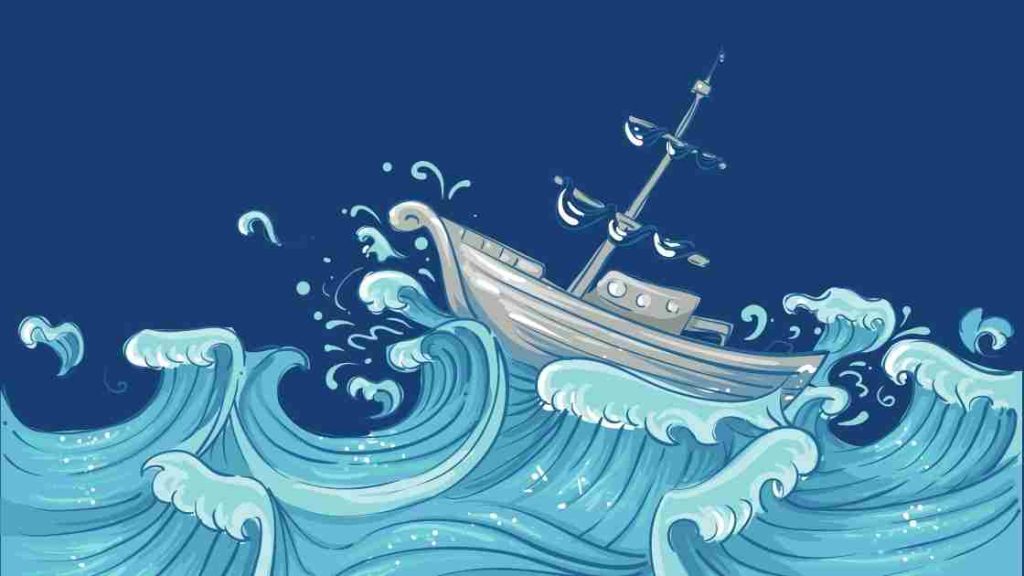
Joseph Campbell first introduced the Hero’s Journey in 1949. It is based on the idea that we can break down most stories into one basic story structure.
The plot structure of the Hero’s Journey is made up of 17 steps, all of which can be excellent guideposts for you when plotting your novel and planning your chapters.
To simplify the 17 steps of the Hero’s Journey, there are 3 main acts of the story: The Departure, The Initiation, and The Return.
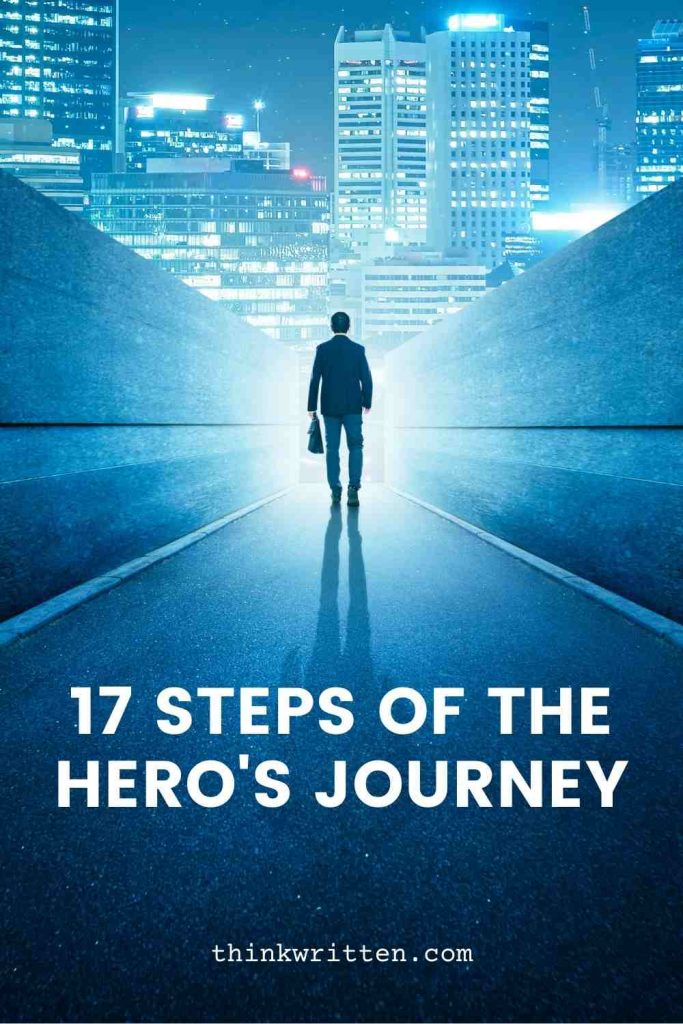
Here’s an overview of all of the 17 steps of Joseph Campbell’s Hero’s Journey:
Act One: The Departure
The Call to Adventure
Refusal of the call, supernatural aid.
- The Crossing of the First Threshold
Belly of the Whale
Act 2: The Initiation :
The Road of Trials
The meeting with the goddess, woman as the temptress, atonement with the father/abyss, the ultimate boon.
Act 3: The Return:
Refusal of the Return
The magic flight, rescue from without, the crossing of the return threshold, master of the two worlds, freedom to live.
In this post, we will cover each step of the Hero’s Journey and what it includes. If you are writing a novel , think of this as the ultimate beat sheet to help you plan and plot your novel !
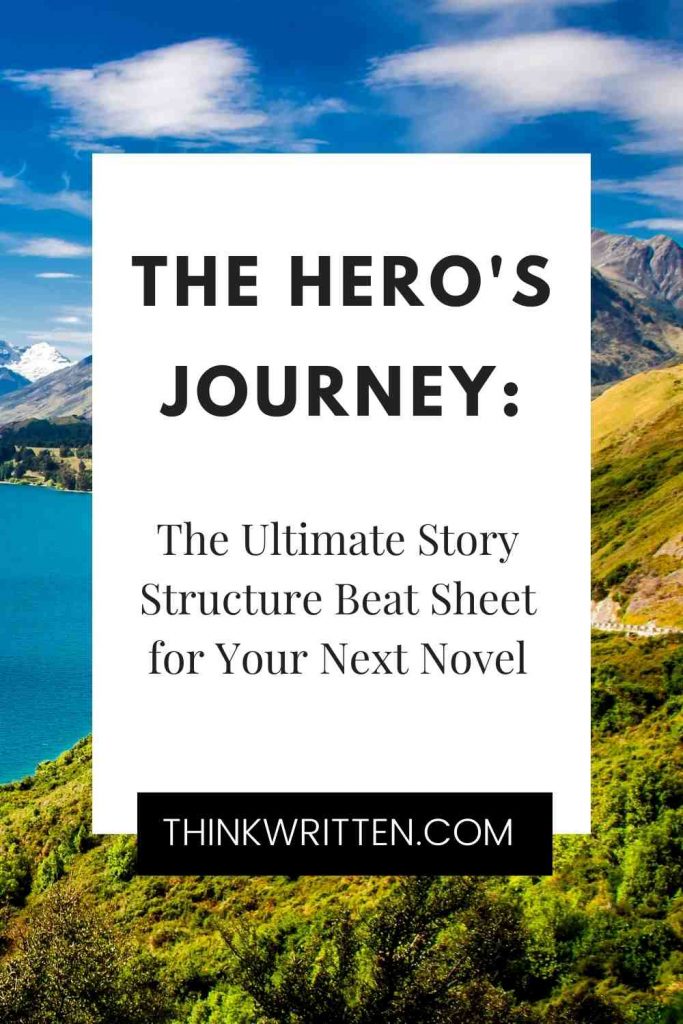
To understand the 17 steps of the hero’s journey, we will share with you exactly what happens in each step and what it should include. We’ve divided the 17 steps into the three main acts: The Departure, The Initiation, and the Return.
Let’s dive on in, shall we?
The Departure

The Departure (Act 1) of the Hero’s Journey is all about your novel’s main characters and their ordinary lives. You want to show how they live before something happens that throws them into a world outside of what was normal for them.
In a nutshell, The Departure is when we see our heroes start in their current environment and set out on an adventure where they leave their comfort zone.
There are 5 steps of the Departure, each of which can help you base your chapters for your novel. Let’s look at these 5 steps in detail.
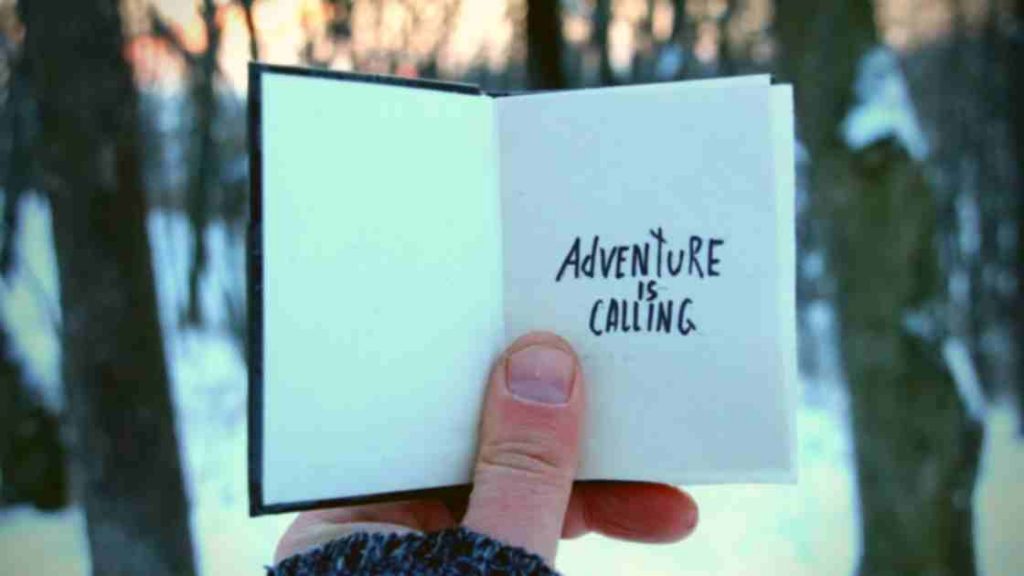
In the first 1 or 2 chapters of our book, our character is introduced and is given the call to adventure. Of course, the call to adventure is what sets our character on their journey. There is a moment when our hero realizes something isn’t right, and it’s time for them to become the hero of their own story.
The Call to Adventure should introduce your main characters and what part of life they are living before things start changing for them. You want this to be a scene that you can use to give your reader an idea of who they are and what their life is like.
The call to adventure is sometimes also called the inciting incident because it often comes from another character or situation in which our hero feels compelled to do something. This could come in the form of a problem or something that they’ve always wanted to accomplish.
Once we understand the character’s life and why they must go on their journey, we move onto the next crucial element: Refusal of the Call.

The Refusal of the Call sounds like it’s a bad thing, but in reality, it can help the hero grow and become more self-sufficient. In this step of the Departure, we see that our character isn’t sure if they are ready for such an adventure.
The refusal of the call is often used as a way for your reader to get more insight into some of your character’s weaknesses. It can also open up the character to seeing what they are missing in their life and get them a little more excited about going after it.
When writing your story, you will show your readers why your hero is reluctant to go on the journey. Why don’t they want to change? What are their fears? This step helps build your character arc, as well as builds some suspense in the story.
You also want to make sure in this step that the refusal of the call is resolved in some way. This can be through another character encouraging your hero or by realizing what they are missing out on if they don’t go on the journey.
Either way, you need to ensure this scene or chapter ends with the hero deciding to accept the challenge.
After your main character decides whether or not they want to go on this journey, we move onto Supernatural Aid.
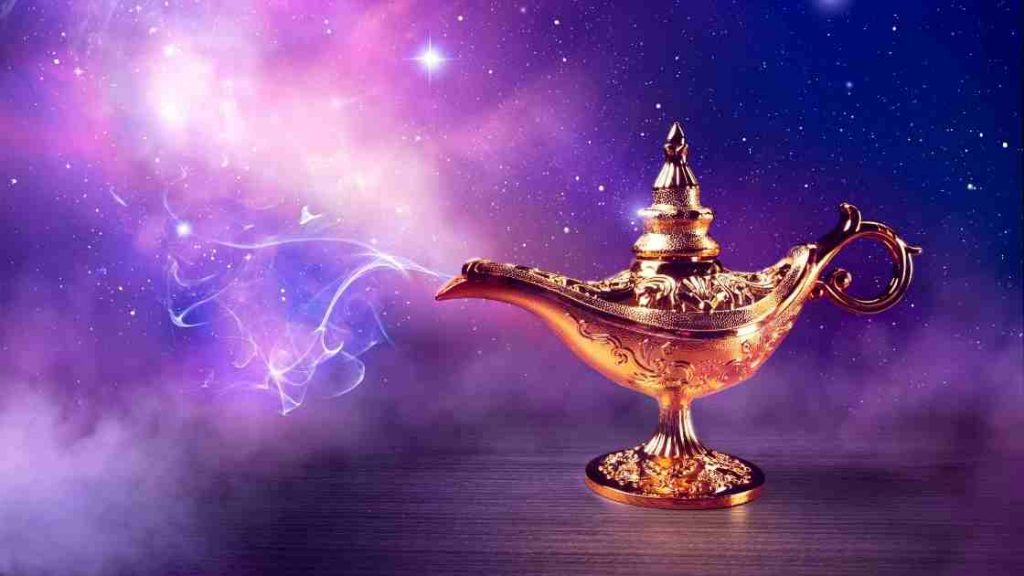
Supernatural aid is the hero’s first experience with a mentor or teacher. While we use the term supernatural here, it does not necessarily have to be some mystical being.
It could be a random stranger giving our hero advice or someone who has been to this magical place before and knows the path. The important thing is this character is someone who will help your protagonist in their journey.
Supernatural aid helps your audience understand there will be obstacles along the way. The hero will need help. You will need a strong supporting character willing to give our main character advice on how they should proceed through their journey.
In this scene, you want to show us why you chose these characters for mentors. What qualities do they possess? Do they have experience with adventures like this? Why can they help the hero, and more importantly, why do they want to help the hero?
Once this person is introduced, we are ready for the next stage of the Hero’s Journey: Crossing the First Threshold.
Crossing the First Threshold
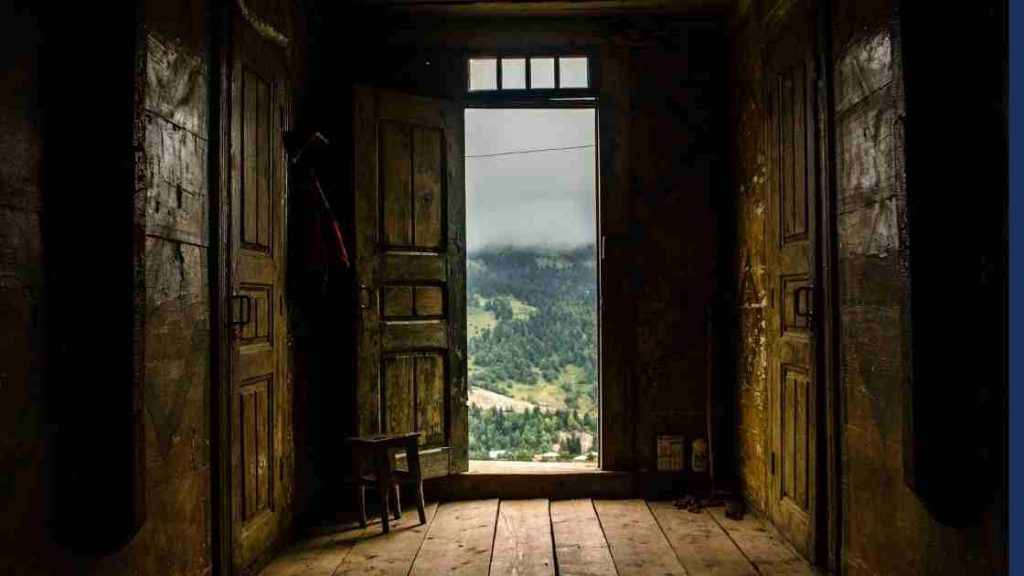
Crossing the first threshold is where your hero commits to going on the journey. They may have made some attempts at it before, but now they are fully committed and ready to go, even if that means leaving their comfort zone behind.
Your character will be doing something different than what they’ve done in the past, or perhaps this act will lead them into a dark and dangerous place.
For example, your hero may leave their home for the first time to go on this journey, or they are finally ready to go and confront someone who has been standing in their way of happiness.
In this 4th step of the Hero’s Journey, you want to show your reader why this is such a big change for the character.
You want to show your character scared and uncertain of what lies ahead for them while still being brave enough to continue on their journey! You don’t need to make this scene too long or spend time explaining every little detail; just put us in the headspace of your hero so we can understand what unknown dangers and fears are ahead.
Once our hero takes their first steps towards danger, we find ourselves in the Belly of the Whale.
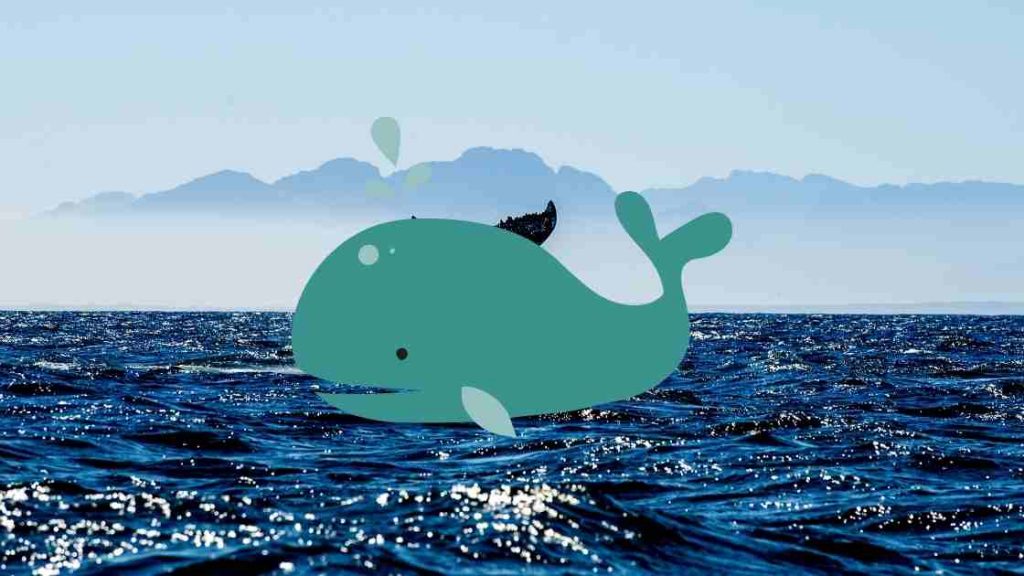
The Belly of the Whale is the last step before the hero breaks away from their normal existence and sense of self. When someone enters this stage, they are showing that they want to change.
A typical element of the Belly of the Whale Scene is displaying a small problem or threat. These problems aren’t the major conflict of the story, but it is enough of an obstacle that we see the hero absolutely cannot go back to where they used to be and must change.
In this scene, it’s common to show a “dark night of the soul.” This is where they feel like everything in their life has been turned upside down, and things seem hopeless. Yet, they must commit to making a change and continuing on their journey in this final step of the Departure stage.
Now that we’ve covered all the steps of the Departure state let’s move onto Act 2: The Initiation.
The Initiation
The second act of our story, the Initiation, is the part where things get interesting. The character is now deeper into their journey and facing new challenges that they must overcome.
Not only are we focusing on our hero’s personal development, but our protagonist’s character traits start to change. They will be showing how they’ve become different from who they were in Act One and developing the traits needed for a successful journey.

The first scene or chapter of the Initiation stage of the Hero’s Journey is The Road of Trials. The Road of Trials is where the protagonist faces a series of tests that your hero must pass to move onto the next stage.
These trials will continue until our hero has shown they are ready for whatever is waiting ahead on their journey and have discovered what lessons they needed to learn along the way.
Usually, there is a series of 3 tests, and your hero will not ace all of them immediately. Sometimes, we will revisit the person introduced as a mentor or guiding force from Act One in these scenes, as the hero will certainly need some support in going through these trials.
In this scene, you want to make sure your reader sees how the hero experiences growth and changes. You want your reader to appreciate how far our hero has come along their journey, but there are still more experiences ahead for them!
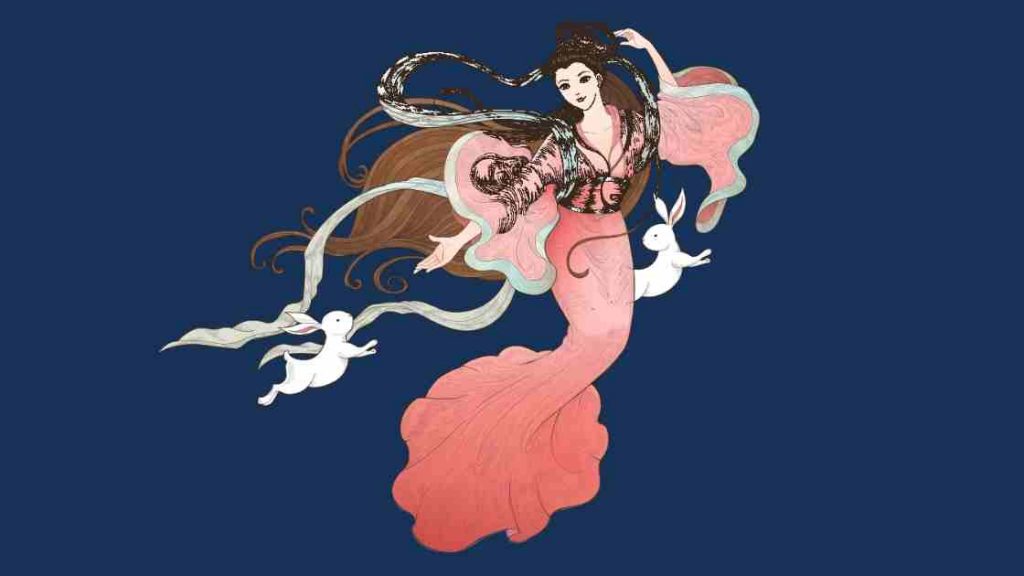
The next step of the Initiation stage is The Meeting with the Goddess/Saviour. This is where we are introduced to someone who will give our protagonist a sense of love, peace, safety, and unity.
This character is essential because they offer our protagonist something he didn’t have before and will be the support that helps them through whatever journey lies ahead. Sometimes they appear as a love interest, but not always.
The Goddess figure is often human but could also be an animal or nature spirit. They are someone who will help your hero become whole again. They are an equal opposite of your hero.
In this scene, we want our hero to feel everything is going to be okay now. They will learn that they don’t need to face their problems alone; someone here with them understands what they are going through.
Of course, this doesn’t last forever as we move into the next chapter: Woman as the Temptress.
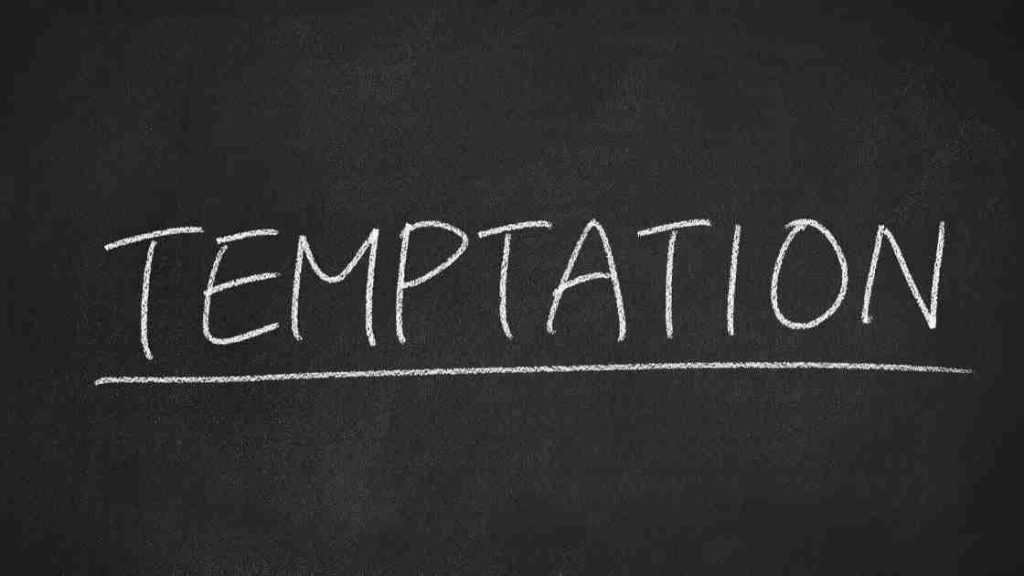
In this next step, the hero faces physical temptations that might cause them to be distracted from their quest. Again, it’s important to understand this does not mean you need to introduce a female character in this scene – the woman is only a metaphorical symbol.
Many things can tempt our heroes to stray from their path. It might be money, power, or fame. It could even be something as simple as food and drink. But, of course, these temptations are not meant actually to distract the protagonist from their path. Our hero must resist them to gain a greater reward at the end of this stage.
Throughout this scene, they may face several such temptations until our hero learns how to resist them and stay focused on what they really want.
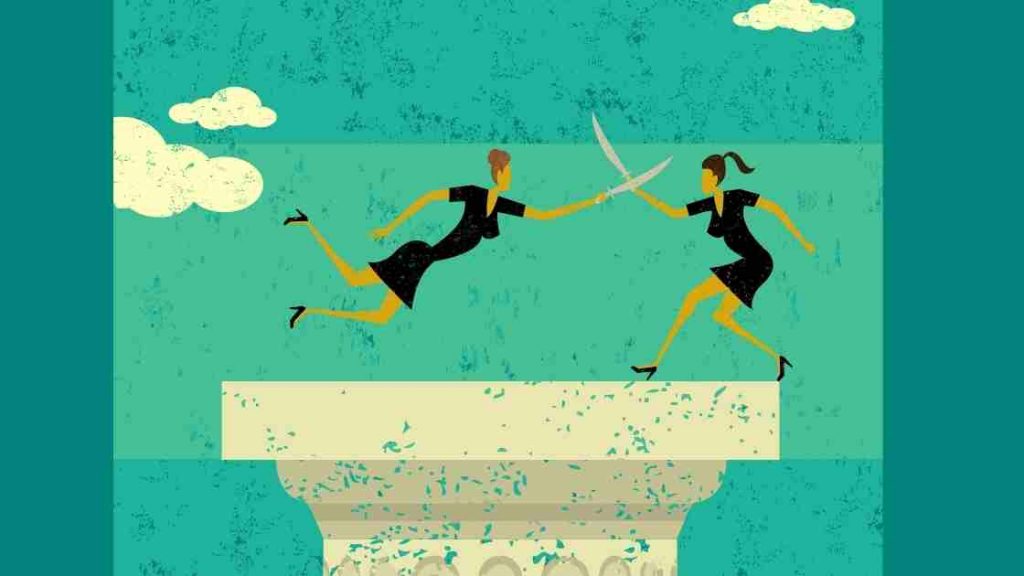
The word Atonement means “reparations for a wrong or injury,” and the Father is a symbol for an authority figure in the hero’s life. Finally, the Abyss represents death or darkness.
In this scene, the hero must confront whatever it is that holds the most power over them. This could be another character or it could even be internal conflict where the hero must come face-to-face with the dark side of their personality and be willing to embrace it.
The goal of this step in the Hero’s Journey is to make your protagonist question their entire being. Only when they confront the most powerful obstacle in their path and reconcile with it can they move forward on their journey.
As with most characters, the father does not have to be an actual father or even a male figure. The important thing is this figure is a person of power and authority over the hero.
There are many ways the hero can reconcile with the father figure – they can defeat this person, win this person’s approval, or reconcile with a part of themselves that is related to the father.
This step is important because it forces your protagonist to face their biggest fears and insecurities. It gives them the opportunity and confidence boost to overcome these obstacles once and for all.
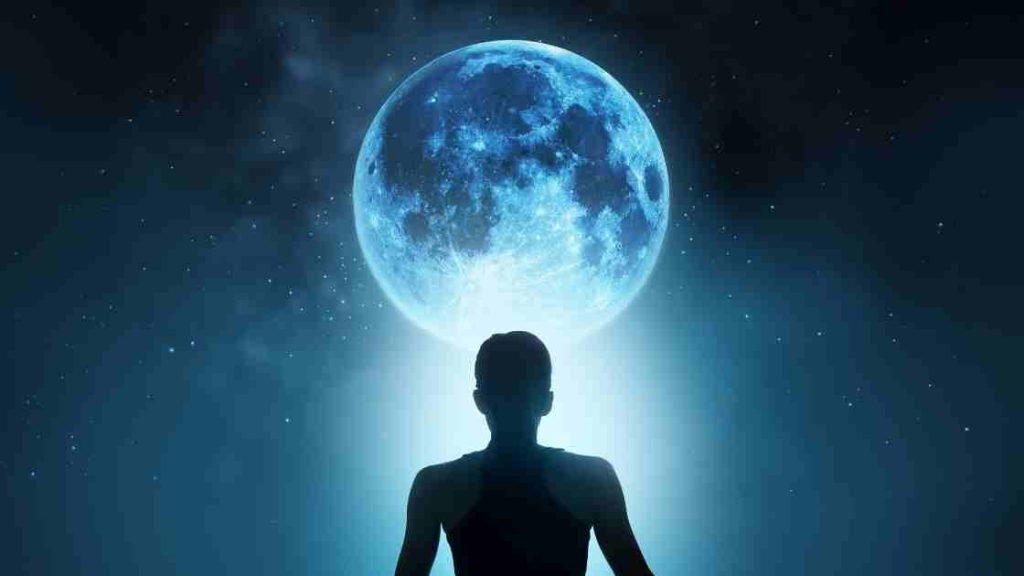
Apotheosis is another word for “the highest point of a person’s spiritual, moral or intellectual development.” It is when the protagonist transcends their humanity and becomes something more than they were before.
In this step of The Hero’s Journey, your protagonist will undergo an important change that brings them closer to being the ideal self they set out to be at the beginning.
In this stage of the Hero’s Journey, our hero learns something new about themselves that prepares them for the hardest part of their journey. This revelation gives them the necessary knowledge to complete their quest.
This step is often referred to as “the answer.” The protagonist will usually gain this new insight from a character who embodies wisdom or spiritual power, such as their mentor figure.
Now that our character has finally grown to where they need to be to accomplish their quest, they are ready for The Ultimate Boon’s next step.

The ultimate boon is the fulfillment of the purpose of the journey. This is when the hero finally achieves what they set out to accomplish.
All of the previous steps of the journey worked to this point to help the hero finally reach their goal.
In mythology, the “boon” is often something otherworldly. It could be the fountain of youth, an ancient scroll with sacred information, or a magical potion.
There are many ways to play out this step of The Hero’s Journey, so your character’s end goal will determine what the boon is.
This step of The Hero’s Journey often includes a battle with something that opposes your protagonist, such as an enemy or villain.
Our heroes might have to face their own dark side to achieve this final prize and complete their journey successfully. This could cause them to question whether or not they even want what the boon is.
When your protagonist achieves this final goal, it marks a major change in their life. Now we are ready to proceed to Act 3: The Return.
Act 3: The Return
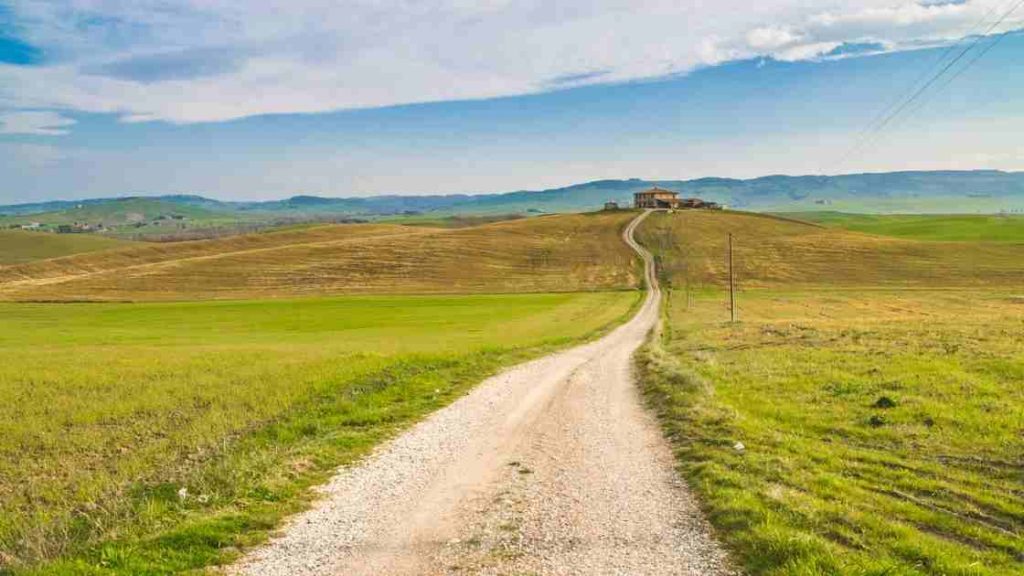
Act Three of the Hero’s Journey often moves faster than the other acts of our story. In The Return, we see how the protagonist’s newfound knowledge and achievement of their goal affect their life and world.
This step of The Hero’s Journey is crucial because it gives us a glimpse as to what our character has learned from this journey, which is the ultimate test of whether they have truly successfully achieved their quest or not.
Let’s dive into the remaining scenes of our story.
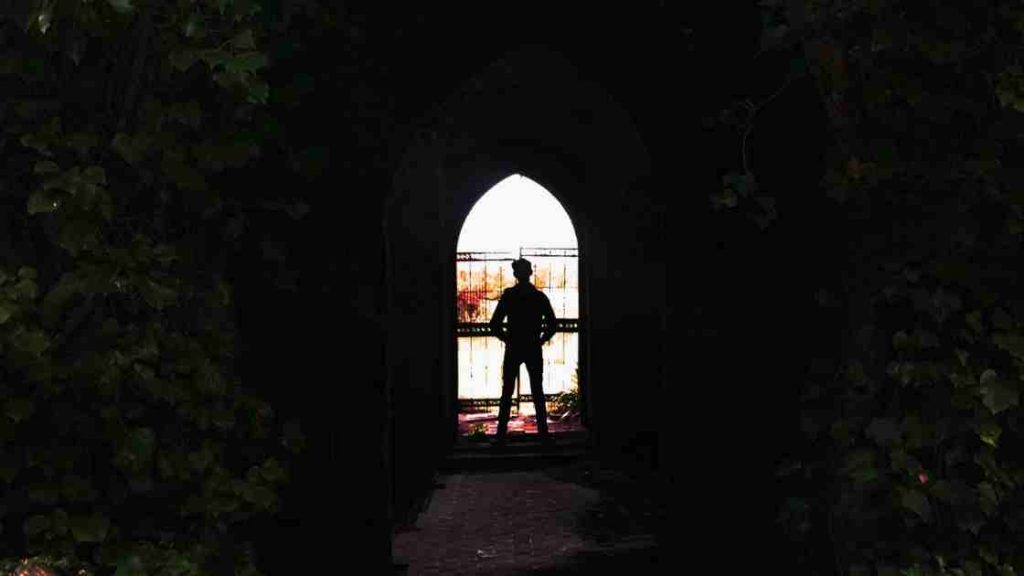
The Refusal of the Return is when our protagonist does not want to return home after achieving their goal. They may be too frightened of what awaits them, or they may not want to give up the new life and world they have found themselves in.
Just as they were hesitant to go on the adventure in the beginning, they are also hesitant to go back.
They may be concerned with how their “boon” might affect the world – such as a magic potion or secret power that could get into the wrong hands. They may worry about what consequences they may face when they go back, or they may be afraid nothing is left for them to return to.
In some cases, our hero doesn’t want to leave because they have become comfortable with their new world and who they have become.
However, to truly finish the quest, our hero must return home. This refusal of return helps build up the tension to the final resolution of the story. This is when the reader questions whether the hero will return home – and wonders with great anticipation of what might happen when it happens.

The Magic Flight is the final conflict to the story where our protagonist must escape danger, sometimes using their newfound knowledge or boon. This is a way of symbolically proving that they have truly learned from this journey and are ready to bring it back home with them.
This part of The Hero’s Journey often involves a chase scene or battle against an opposing force. However, this is the final push necessary push they need to realize they must make the journey home because it becomes apparent they cannot stay where they are.

The Rescue From Without step of the Hero’s Journey is when the protagonist is rescued from danger by an outside source.
This outside source may be an ordinary person, or it might resemble deus ex machina, or god-like intervention, where something rescues our hero from an impossible situation, such as lightning striking that saves the day for our hero.
When you are writing the rescue scene, the circumstances of the rescue must be believable. Most people do not like the deus ex machina in writing simply because it’s too easy.
Those of us who have lived life long enough all know that a magic fairy godmother isn’t going to swoop us in, wave her wand and make all our problems disappear.
After being rescued, the hero truly has no other choice except to return home.

The Crossing of the Return Threshold is when our protagonist finally returns home after completing their adventure and achieving their goal.
This is the part of The Hero’s Journey where we see what they have learned from this journey and how it affects them.
In this story scene, you will want to answer the following questions: How has the hero changed from their journey? How is their old world different from when they left? How do they acclimate to being back home? Finally, how do others react to their return?

This is the part of The Hero’s Journey where our protagonist has reached their full potential. They have overcome their fears and grown in ways they could never have imagined.
They are a new person and have been forever changed by what they’ve experienced. Yet, it allows them to go back into society with heightened wisdom, power, skills, or resources that will help others in need when called upon again.
In this scene, we see the hero apply their knowledge and share it with the world.

After our hero has conquered all of their fears and has put their wisdom to good use, the hero finally has the freedom to do anything they want.
This is the resolution of our story – we see our heroes accomplish their “happily ever after.” Their fears or concerns no longer control them, and nothing exists between them and what they want.
More often than not, this closing chapter of the story gives the reader some closure. We want some type of affirmation that the story is truly complete. We get a glimpse of what our protagonist will do with their life now that they are free to live it.
If you’re looking for a story structure that is proven and effective, the Hero’s Journey might be perfect for you. With 17 stages of development, it will help you create an engaging plot with your readers and develop strong characters .
And of course, while the Hero’s Journey is the classic beat sheet for writers, remember you don’t always have to dedicate one chapter to each step. Sometimes you can combine 2-3 steps in one scene, while other steps might take several chapters to cover.
The important thing is you now know the Hero’s Journey! We hope this is helpful for you – whether you are writing your own novel or studying the Hero’s Journey arc in literature. Most of all, we hope that by breaking down each step of the Hero’s Journey, you can better understand all of it.
Do you have any thoughts or questions on the Hero’s Journey? We’d love to hear from you in the comments section below!
Chelle Stein wrote her first embarrassingly bad novel at the age of 14 and hasn't stopped writing since. As the founder of ThinkWritten, she enjoys encouraging writers and creatives of all types.
Similar Posts

How to Write a Bestseller Novel: 12 Tips
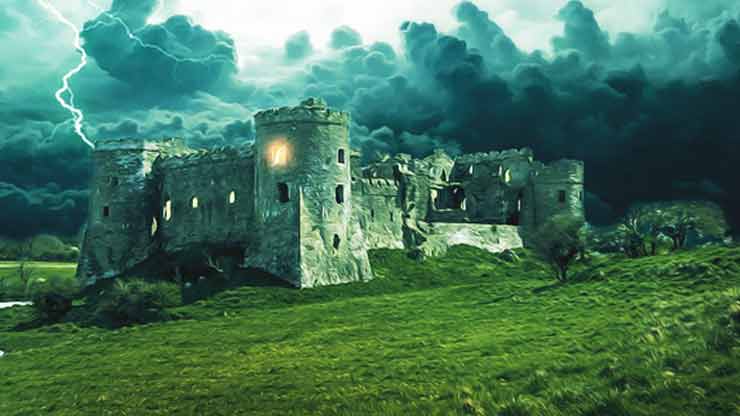
5 Signs of a Strong Novel Plot
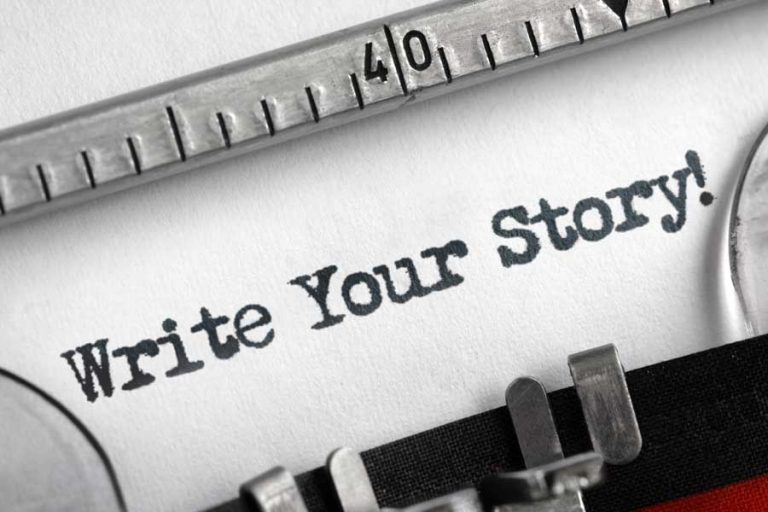
How to Write a Short Story

What is an Antagonist?

How to Outline a Novel Plot in 5 Easy Steps

How to Show – Not Tell – in Your Writing
- Story Writing Guides
12 Hero’s Journey Stages Explained (+ Free Templates)
From zero to hero, the hero’s journey is a popular character development arc used in many stories. In today’s post, we will explain the 12 hero’s journey stages, along with the simple example of Cinderella.
The Hero’s Journey was originally formulated by American writer Joseph Campbell to describe the typical character arc of many classic stories, particularly in the context of mythology and folklore. The original hero’s journey contained 17 steps. Although the hero’s journey has been adapted since then for use in modern fiction, the concept is not limited to literature. It can be applied to any story, video game, film or even music that features an archetypal hero who undergoes a transformation. Common examples of the hero’s journey in popular works include Star Wars, Lord of the Rings, The Hunger Games and Harry Potter and the Philosopher’s Stone.
- What is the hero's journey?
Stage 1: The Ordinary World
Stage 2: call of adventure, stage 3: refusal of the call, stage 4: meeting the mentor, stage 5: crossing the threshold, stage 6: tests, allies, enemies, stage 7: the approach, stage 8: the ordeal, stage 9: reward, stage 10: the road back, stage 11: resurrection, stage 12: return with the elixir, cinderella example, campbell’s 17-step journey, leeming’s 8-step journey, cousineau’s 8-step journey.
- Free Hero's Journey Templates
What is the hero’s journey?
The hero’s journey, also known as the monomyth, is a character arc used in many stories. The idea behind it is that heroes undergo a journey that leads them to find their true selves. This is often represented in a series of stages. There are typically 12 stages to the hero’s journey. Each stage represents a change in the hero’s mindset or attitude, which is triggered by an external or internal event. These events cause the hero to overcome a challenge, reach a threshold, and then return to a normal life.
The hero’s journey is a powerful tool for understanding your characters. It can help you decide who they are, what they want, where they came from, and how they will change over time. It can be used to
- Understand the challenges your characters will face
- Understand how your characters react to those challenges
- Help develop your characters’ traits and relationships

In this post, we will explain each stage of the hero’s journey, using the example of Cinderella.
You might also be interested in our post on the story mountain or this guide on how to outline a book .
12 Hero’s Journey Stages
The archetypal hero’s journey contains 12 stages and was created by Christopher Vogler. These steps take your main character through an epic struggle that leads to their ultimate triumph or demise. While these steps may seem formulaic at first glance, they actually form a very flexible structure. The hero’s journey is about transformation, not perfection.
Your hero starts out in the ordinary world. He or she is just like every other person in their environment, doing things that are normal for them and experiencing the same struggles and challenges as everyone else. In the ordinary world, the hero feels stuck and confused, so he or she goes on a quest to find a way out of this predicament.
Example: Cinderella’s father passes away and she is now stuck doing chores and taking abuse from her stepsisters and stepmother.
The hero gets his or her first taste of adventure when the call comes. This could be in the form of an encounter with a stranger or someone they know who encourages them to take a leap of faith. This encounter is typically an accident, a series of coincidences that put the hero in the right place at the right time.
Example: An invite arrives inviting the family to a royal ball where the Prince will choose a wife.
Some people will refuse to leave their safe surroundings and live by their own rules. The hero has to overcome the negative influences in order to hear the call again. They also have to deal with any personal doubts that arise from thinking too much about the potential dangers involved in the quest. It is common for the hero to deny their own abilities in this stage and to lack confidence in themselves.
Example: Cinderella accepts the call by making her own dress for the ball. However, her stepmother refuses the call for her by not letting her go to the ball. And her step-sisters ruin her dress, so she can not go.
After hearing the call, the hero begins a relationship with a mentor who helps them learn about themselves and the world. In some cases, the mentor may be someone the hero already knows. The mentor is usually someone who is well-versed in the knowledge that the hero needs to acquire, but who does not judge the hero for their lack of experience.
Example: Cinderella meets her fairy godmother who equips her with everything she needs for the ball, including a dress and a carriage.
The hero leaves their old life behind and enters the unfamiliar new world. The crossing of the threshold symbolises leaving their old self behind and becoming a new person. Sometimes this can include learning a new skill or changing their physical appearance. It can also include a time of wandering, which is an essential part of the hero’s journey.
Example: Cinderella hops into the carriage and heads off to the ball. She has transformed from a servant into an elegant young lady.
As the hero goes on this journey, they will meet both allies (people who help the hero) and enemies (people who try to stop the hero). There will also be tests, where the hero is tempted to quit, turn back, or become discouraged. The hero must be persistent and resilient to overcome challenges.
Example: At the ball, Cinderella meets the prince, and even see’s her stepmother and stepsister. She dances with Prince all night long making her step-sisters extremely jealous.
The hero now reaches the destination of their journey, in some cases, this is a literal location, such as a cave or castle. It could also be metaphorical, such as the hero having an internal conflict or having to make a difficult decision. In either case, the hero has to confront their deepest fears in this stage with bravery. In some ways, this stage can mark the end of the hero’s journey because the hero must now face their darkest fears and bring them under control. If they do not do this, the hero could be defeated in the final battle and will fail the story.
Example: Cinderella is having a great time at the ball and nearly forgets about the midnight rule. As she runs away in a hurry, her glass slipper falls off outside the palace.
The hero has made it to the final challenge of their journey and now must face all odds and defeat their greatest adversary. Consider this the climax of the story. This could be in the form of a physical battle, a moral dilemma or even an emotional challenge. The hero will look to their allies or mentor for further support and guidance in this ordeal. Whatever happens in this stage could change the rest of the story, either for good or bad.
Example: Prince Charming looks all over the kingdom for the mysterious girl he met at the ball. He finally visits Cinderella’s house and tries the slippers on the step-sisters. The prince is about to leave and then he sees Cinderella in the corner cleaning.
When the hero has defeated the most powerful and dangerous of adversaries, they will receive their reward. This reward could be an object, a new relationship or even a new piece of knowledge. The reward, which typically comes as a result of the hero’s perseverance and hard work, signifies the end of their journey. Given that the hero has accomplished their goal and served their purpose, it is a time of great success and accomplishment.
Example: The prince tries the glass slipper on Cinderella. The glass slipper fits Cinderella perfectly, and they fall in love.
The journey is now complete, and the hero is now heading back home. As the hero considers their journey and reflects on the lessons they learned along the way, the road back is sometimes marked by a sense of nostalgia or even regret. As they must find their way back to the normal world and reintegrate into their former life, the hero may encounter additional difficulties or tests along the way. It is common for the hero to run into previous adversaries or challenges they believed they had overcome.
Example: Cinderella and Prince Charming head back to the Prince’s castle to get married.
The hero has one final battle to face. At this stage, the hero might have to fight to the death against a much more powerful foe. The hero might even be confronted with their own mortality or their greatest fear. This is usually when the hero’s true personality emerges. This stage is normally symbolised by the hero rising from the dark place and fighting back. This dark place could again be a physical location, such as the underground or a dark cave. It might even be a dark, mental state, such as depression. As the hero rises again, they might change physically or even experience an emotional transformation.
Example: Cinderella is reborn as a princess. She once again feels the love and happiness that she felt when she was a little girl living with her father.
At the end of the story, the hero returns to the ordinary world and shares the knowledge gained in their journey with their fellow man. This can be done by imparting some form of wisdom, an object of great value or by bringing about a social revolution. In all cases, the hero returns changed and often wiser.
Example: Cinderella and Prince Charming live happily ever after. She uses her new role to punish her stepmother and stepsisters and to revitalise the kingdom.
We have used the example of Cinderella in Vogler’s hero’s journey model below:

Below we have briefly explained the other variations of the hero’s journey arc.
The very first hero’s journey arc was created by Joseph Campbell in 1949. It contained the following 17 steps:
- The Call to Adventure: The hero receives a call or a reason to go on a journey.
- Refusal of the Call: The hero does not accept the quest. They worry about their own abilities or fear the journey itself.
- Supernatural Aid: Someone (the mentor) comes to help the hero and they have supernatural powers, which are usually magical.
- The Crossing of the First Threshold: A symbolic boundary is crossed by the hero, often after a test.
- Belly of the Whale: The point where the hero has the most difficulty making it through.
- The Road of Trials: In this step, the hero will be tempted and tested by the outside world, with a number of negative experiences.
- The Meeting with the Goddess: The hero meets someone who can give them the knowledge, power or even items for the journey ahead.
- Woman as the Temptress: The hero is tempted to go back home or return to their old ways.
- Atonement with the Father: The hero has to make amends for any wrongdoings they may have done in the past. They need to confront whatever holds them back.
- Apotheosis: The hero gains some powerful knowledge or grows to a higher level.
- The Ultimate Boon: The ultimate boon is the reward for completing all the trials of the quest. The hero achieves their ultimate goal and feels powerful.
- Refusal of the Return: After collecting their reward, the hero refuses to return to normal life. They want to continue living like gods.
- The Magic Flight: The hero escapes with the reward in hand.
- Rescue from Without: The hero has been hurt and needs help from their allies or guides.
- The Crossing of the Return Threshold: The hero must come back and learn to integrate with the ordinary world once again.
- Master of the Two Worlds: The hero shares their wisdom or gifts with the ordinary world. Learning to live in both worlds.
- Freedom to Live: The hero accepts the new version of themselves and lives happily without fear.
David Adams Leeming later adapted the hero’s journey based on his research of legendary heroes found in mythology. He noted the following steps as a pattern that all heroes in stories follow:
- Miraculous conception and birth: This is the first trauma that the hero has to deal with. The Hero is often an orphan or abandoned child and therefore faces many hardships early on in life.
- Initiation of the hero-child: The child faces their first major challenge. At this point, the challenge is normally won with assistance from someone else.
- Withdrawal from family or community: The hero runs away and is tempted by negative forces.
- Trial and quest: A quest finds the hero giving them an opportunity to prove themselves.
- Death: The hero fails and is left near death or actually does die.
- Descent into the underworld: The hero rises again from death or their near-death experience.
- Resurrection and rebirth: The hero learns from the errors of their way and is reborn into a better, wiser being.
- Ascension, apotheosis, and atonement: The hero gains some powerful knowledge or grows to a higher level (sometimes a god-like level).
In 1990, Phil Cousineau further adapted the hero’s journey by simplifying the steps from Campbell’s model and rearranging them slightly to suit his own findings of heroes in literature. Again Cousineau’s hero’s journey included 8 steps:
- The call to adventure: The hero must have a reason to go on an adventure.
- The road of trials: The hero undergoes a number of tests that help them to transform.
- The vision quest: Through the quest, the hero learns the errors of their ways and has a realisation of something.
- The meeting with the goddess: To help the hero someone helps them by giving them some knowledge, power or even items for the journey ahead.
- The boon: This is the reward for completing the journey.
- The magic flight: The hero must escape, as the reward is attached to something terrible.
- The return threshold: The hero must learn to live back in the ordinary world.
- The master of two worlds: The hero shares their knowledge with the ordinary world and learns to live in both worlds.
As you can see, every version of the hero’s journey is about the main character showing great levels of transformation. Their journey may start and end at the same location, but they have personally evolved as a character in your story. Once a weakling, they now possess the knowledge and skill set to protect their world if needed.
Free Hero’s Journey Templates
Use the free Hero’s journey templates below to practice the skills you learned in this guide! You can either draw or write notes in each of the scene boxes. Once the template is complete, you will have a better idea of how your main character or the hero of your story develops over time:
The storyboard template below is a great way to develop your main character and organise your story:

Did you find this guide on the hero’s journey stages useful? Let us know in the comments below.

Marty the wizard is the master of Imagine Forest. When he's not reading a ton of books or writing some of his own tales, he loves to be surrounded by the magical creatures that live in Imagine Forest. While living in his tree house he has devoted his time to helping children around the world with their writing skills and creativity.
Related Posts
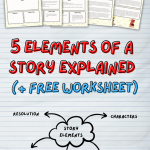
Comments loading...
Hero’s Journey Themes: 5 Essential Themes That Will Thrill Your Readers
by David Safford | 0 comments
Start Your Story TODAY! We’re teaching a new LIVE workshop this week to help you start your next book. Learn more and sign up here.
They say opposites attract. That holds true, even in a Hero's Journey story. But what are some Heroes' Themes that your readers might like in your story? How can you apply them?
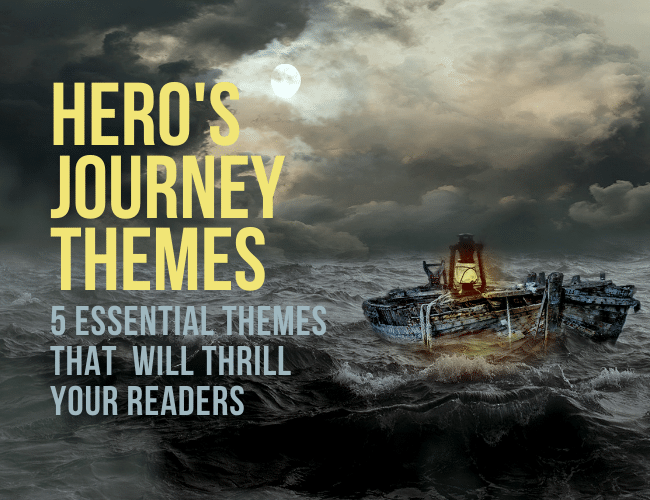
While you may craft opposing characters who find themselves attracted to one another, you would be wise to study these universal relationships—also known as themes—that great stories have utilized for generations to the benefit of their readers.
In this article, you'll learn five essential Hero's Journey themes that will thrill your readers and transform your stories into best sellers!
What Is a Hero's Journey Theme?
As we get started, let's define just what kind of “relationship” we're talking about here.
In a Hero's Journey, a symbolic relationship is a Situational Archetype that tends to recur throughout storytelling history. It is a situation in which two different characters or forces are symbolically set in opposition to one another, mirroring the way opposing forces tend to collide, harmonize, and balance over time in the real world.
The beauty of these Situational Relationships is that they function like the utilities of a well-constructed building: They're invisible. Only a reader with a trained eye will be able to detect your intentions.
Another benefit of using these Situational Relationships is that they resonate with readers of all ages and backgrounds. They are simple and easy to understand.
They're also commonly known as themes , driving concepts underpinning stories from start to finish.
Yet they are inherently ripe with opportunity for deep exploration and clever innovation. That's why, after explaining each of these key themes, I'll provide some “Tips for Innovation” so you can hit the ground running with these essential archetypes!
5 Hero's Journey Themes Readers Love
Ready for the five Hero's Journey themes? Let's get started!
1. Good vs. Evil
Perhaps the most obvious Situational Archetype is the classic dichotomy between the forces of Good and the forces of Evil. This trope has been successfully used by storytellers like George Lucas and classic Western authors to great success.
In this theme, your protagonist and their companions are on the side of Good. They defend values such as Freedom, Compassion, Justice, and Mercy.
What they ultimately represent, though, is Selflessness. These are the kind of people who would sacrifice their desires, and even their own lives, for the sake of others. That is what we have come to define as “Good.”
“Evil,” therefore, stands opposite to this. Evil embraces control, pain, injustice, and cruelty, all for the sake of acquiring as much land, power, or wealth as possible. Evil is ultimately self-serving. This is why we tend to raise our children to be selfless, or “Good,” rather than destructively selfish, or “Bad.”
By aligning your protagonists with virtues of “Good” and your Shadow, Threshold Guardians, and Devil Figure with sins of “Evil,” you lay a moral foundation for your story that will make innate sense to your reader. Everyone knows, to an extent, what kind of behavior is “good” and “bad.” By connecting your characters to various virtues and vices, you can build your story's world by using age-old assumptions about right and wrong.
An easily identifiable example here is Luke Skywalker in Star Wars, who represents a positive, selfless use of the almighty Force. This is contrasted against Darth Vader and the Emporer, both of whom use the Force for control, power, and destruction.
How to Innovate
While coordinating your characters' morality along the lines of Good and Evil is a fine starting point, you'd be wise to complicate things just a little. If you're familiar with older television shows that had to conform to strict content guidelines, you know that stories with clearly defined morals of Good and Evil can come off as inauthentic or even cheesy.
That's why it's wise to complicate your characters with some moral “gray area.”
In practice, this “gray area” means blending Good traits with Evil ones. For example, your heroic, selfless Hero may struggle with some amount of selfishness (like fear or an instinct for self-preservation). This struggle is believable and easily related to by your reader.
Similarly, complicate your villains with some “Good” traits. It is often these enduring traits, like kindness or loyalty, that make readers fall in love with despicable characters, like Darth Vader and Hannibal Lecter.
Then there are characters whose moral compass is wildly uncertain. Known as the Shapeshifter, this character will often swing back and forth between Good and Evil traits, ultimately choosing between selflessness and selfishness.
Several beloved characters of this variety are Captain Jack Sparrow in Pirates of the Caribbean, and Bucky “Winter Soldier” Barnes in Marvel's Captain America: Civil War. Some of the best anti-heroes explore all sides of the good-evil dichotomy, creating wildly intriguing conversations about morality.
2. Haven vs. Wilderness
It isn't just characters that should find themselves sorted between two opposing forces. Settings should, too.
The ultimate purpose of your story's setting is to provide textured resistance to your Hero's pursuit of the goal. While it may often be beautiful, it should always be dangerous. And while your settings may include pockets of safety and security, those pockets must be under threat or limited to a deadline.
Put simply, locations in your world exist on a spectrum stretching between Haven and Wilderness.
A Haven is a place of safety and restoration. Not only will your Hero needs moments to pause and restore their supplies and spirit, but your reader needs these locations as well. Haven settings function as waypoints. They are often locations the Hero travels to in order to find a clue or tool that helps on the journey.
And while a Haven may be a place of relative safety, it must always be under threat from within or without. The enemy is not far behind. A spy lurks within. Or a ticking clock forces the Hero to quickly move on.
Then the Hero resumes their journey into the Wild. And the Wilderness can be both a physical one (desert, tundra, the vacuum of space, a swamp, the depths of an uncharted forest) and a spiritual one (loneliness, being a foreigner, exile, guilt).
Ideally your story takes the Hero into and through both kinds of locations with the intensity (and resistance to the journey) increasing with every foray into the Wilderness.
One can easily spot the difference between Haven and Wilderness in The Hunger Games, as Katniss Everdeen is cast out of the cozy Capitol into the wild to survive a horrific act of bloodsport. A fun inversion here, however, is that while the Arena is far more dangerous than the Capitol, Katniss is somewhat more at home there, given her survival instincts gleaned from years of scrapping out a living in District 12. Sometimes these apparent contradictions can play to your advantage as a storyteller!
Readers like to be surprised within the safe context of the familiar. Consider ways that traditional “Havens” might be wild and dangerous (especially for introverted or outdoorsy types) and the “Wild” might be a comfortable Haven.
Many storytellers have found ways to explore the ways that humanity and its creations (machines, the city) can be alienating and deadening. Whenever you flip these locations on their heads, you aim to give the reader a fresh experience.
Just make sure that your Wilderness always resists the Hero's pursuit of the goal. That is what distinguishes Haven from Wilderness. A Haven restores, while the Wild resists.
3. Nature vs. Machine
This Hero's Journey trope is incredibly popular and widely used. Have you ever noticed that the good guys are often outgunned? And have you ever noticed that the good guys, to overcome these incredible odds, will rely on clever uses of nature to win?
Many stories do this, from Indiana Jones to Avatar to The Lord of the Rings .
These stories use this theme because it works. There's something cathartic about the Ents overthrowing Isengard or Indiana Jones taking down a German tank with nothing but a whip, a rock, and his grit.
In the world of your story, Nature is usually represented by trees and animals. Machine, meanwhile, is usually some mechanized weapon, like a tank, helicopter, plane, or some other unnatural creation of man.
This theme represents a harsh truth that many readers know: Man is painfully effective at destroying nature. Through deforestation, pollution, rising ocean temperatures, mass extinctions, and more, mankind is leaving a deathly footprint on the earth.
Yet even as we all consciously or unconsciously contribute to various natural disasters, we innately want earth to win. Nature, after all, is beautiful. Trees and mountains and horses and sunsets are beautiful. Tanks, while “cool,” are not beautiful.
The obvious way to implement this theme is through battle.
But there are more subtle ways to bring the reality of this dichotomy into your story.
One way this happens is through spirituality. When a character acts in faith, rather than reliance on technology, the effect is immediate: Audiences love it. Think of the end of Star Wars when Luke uses the Force to destroy the Death Star, rather than his targeting computer. It's awesome.
You can also layer this conflict in your story's world through setting description. What kind of violence or destruction against nature is occuring? How is this affecting the characters as they pursue their own goals?
Or, possibly consider writing a story where mankind's attempts to control nature (through machines, of course) fail and go horribly wrong? This especially works when the characters are mindful of this theme and the havoc it wreaks. That's why Jurassic Park is so beloved over its woeful sequels. It actually dares to ask the tough questions about man, his love of mechanical control, and the wild power of nature to defy anything that would control it.
Finally, try to structure your characters as occupants of opposite cultures or time periods.
This is one of the ways Pixar's Toy Story cleverly sets Woody and Buzz against each other. Woody represents a classic, beloved time of American history when westward expansion represented optimism and discovery; the films of the 1950s crystallized this sentiment into the persona of John Wayne.
Yet in the 1970s, science fiction stories and their heroes began to supplant the Western as the genre of choice, and soon space toys were all the rage while cowboys bit the dust. Such is the inherent conflict when Woody sees Buzz Lightyear, a flashy space toy, literally take his place on Andy's bed, and later in Andy's heart.
4. Parent vs. Child
I don't care how great your father or mother is. There is probably something about them that drives you crazy.
That's the heart of this crucial relationship. Since fathers and sons (and mothers and daughters) are cut from the same genetic cloth, there will always be reason for conflict and reconciliation.
In a Hero's Journey, this can appear in two ways:
- Your hero is the child
- Your hero is the parent
For examples of the Hero being the child, think of Star Wars , Indiana Jones , or Pixar's Brave .
For examples of the Hero being the parent, think of The Odyssey , Freaky Friday , or (one of my absolute favorites) Arrival .
The key is that usually both the Hero and their parent (or child) are both Good. Yet they differ in traits that are Good, and also differ in complicating Evil traits as well. These differing values create the difference that result in the conflict that we all know so well from our own lives.
The best way to innovate within this theme is to be willing to explore multiple points of view. This is why Freaky Friday is a beloved coming-of-age comedy.
Another crucial method of innovation is to avoid age-specific stereotypes. This will reduce your Parent vs. Child relationship to mere name-calling that never penetrates the surface of your characters.
Age, and the experiences that go with it, are entirely relative to each and every individual who has ever lived. No son or daughter feels ignorant, emotional, immature, or unbalanced. In their mind, everything makes complete sense.
And similarly, no father or mother feels strict, cranky, unfair, or uncool (well, maybe some do), but not in the way they might be labeled as such by their frustrated children.
In a nutshell, everyone is trapped in their own experience and merits empathy. Everyone has unique motivators that make complete sense in their own heads. That's why you, as the storyteller, need to consider how to give each point of view its own valid weight. Otherwise your story might devolve into stereotypes and assumptions about whatever age group you feel is in the wrong.
5. Sibling vs. Sibling
Whether by birth by adoption, siblinghood is the perfect dynamic for conflict.
Guardians of the Galaxy and The Avengers benefited from sibling angst, as the conflict between Nebula and Gamora anchors the plots of multiple films. Shakespeare centered the conflict of King Lear around warring sisters and brothers.
Just as parents and their children share enough traits to call themselves “family” but enough differences to become enemies, siblings experience the same conflict but with an added twist: Competition.
Rarely do parents and children compete for the same prizes. While parents are busy trying to make money, their kids are trying to win sports competitions, love, or God-knows-what. But two siblings can easily compete for the same pretty girl's or guy's affections. Both can easily go to war over the same stockpile of scholarships.
That's why we've all heard of sibling rivalry.
And it begins young. Several years ago, my daughter had to learn to share time, food, toys, and her parents' affections with her baby brother. It took the little guy quite a while to learn how to say “Please” and “Thank you.” She had to do all the heavy (sacrificial) lifting in their relationship. It's by God's grace alone that she didn't try to sell him on Ebay!
Centering your story's conflict around two feuding siblings taps into age-old tension that your readers will understand quite well. It's also something you can use for side characters (like Nebula and Gamora in Guardians of the Galaxy ), villainous henchmen, or the primary antagonist of the story (Thor's sister in Ragnarock ).
Perhaps the most overused version of this relationship pits brother against brother as enemies. This dates back to myths of Oedipus's children, when his sons kill each other in civil war.
And while the siblings-as-protagonist-and-antagonist form can still be relevant, it may be far more interesting to your reader to put both siblings on the same side and force them to work together. How will they overcome their individual ambitions to achieve a common goal? How will they maneuver the challenges and conflicts of varying traits (some of which are self-serving, or “Evil”) in order to stay united?
This duel-protagonist structure can work with brothers, sisters, or both. Avengers: Age of Ultron had it both ways, as Scarlet Witch and Quicksilver are twins recruited to fight the Avengers, only to be recruited to the side of “Good” before the story's end.
Bonus Theme: Bravery vs. Cowardice
There are an infinite number of thematic relationships your stories can explore, and I can't possibly cover them all here. But perhaps one very noteable one comes from acclaimed author Robert Cormier in his young adult novel Heroes.
Considered Cormier's darkest novel, Heroes asks questions about the nature of heroism and cowardice, two opposing forces that regularly clash in the human heart. Protagonist Francis Cassavant experiences both traits, namely when he tries to kill himself during World War II by falling on a grenade; however, the explosion doesn't kill him, only severly deforming his face. Yet the cowardly act ended up saving the lives of his fellow soldiers, and for this Francis is awarded a silver star.
More moments of stark contrast between bravery and dereliction of duty occur in flashbacks to Francis' childhood in Frenchtown, Massachussetts. When a friend of Francis's, Larry LaSalle, sexually assaults a love interest at the neighborhood hangout called the “Wreck Centre,” Francis fails to intervene and put a stop to the horrific situation. The moment sets him on the path toward revenge that concludes in ways the reader can't possibly predict, forcing Francis and Larry to take responsibility for their actions.
Like Cormier's Heroes, your writing needs to explore the dual nature of life's starkest contrasts. But perhaps what is so essential, and so challenging, is harnessing the English language to depict how these contradictions often coexist within our hearts at the same precise moment.
Love and Hate. Joy and Sadness. Amazement and Horror.
These polar opposites are always coming together in the most intense moments of life. Just as Cormier utilized his Heroes themes to ask near-impossible questions about Heroism and Cowardice, you can assemble thematic situations to ask your own questions.
Opposites Are Attractive to Your Readers
Each of these themes takes two similar things and shows the contrast between their two extremes:
- Morality: Good and Evil
- Human Inhabitability: Haven and Wilderness
- Naturalism: Nature and Machines
- Reproduction and Age: Father/Mother and Son/Daughter
- Children in the Same Family: Siblings
- Approaches to Conflict: Bravery and Cowardice
When you craft your story in a way that explores these extremes, readers will love it. You reap the benefit of exploring familiar themes, but in new ways that are unique to the world of the story you are telling.
How will you implement these situational, relational archetypes in your next Heroic Journey?
Can you think of examples of any of these Hero's Journey themes? Are there other opposing pairs you find in stories? Share in the comments below !
Think about the Hero's Journey story you've been planning throughout this series. (Haven't started planning one, or want to start from the beginning? Check out the full Hero's Journey here. )
Which of these relationships could you build into your world? What characters and setting locations would be a great fit?
For fifteen minutes , identify one of the characters or settings in your story that fulfill one of the relationships and write a scene that shows that tension:
- Good vs. Evil
- Haven vs. Wilderness
- Nature vs. Machine
- Parent vs. Child
- Sibling vs. Sibling
- Bravery vs. Cowardice
Post your writing in the Practice box below. Then read another writer's comment and leave them some constructive feedback!
David Safford
You deserve a great book. That's why David Safford writes adventure stories that you won't be able to put down. Read his latest story at his website. David is a Language Arts teacher, novelist, blogger, hiker, Legend of Zelda fanatic, puzzle-doer, husband, and father of two awesome children.
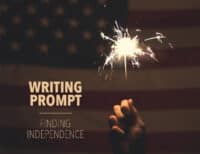
Submit a Comment Cancel reply
Your email address will not be published. Required fields are marked *
Submit Comment
Join over 450,000 readers who are saying YES to practice. You’ll also get a free copy of our eBook 14 Prompts :
Popular Resources
Best Resources for Writers Book Writing Tips & Guides Creativity & Inspiration Tips Writing Prompts Grammar & Vocab Resources Best Book Writing Software ProWritingAid Review Writing Teacher Resources Publisher Rocket Review Scrivener Review Gifts for Writers
Books By Our Writers

You've got it! Just us where to send your guide.
Enter your email to get our free 10-step guide to becoming a writer.
You've got it! Just us where to send your book.
Enter your first name and email to get our free book, 14 Prompts.
Want to Get Published?
Enter your email to get our free interactive checklist to writing and publishing a book.

What to Read When Teaching the Hero’s Journey

In a previous blog post , I discussed how I teach the Hero’s Journey and a project that my students complete to demonstrate their understanding of it. Below are a list of novels, short stories, and poems which each have a protagonist set off on or forced into an adventure and change as a result of it, not necessarily for the better.
Novels
To Kill a Mockingbird : This story takes place in Maycomb, Alabama during the Great Depression when quality of life was low and racism was high. The story’s perspective is that of a little girl named Scout Finch who is forced into adventure when her father, Atticus, a prominent lawyer in the community, takes on a case to defend a black man who is accused of raping a white woman. The whole Finch family has to weather the backlash of Atticus’s decision which in turn leads to young Scout being educated in the essential goodness and evil of humanity.
Don Quixote: The protagonist of the novel is Don Quixote, a man so obsessed with fantasy novels of chivalrous knights that he sets out on a quest of his own imagining. Although Don Quixote is only a hero in his own mind, the series of misadventures he embarks upon leaves an impact on himself and the unfortunate people he forces his delusions upon.
Lord of the Flies: After a plane full of young boys crash lands on a deserted island, the protagonist, Ralph, is tasked with leading the group and ensuring their survival until help arrives. Life outside of civilization proves to be trying for the boys as baser instincts and the struggle for power begin to take hold of them. As the boys’ integrity and innocence begin to dissolve, Ralph learns of the savagery within himself and the rest of humanity.
Short Stories
A Sound of Thunder: This thrilling short story by Ray Bradbury tells of a group of hunters who travel back in time to hunt the ultimate prey, the Tyrannosaurus Rex. As with most adventures in time travel, the hunters’ actions have far reaching effects, educating them in the harsh lesson that even the smallest actions have consequences.
Marigolds: On the brink between child and woman, the protagonist, called Lizabeth by her brother, tries to come to terms with the reality of her impoverished life as a black girl living in rural Maryland during the Great Depression. Unable to cope with her helplessness and degradation, she sets out on an endeavor to destroy the only thing she had known to be beautiful, destroying her innocence in the process and spurring her on into adulthood.
Thank you, Ma’am: After a purse theft gone wrong, a boy named Roger is at the mercy of the indomitable Mrs. Luella Bates Washington Jones. Rather than call the police, Mrs. Jones drags Roger to her home to wash him, feed him, and then send him away with money along with an enduring lesson on choices and kindness.
The Odyssey : Homer’s epic poem is one of the oldest examples of the Hero’s Journey archetype. Odysseus, the protagonist of the epic, is a hero who after having fought in the battle of Troy wishes to return to his kingdom of Ithaca and to his wife Penelope. However, all manner of perils lie in his way including monsters, temptresses, and the wrath of an angry sea god. Unlike most Homeric heroes, Odysseus actually changes over the course of his journey, learning the importance of controlling his temper and pride.
The Epic of Gilgamesh: At the beginning of the epic, Gilgamesh is a hedonistic and ravenous king who rules his kingdom cruelly, but is soon changed after the gods bless him with a friend who is nearly a match for the god-king’s greatness, the beastman Enkidu. Together, Gilgamesh and Enkidu embark on fantastic adventures until Enkidu is struck with illness by the gods and perishes. Mourning his friend and fearing his own death, Gilgamesh embarks on a final adventure to achieve immortality but instead gains the closest to immortality that a mortal can hope for.
Inferno: The protagonist of the poem, Dante, must delve into the deepest pits of hell in order to reach heaven where Dante’s wife, Beatrice, awaits him. Through the horrifying yet vivid imagery of the underworld, Dante learns of the nature of justice as well as evil and God’s will.
If you are looking for a fun and engaging classroom activity, check out last week’s blog post !

One Comment
I never thought of "THank You, M'am" as hero's journey but TOTALLY will add that to my unit!
Leave a Reply Cancel reply
Your email address will not be published. Required fields are marked *
Save my name, email, and website in this browser for the next time I comment.

SUBSCRIBE NOW
31 Best Hero’s Journey Books to Add to Your Reading List
Interested in learning more about the hero’s journey stories? Discover the best hero’s journey books to begin your reading adventure !
Writers and readers love hero’s journey stories . From the origin stories of cultures to the twelfth-century poems that make up The Mabinogion (themselves derived from earlier oral traditions) to today’s blockbuster SF-laden movies, the monomyth is a part of our collective, subconscious experience .
These stories feature certain archetypes and follow a set pattern. The hero sets off on a quest from his/her ordinary world (The Departure), subsequently learns a lesson or obtains new knowledge , and uses this to triumph over something, someone, or a set of circumstances (The Initiation).
The hero then returns to his/her own world, transformed or with the tools needed to enact positive change (The Return). Below, we take a look at the 31 best books to add to your reading list if you’re a fan of the genre. This list pairs nicely with our roundup of movies that follow the hero’s journey .
1. The Hobbit by JRR Tolkien
2. the odyssey by homer, 3. harry potter and the sorcerer’s stone by jk rowling, 4. the alchemist by paulo coelho, 5. the inferno by dante alighieri, 6. the goose girl by shannon hale, 7. the wizard of oz by l frank baum, 8. the hunger games by suzanne collins, 9. to kill a mockingbird by harper lee, 10. where the mountain meets the moon by grace lin, 11. don quixote by miguel de cervantes, 12. the 5th wave by rick yancey, 13. beowulf, 14. siddhartha: an indian novel by hermann hesse, 15. a separate reality by carlos castaneda, 16. across the universe by beth revis, 17. american gods by neil gaiman, 18. little briar rose (sleeping beauty) by the brothers grimm, 19. jane eyre by charlotte bronte, 20. the pilgrim’s progress by john bunyan, 21. the hound of the baskervilles by arthur conan doyle, 22. treasure island by robert louis stevenson, 23. argonautica by apollonius, 24. the fault in our stars by john green, 25. holes by louis sachar, 26. interstellar by greg keyes, 27. divergent by veronica roth, 28. the buried giant by kazuo ishiguro, 29. alice in wonderland by lewis carroll, 30. the lion, the witch and the wardrobe by c.s. lewis, 31. fight club by chuck palahniuk, here are the best books that follow the hero’s journey.
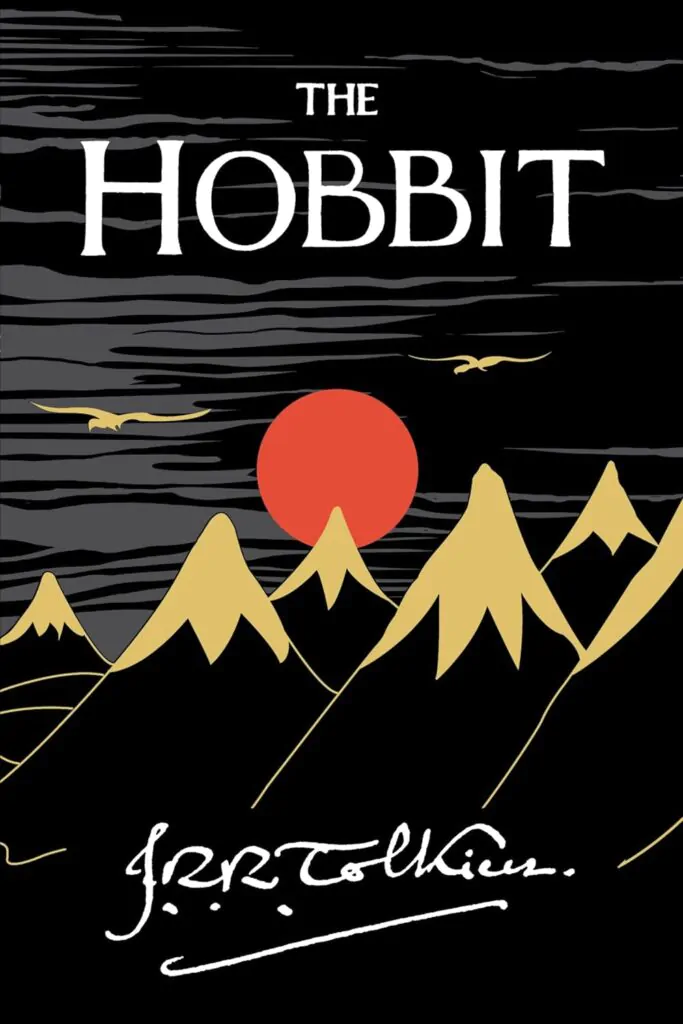
The Hobbit by J.R.R. Tolkien has featured regularly on best-seller lists since its first publication in 1937 and is widely cited as one of the twentieth century’s most beloved and influential novels. It’s a classic hero’s journey genre tale, too – featuring an unlikely hero in the form of Bilbo Baggins.
This unassuming hobbit is swept off on an adventure when Gandalf, the wizard, and a company of dwarves appear on his doorstep. He finds himself part of a mission to reclaim a fabulous horde of treasure from under the very nose of the fearsome dragon Smaug the Magnificent. For more, check out our guide to the best fantasy authors. You can also check out our guide on hero’s journey archetypes .
“This is a story of how a Baggins had an adventure , and found himself doing and saying things altogether unexpected.” JRR Tolkien
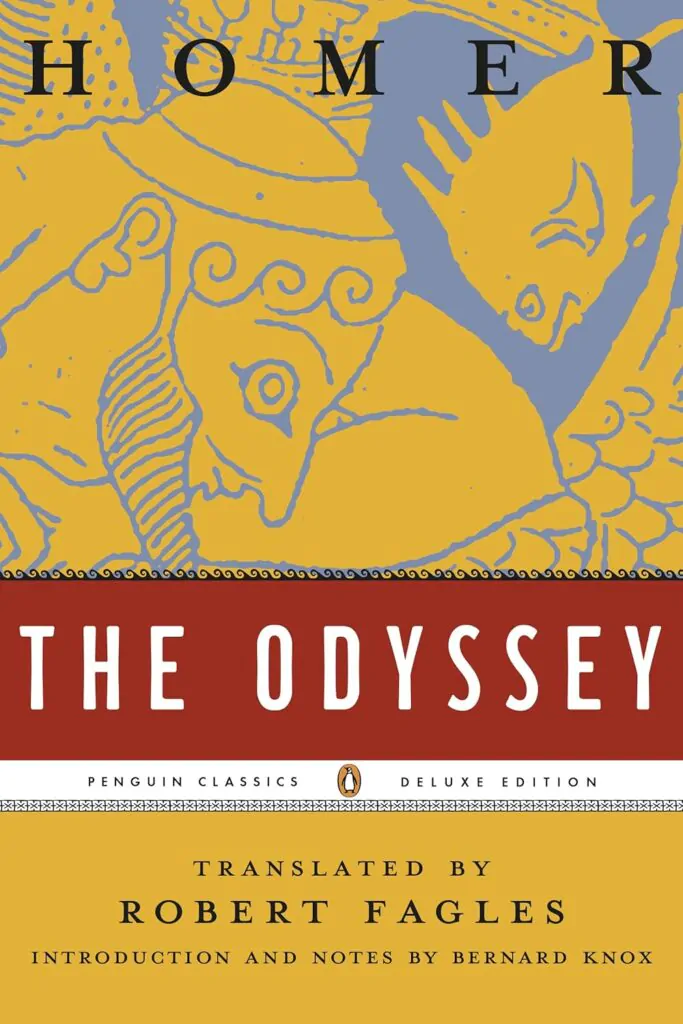
The Odyssey tells the story of Odysseus and is one of the oldest surviving works of literature that’s still being read by audiences today. This epic story tells the tale of the wandering king, trying to get home to his wife Penelope following the end of the Trojan War. The tale features all the tropes of a hero’s journey story, from its opening.
Odysseus is portrayed in his ordinary life, through to the Crossing the Threshold section, where the Gods become enraged with the hero and his company, summoning a storm to throw their boat off course, to The Return, whereby after completing a final challenge, Odysseus is returned to his royal life with Penelope.
“A man who has been through bitter experiences and traveled far enjoys even his sufferings after a time.” Homer
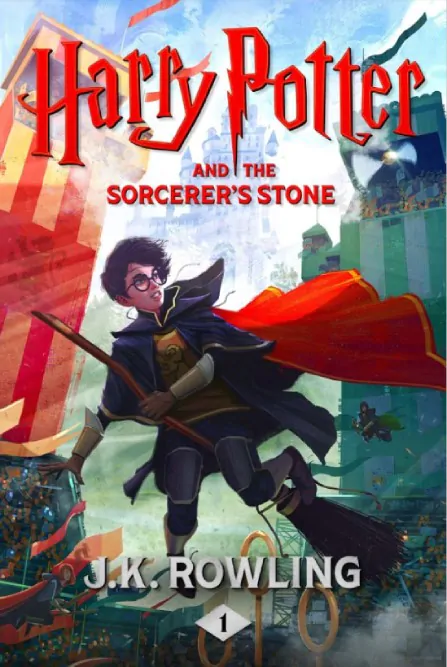
JK Rowling’s worldwide best-seller Harry Potter is a prime example of the hero’s journey tale. The book starts with Harry in the ordinary world before moving through all of the typical hero’s journey stages, as detailed by Joseph Campbell in his book The Hero with a Thousand Faces. Harry receives the invitation letter to Hogwarts (The Call to Adventure ), struggles to accept this sudden turn of events (Refusal of the Call), and Meets the Mentor – in the first book, this is Hagrid.
The Crossing the Threshold stage is his literal passing through the wall to access Platform 9 3/4 at the station. The Ordeal is represented by the various challenges the young wizard encounters at his new school, culminating in his temporary triumph over Voldemort. At the end of the book, he returns to the world of the muggles for the summer vacation, happy that he’ll be returning to Hogwarts soon (The Return).
“A breeze ruffled the neat hedges of Privet Drive, which lay silent and tidy under an inky sky, the very last place you would expect astonishing things to happen.” JK Rowling
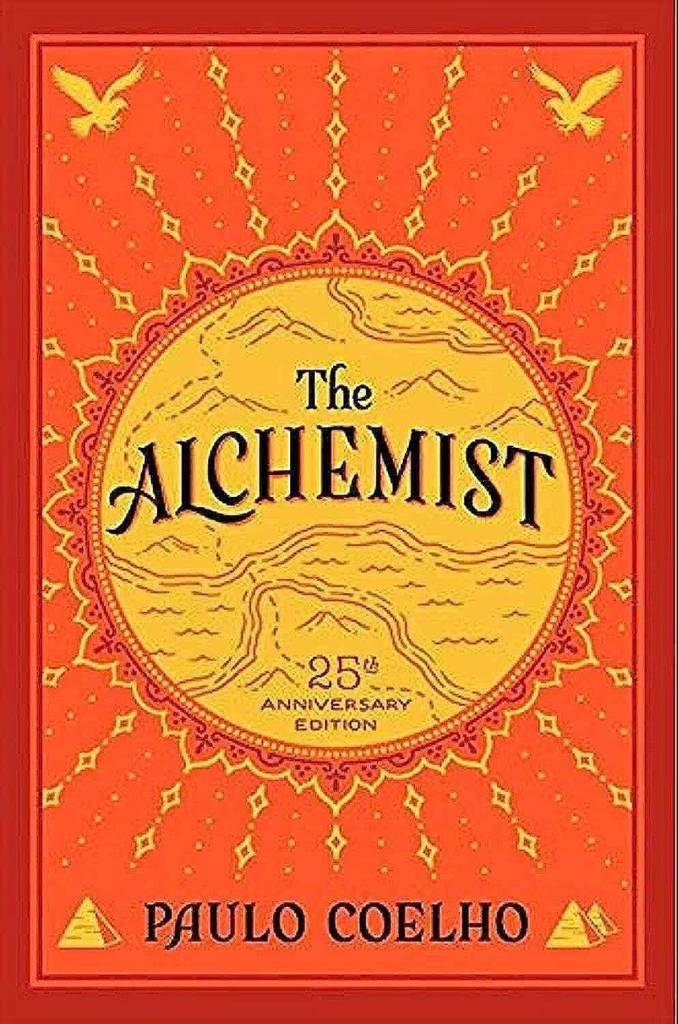
The hero’s journey takes many different forms: it’s not always about defeating villains or finding lost treasure. The genre can also be powerfully deployed in the service of a spiritual quest tale, as in this novel. While the young protagonist, who is a perfect example of the Innocent/Orphan hero archetype, might start his journey looking for real-world riches, what unfolds is a beautiful story of self-discovery. Ultimately, The Alchemist is about the importance of heeding our hearts and the transformative power of dreams.
“Remember that wherever your heart is, there you will find your treasure.” Paulo Coelho

The first volume of The Divine Comedy is considered a literary masterpiece, following the hero’s journey on a quest through the various Circles of Hell. After meeting Virgil (the Mentor), our narrator progresses, facing numerous trials and tests, always seeking his beloved Beatrice. Although he sometimes has ‘weapons’ with which to face his adversaries, his most potent weapon is his faith in his journey , which is a blend of both a spiritual and a physical mission.
“Soon you will be where your own eyes will see the source and cause and give you their own answer to the mystery.” Dante Alighieri

New York Times bestselling author Shannon Hale has written the book The Goose Girl that, although aimed at middle-schoolers, has become much loved by kids and adults alike. Drawing on the tradition of folktales, it’s a heroine’s journey story, recounting the tale of Ani, who’s uncomfortable around people but able to communicate easily with animals. She leaves her world behind. However, when she’s sent away to marry. Despite disaster striking, she finds herself in a job where she can use her unique talents and give voice to her inner self.
If we don’t tell strange stories, when something strange happens we won’t believe it.” Shannon Hale
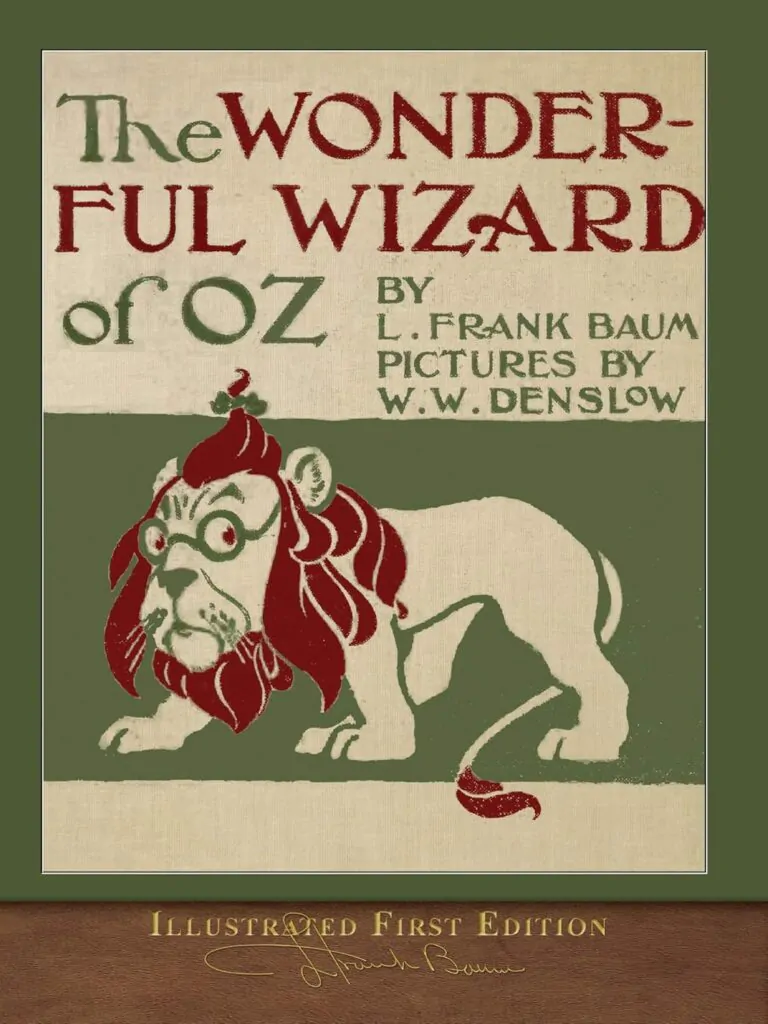
A key element of the heroine’s journey is, while it maintains recognizable archetype qualities, there is an overcoming or subversion of society’s expectations regarding women. Rather than staying at home in Kanas, Dorothy, in the book The Wizard of Oz has the adventure she longs for.
While the hero’s journey stories tend to move from the inner world to the outer (from the darkness to the light), the heroine’s journey is usually the inverse of this, with characters moving from the outer world to a deeper communion with their inner selves and desires.
“The true courage is in facing danger when you are afraid, and that kind of courage you have in plenty.’“ L Frank Baum
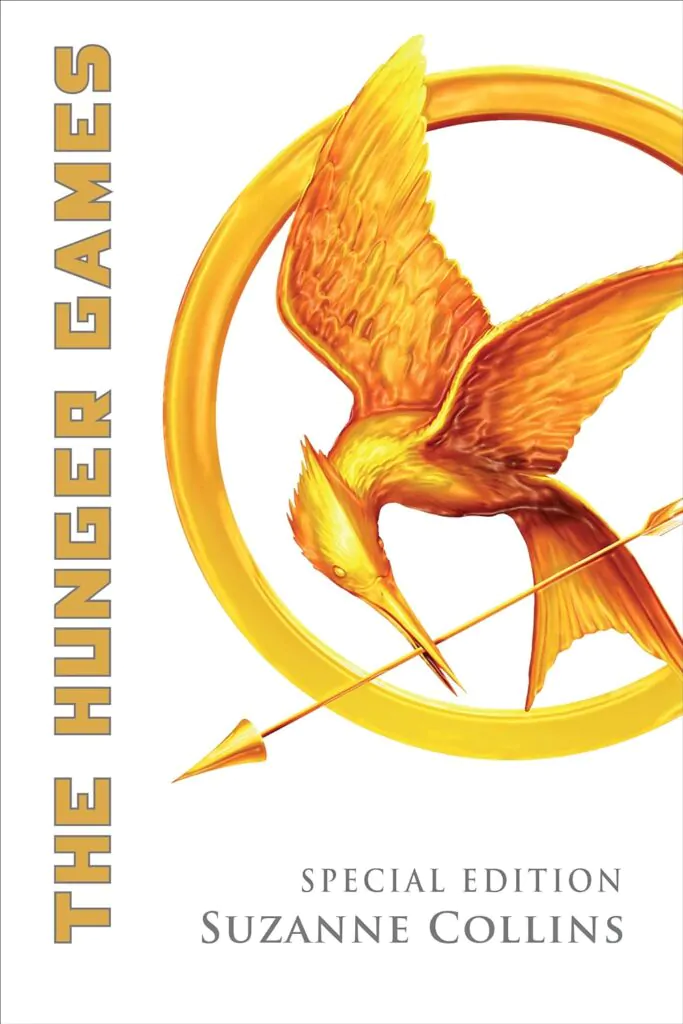
Envisioning a dystopian new world in which each District is compelled to send two children between the ages of twelve and sixteen to compete in the annual Hunger Games , Suzanne Collins’ novels are widely cited as examples of the hero’s journey genre. Now a Hollywood blockbuster series of movies, the story demonstrates how the tropes inherent in Homer’s tale of Odysseus, written nearly 3,000 years ago, are still alive and kicking today.
Looking for the perfect reads for teens? Explore our comprehensive guide featuring the best books for teenagers . Whether they’re into fantasy, adventure, or real-life stories, our list has something for every young reader. Check out the top picks now!
“I’m more than just a piece in their Games.” Suzanne Collins
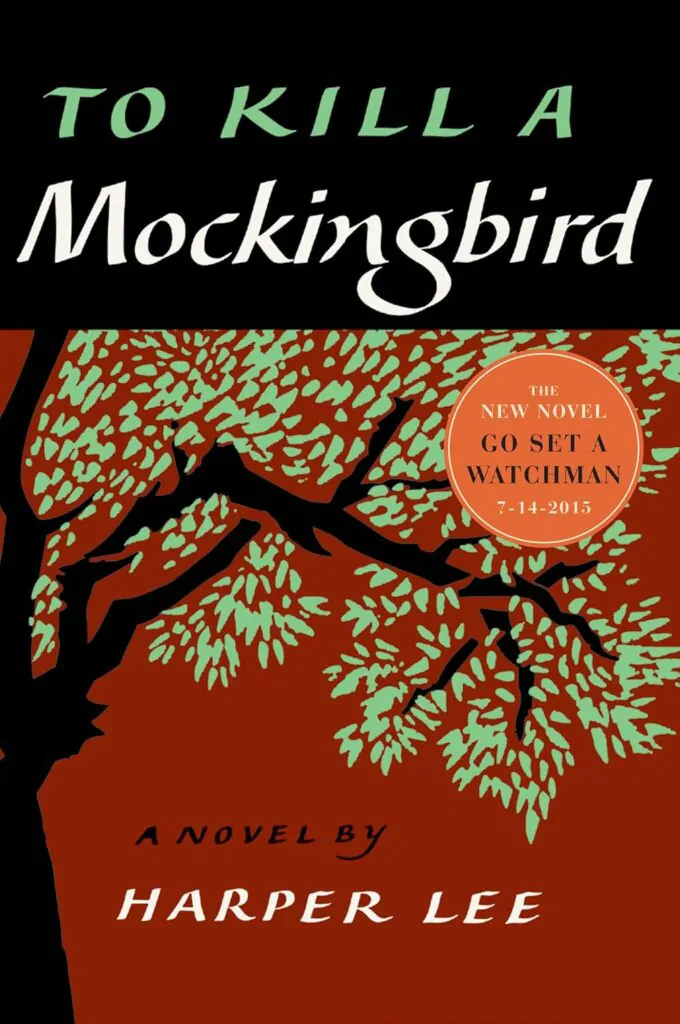
To Kill a Mockingbird is set in 1930s Alabama, Atticus Finch is a lawyer attempting to defend and prove the innocence of Tom Robinson, a black man wrongly accused of raping a white woman. Atticus’s hero’s journey is largely a psychological one, in which he faces his own innermost beliefs, and is forced to confront morality and prejudice in the south of the US, how this manifests, and its impact on the individual and society – as well as the delivery of justice.
“You never really understand a person until you consider things from his point of view. Until you climb inside of his skin and walk around in it.” Harper Lee
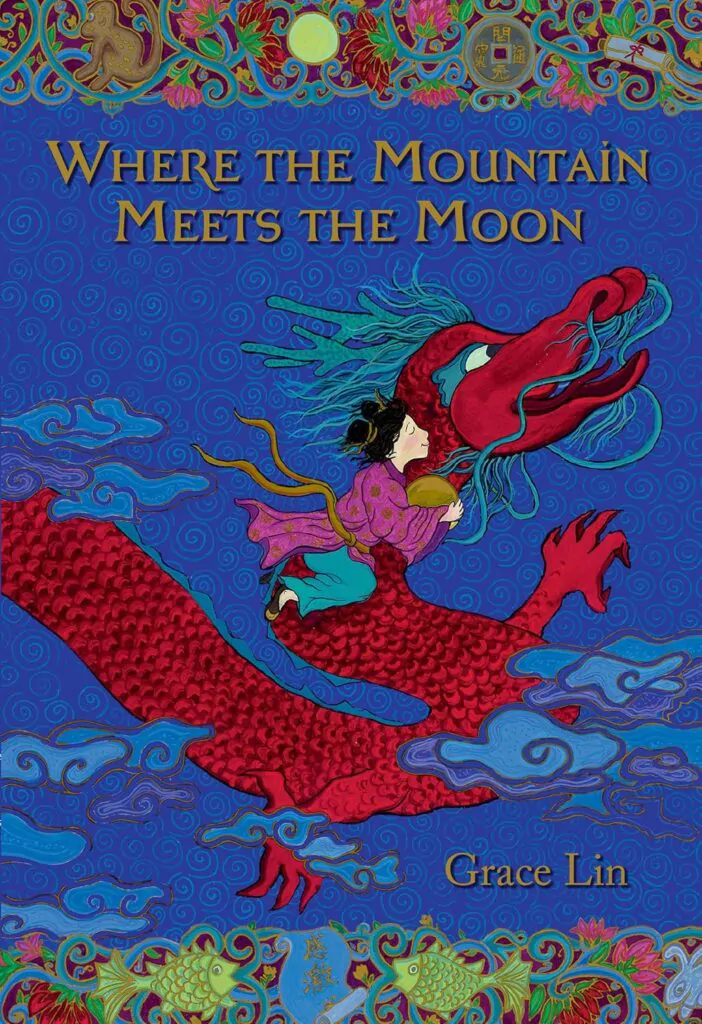
Another bestselling novel adored by adults and children alike, Where the Mountain Meets the Moon chronicles Minli’s quest as she journies to find the Old Man on the Moon. Drawing on Chinese folktales, this rich fantasy, accompanied by the author’s beautiful illustrations, follows Minli as she encounters a range of otherworldly characters in her quest to find the answers to some of life’s biggest questions.
“If you make happy those that are near, those that are far will come.” Grace Lin
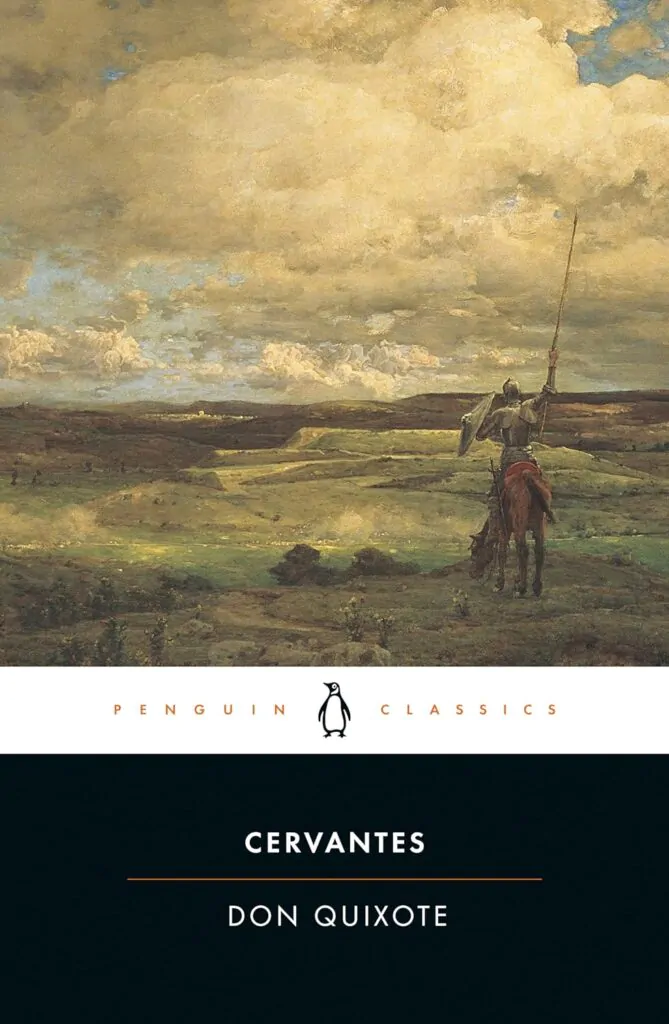
The Spanish masterpiece, Don Quixote , first published in 1605, begins in the ordinary world of Alonso Quijano, a middle-aged man who loves nothing more than reading stories about knights and their adventures. Deciding to leave behind his own life to become a knight errant himself, Alonso changes his name to Don Quixote and sets off on a series of heroic deeds – some more successful than others!
“It is by rugged paths like these they go that scale the heights of immortality, unreached by those that falter here below.” Miguel de Cervantes
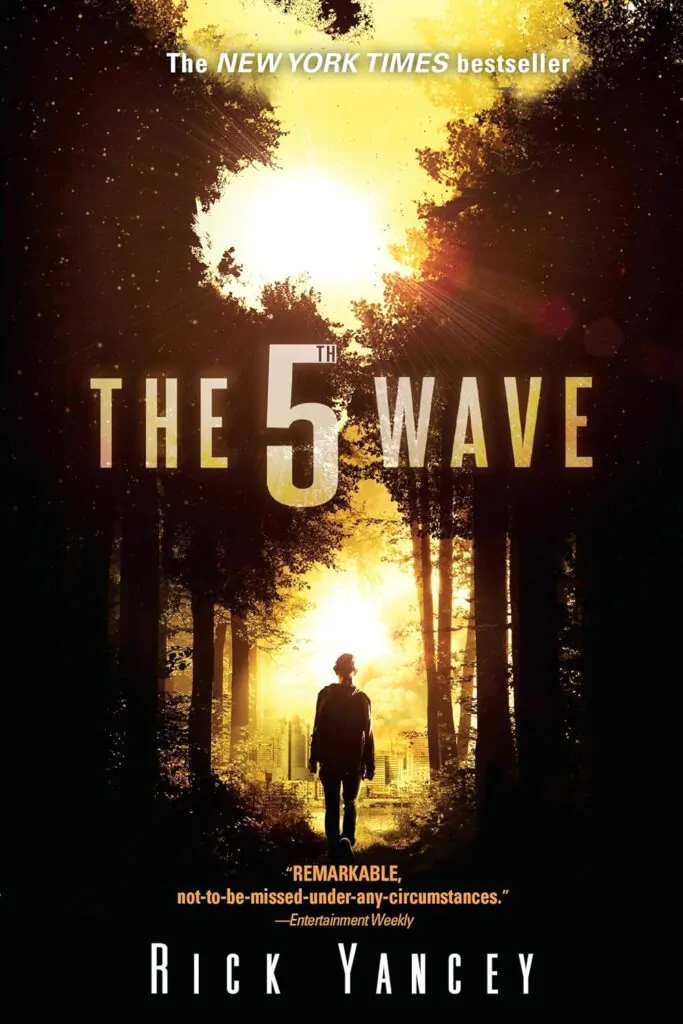
This Amazon bestseller by Rick Yancey received the Goodreads Choice award. The Fifth Wave focuses on Cassie and Evan, two of the last human survivors on Earth following an alien invasion, dreading the imminent fourth wave. As a hero’s journey tale, Cassie must tackle both a physical, dangerous quest and attempt to understand the truth of the terrifying new world she’s inhabiting.
“Some things you don’t have to promise, you just do.” Rick Yancey
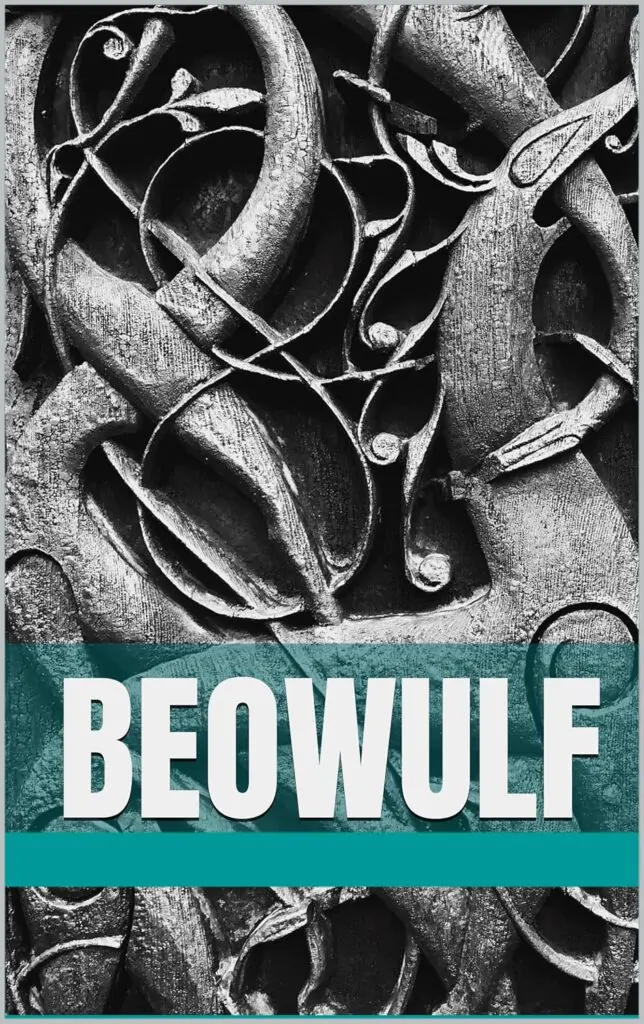
The hero in this Old English epic poem Beowulf from an unknown author follows precisely the steps outlined by Joseph Campbell in The Hero with a Thousand Faces. From the Call to Adventure and the Refusal of the Call and all the way through to The Return – otherwise known as The Elixir- in which the hero brings something back from his adventure to benefit society. In the case of Beowulf, it’s the insight he has gained, that will keep his people safe going forward, and his blessing of peace,
“In the time I was given I lived in my own land, ruling my people well, never turning to treachery, or swearing to oaths contrary to right.” Beowulf

A much-loved novel published in 1951 that follows the classic hero’s journey template, Siddhartha concerns the titular character on his quest for self-discovery. Deciding to leave his home in the ancient Nepalese kingdom of Kapilavastu, Siddhartha sets out as a wandering beggar seeking spiritual enlightenment. Through his journeying, the hero learns the importance of loving the world in its entirety and that a single, fixed belief does not constitute truth.
“ Knowledge can be communicated, but not wisdom. One can find it, live it, do wonders through it, but one cannot communicate and teach it.” Hermann Hesse
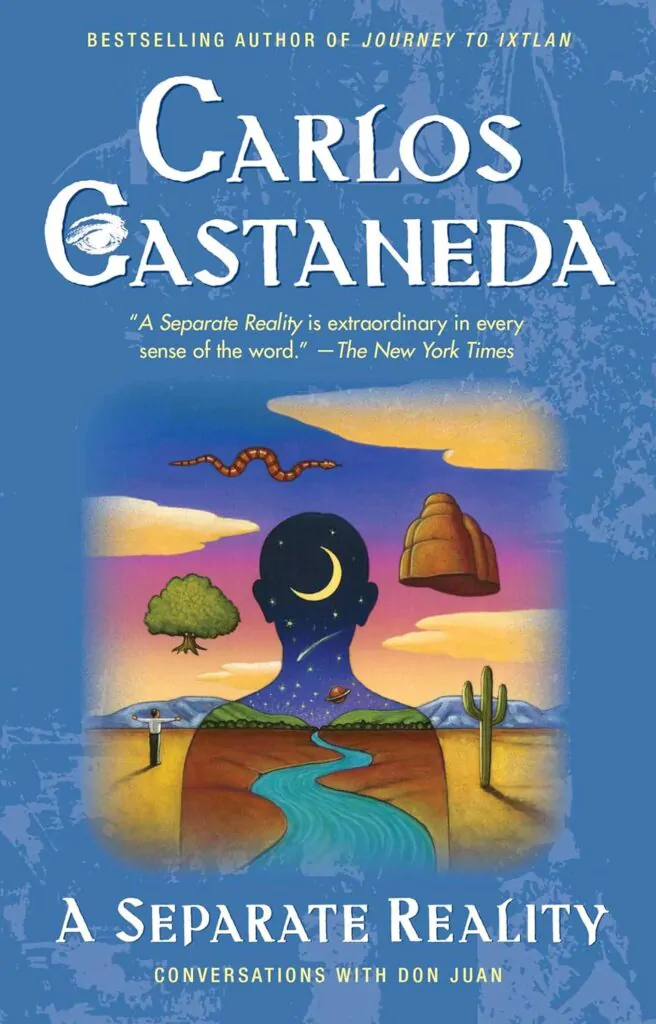
With its mind-bending perspectives and mythic structure, it’s unclear how much of this book A Separate Reality is fictional and how much is based on reality. With its clear mentor character (the Yaqui Indian shaman, Don Juan) and the dangerous journey at its heart that the protagonist is compelled to undertake, it’s a clear example of the hero’s journey story – though possibly one that pushes the boundaries of the genre more than any you’ve come across!
“We are men and our lot in life is to learn and be hurled into inconceivable new worlds.” Carols Castaneda
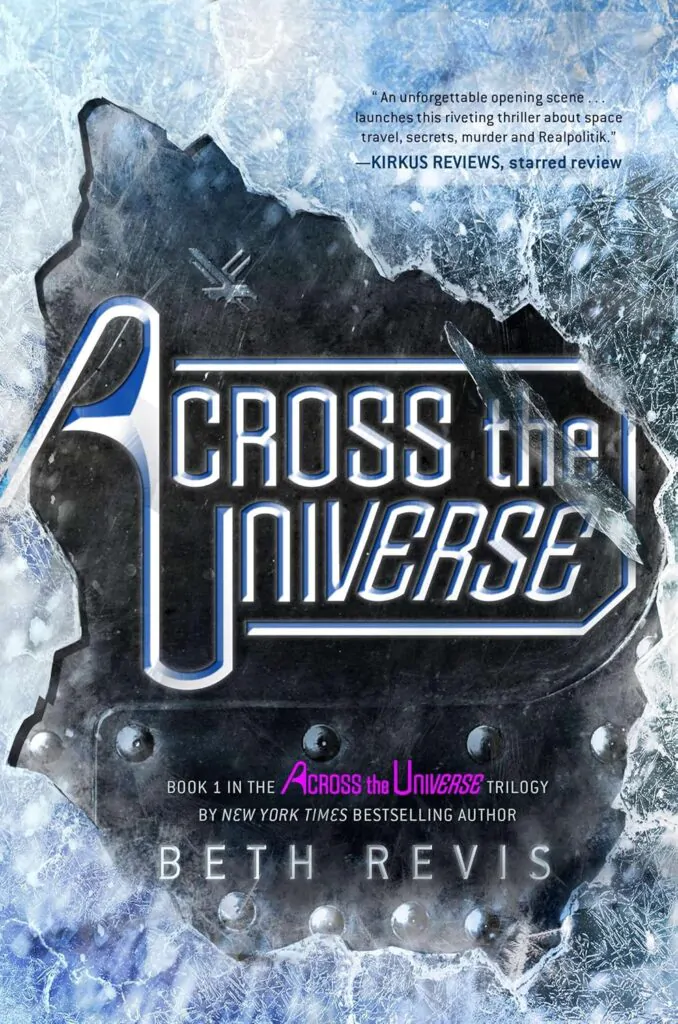
In the book Across the Universe , Amy awakens fifty years too soon from cryosleep, she finds herself aboard the spaceship Godspeed and in a terrifying situation. Realizing that her awakening didn’t happen by accident (The Call to Action), Amy has to accept the truth that someone else on board wants her dead – and that her parents, still in cryosleep, could be the next victims if she doesn’t figure out what’s going on. But meeting Eldest, the future leader of the ship, changes everything.
“Even when you are silent, even when you block out all noise, your body is still a cacophony of life.” Beth Revis
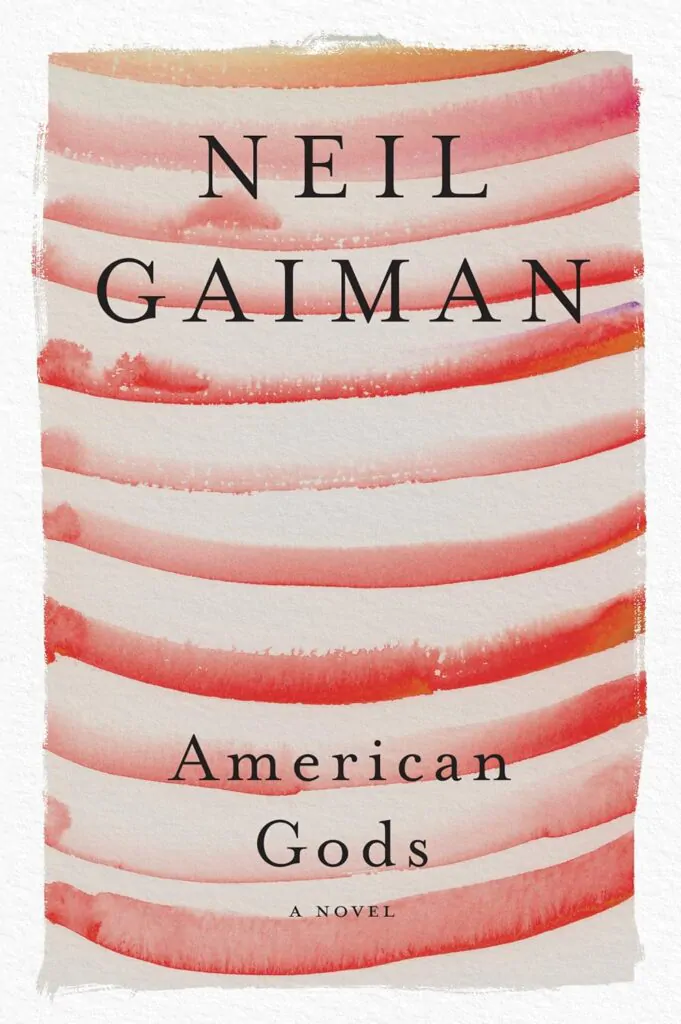
American Gods blend fantasy and world mythology (both old and new), this novel widely divides its audience: it falls into the love it or loathe it category. But whatever your views on the plot and the writing, it’s an innovative take on the hero’s journey trope that reimagines the genre.
Even its archetype, Shadow, is a vivid and disturbing (yet recognizable) hero figure – although, in typical Neil Gaiman style, the name ‘Shadow’ is also one of the character archetypes set out by Christopher Vogler’s author of the influential book, The Writer’s Journey .
“Even nothing cannot last forever.” Nail Gaiman
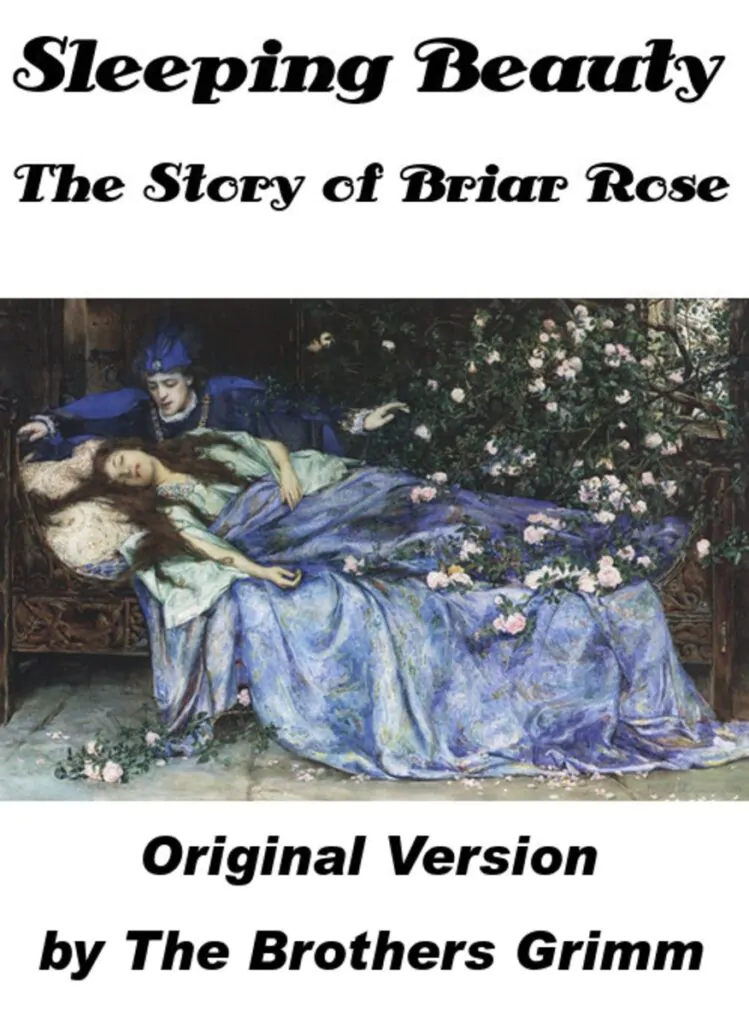
Fairy tales are great places to look for the hero’s journey stories themselves, born from ancient folktales, legends, and myths. There are many versions of this tale, many of which feature very dark and disturbing themes, but the Grimms’ version of Little Briar Rose (Sleeping Beauty) is relatively tame.
While reading , consider the extent to which the story is a hero’s or a heroine’s journey tale – thinking about the journey from outer to inner (and vice versa) and how this relates to the narrative of both the prince and Briar Rose herself.
“The pigeons upon the roof pulled out their heads from under their wings, looked round, and flew into the open country; the flies on the wall crept again; the fire in the kitchen burned up and flickered and cooked the meat; the joint began to turn and fizzle again.” Brothers Grimm

In his writings, the renowned psychiatrist and psychoanalyst Carl Jung outlined his ideas about archetypes, including archetypal journies, contending that humans’ unconscious minds are remarkably similar. This is why the hero’s journey stories have always permeated literature and art and continue to do so.
At its heart, the journey of Jane Eyre is the same as that taken by Luke Skywalker in Star Wars, despite the time and genre divide between the two. Just as Luke’s quest is about discovering truth and recognizing potential, so Jane’s journey is concerned with growth and independence – and there’s a disturbing truth in the attic to confront along the way, too.
Just as with Skywalker, Jane emerges at the end of the tale as a strong, loyal, passionate character who has faced a devastating reality and emerged from the ordeal with even greater reserves of tenacity than before. For more, check out our guide to the best British authors .
“I am no bird; and no net ensnares me: I am a free human being with an independent will.” Charlotte Bronte
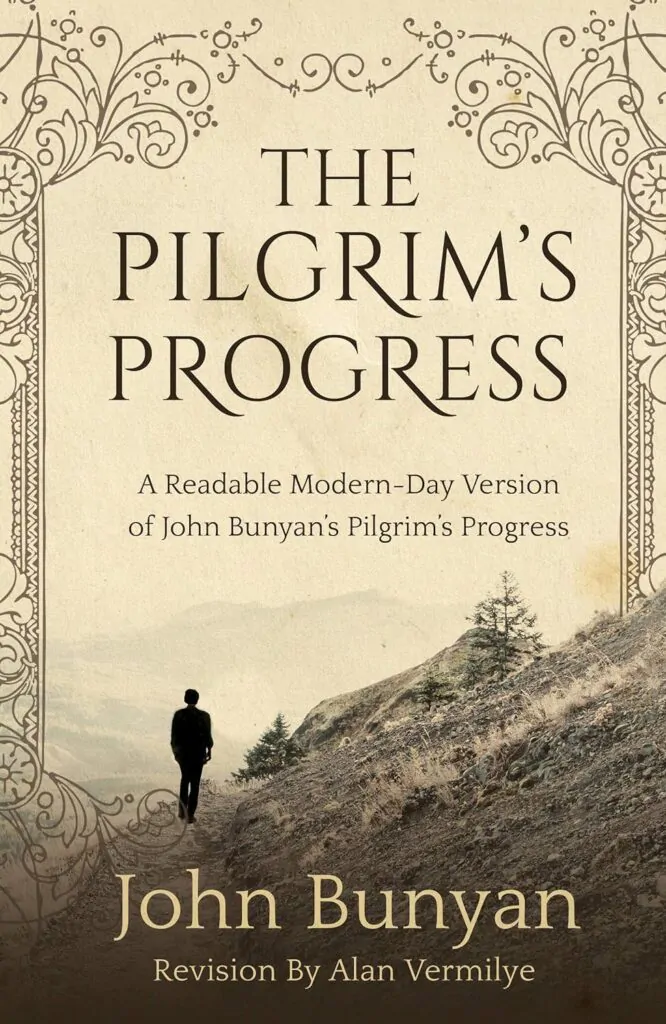
The Pilgrim’s Progress is a classic hero’s journey tale and, at times, the most widely read book in the world, second only to The Bible, Bunyan’s book is concerned with the importance of learning and reading and the innate value of community. The hero, Christian, leaves his home and must face a series of trials – key to the genre. However, each tribulation or challenge must be thoroughly understood if a pilgrim is to progress. There’s even a final trial – a test of faith – which Christians must pass to access the Celestial City.
“The road of denial leads to the precipice of destruction.” John Bunyan

The greatest literary detective of all time, Sherlock Holmes, is a hero archetype: The Researcher (the character of Indiana Jones also falls within this hero category). The Hound of the Baskervilles is one of the most well-known stories featuring Holmes and his trusty sidekick Dr. Watson. This is a great book for those interested in the hero’s journey genre, as the stages are so clearly delineated, from the Call to Action (Holmes’ enlistment to the case) through to The Return, whereby Watson files the case closed.
“The world is full of obvious things which nobody by any chance ever observes.” Arthur Conan Doyle
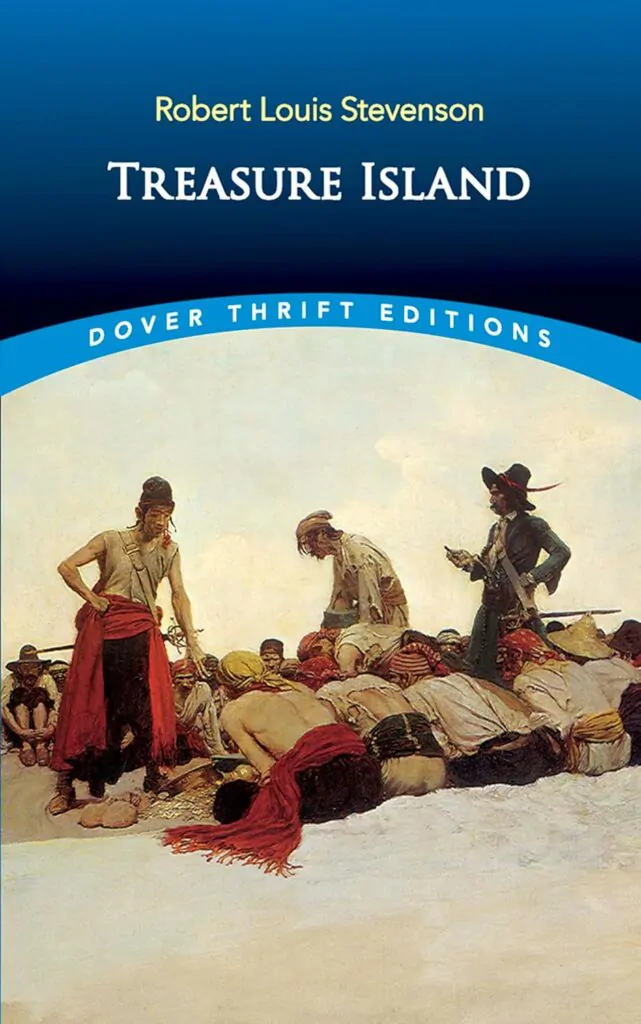
In this classic novel Treasure Island by a 19th-century author, we meet Jim going about his daily life in the inn that his family owns. Following the Call to Action, where the boy becomes fascinated with the ‘black spot’ presented to the old captain, Billy Bones, who’s staying at the inn, Jim becomes embroiled in an epic adventure on the high seas in search of buried treasure.
“We are all travelers in the wilderness of this world, and the best we can find in our travels is an honest friend.” Robert Louis Stevenson

Testament to the power of myth is the enduring popularity of this story, which recounts the adventures of Jason and the Argonauts as they quest for the golden fleece. The epic, written – incredibly – in the third century BC, remains so widely read that there are not only multiple versions available on Amazon, but you can listen to it as an audiobook, too! Argonautica features all the archetypal stages of the genre, including the Refusal of the Call, whereby Jason initially urges the heroes to elect another leader for the voyage. Once chosen, though, Heracles insists that Jason can take up the mantle, confident he can lead the band to victory.
“But friendly Juno shrouds/Her favorite heroes in a veil of clouds.” Apollonius
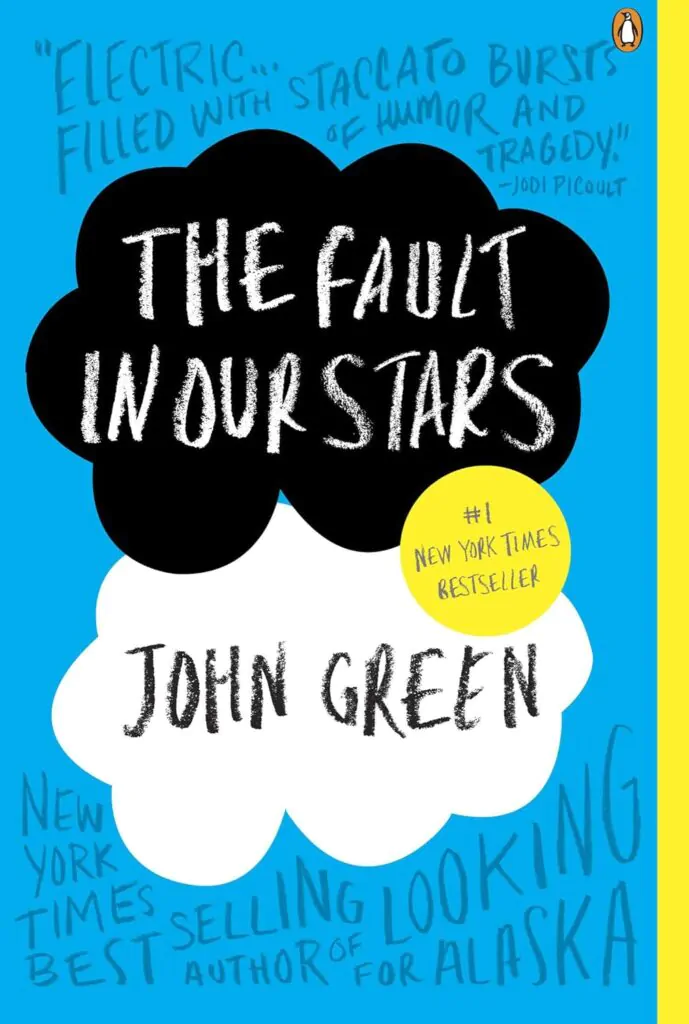
The Fault in Our Stars , a bestseller that was also received extremely well by critics, this novel is a hero’s journey tale with a difference. Hazel, our protagonist, is sixteen years old and suffering from thyroid cancer that has spread to her lungs. Her parents insist she attends a support group (Crossing the Threshold) where she meets Augustus Walters, a seventeen-year-old osteosarcoma survivor. It’s now a Hollywood blockbuster movie that captures Amy’s journey into love.
“My name is Hazel. Augustus Waters was the great star-crossed love of my life.” John Green

When fourteen-year-old Stanley is wrongly convicted of stealing, he’s sent to a correctional camp where the inmates are forced by the warden to dig holes, seemingly at random. The story of Holes is comprised of three individual but interconnected tales. It makes for a fascinating take on the hero’s journey genre, the pattern of which can be seen both in the three stand-alone stories and in the overarching triptych.
“You’re responsible for yourself. You messed up your life, and it’s up to you to fix it.” Louis Sachar

This novelization of the Hollywood movie Interstellar is an exciting account of a team of interstellar explorers sent through a newly discovered wormhole – and what the ramifications of this mean for humanity. Despite being written thousands of years after Argonautica, the story shares a remarkably similar bone structure, as our hero literally navigates new worlds in a quest to return with the solution that will save the human race from extinction.
“We’ve always defined ourself by our ability to overcome the impossible.” Jonathan Nolan

Divergent by Veronica Roth offers a dystopian version of a future in which society is divided into five factions, each representing a certain virtue. Beatrice has been assigned the Abnegation faction but feels a Call to Action: in her heart, she knows she belongs to Dauntless. While set in a distant future, the tale follows the traditional archetypal hero’s journey ; after the Call, Beatrice (now Tris) must resist several temptations, cross a threshold, and must survive a final ordeal to emerge at the novel’s finale, transformed and triumphant.
“I feel like someone breathed new air into my lungs. I am not Abnegation. I am not Dauntless. I am Divergent.” Veronica Roth
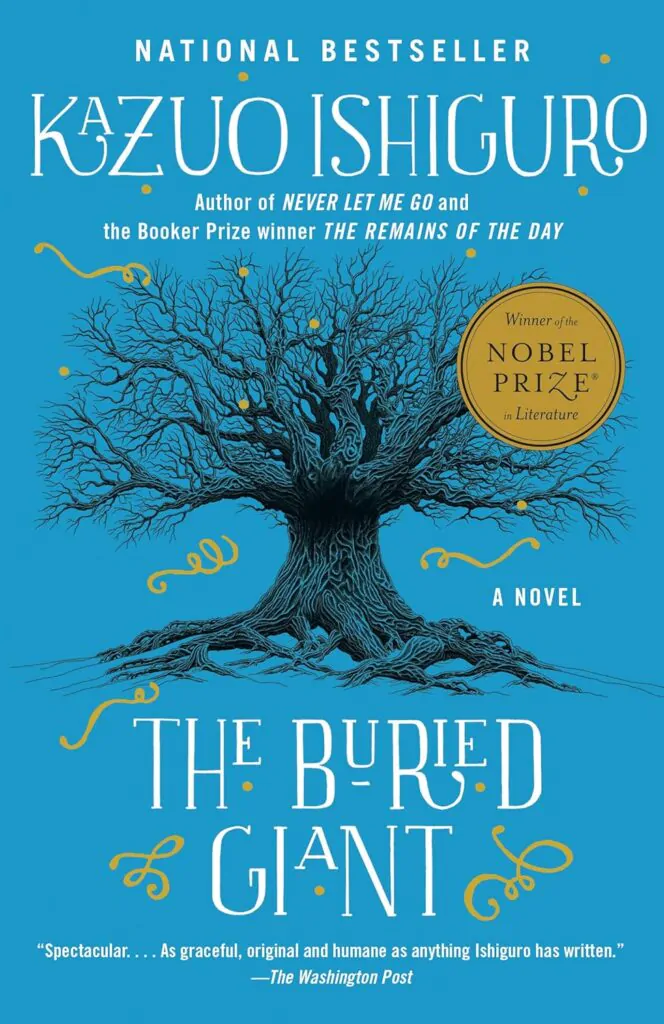
Beautiful and strange, The Buried Giant uses the mythic structure as both framework and plot. We follow a couple across a mystical, fiction, post-Arthurian landscape that is as shrouded in mist as their fast-disappearing memories. Both are convinced that they once had a son and so set out on a quest to find him. The author wrote the book as a meditation on collective memory, making it both an example and an interrogation of the hero’s journey tale.
“I’m wondering if without our memories, there’s nothing for it but for our love to fade and die.” Kazuo Ishiguro
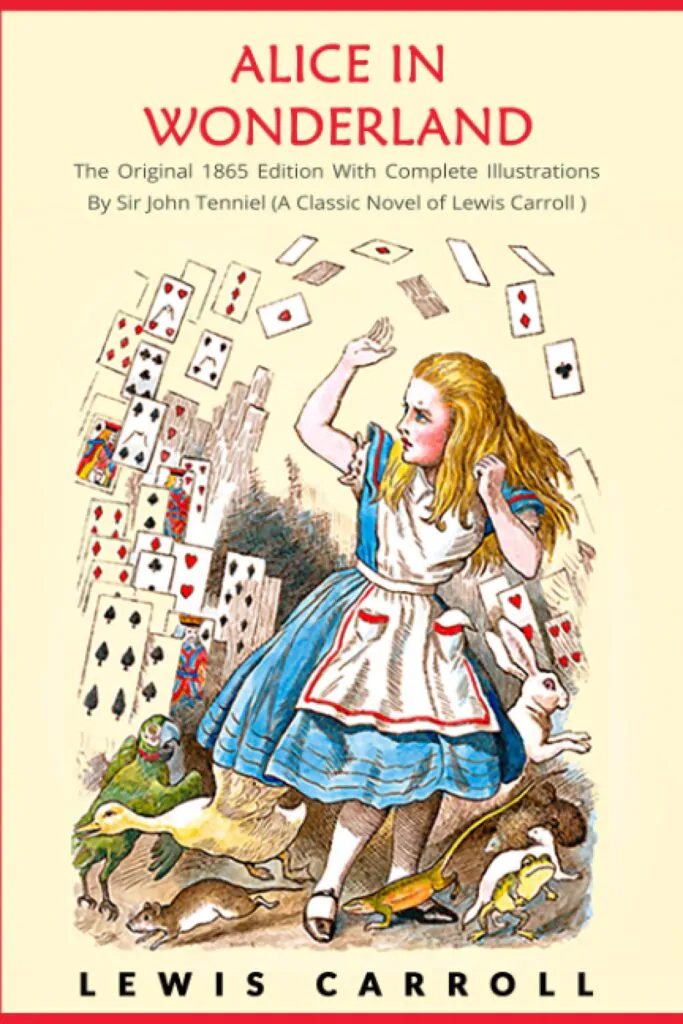
Crossing the threshold via a fall down a rabbit hole, Alice arrives in Wonderland, where nothing is as it seems, and both adventure and danger lurk around every corner. But is the Caterpillar, The White Rabbit, or The Mad Hatter the Mentor? Just as with everything else in the story of Alice in Wonderland , it’s a riddle. But what’s for sure is that the story follows the classic monomyth template as set out by Joseph Campbell.
“‘I could tell you my adventures – beginning from this morning,’ said Alice a little timidly: ‘but it’s no use going back to yesterday because I was a different person then.’” Lewis Carroll
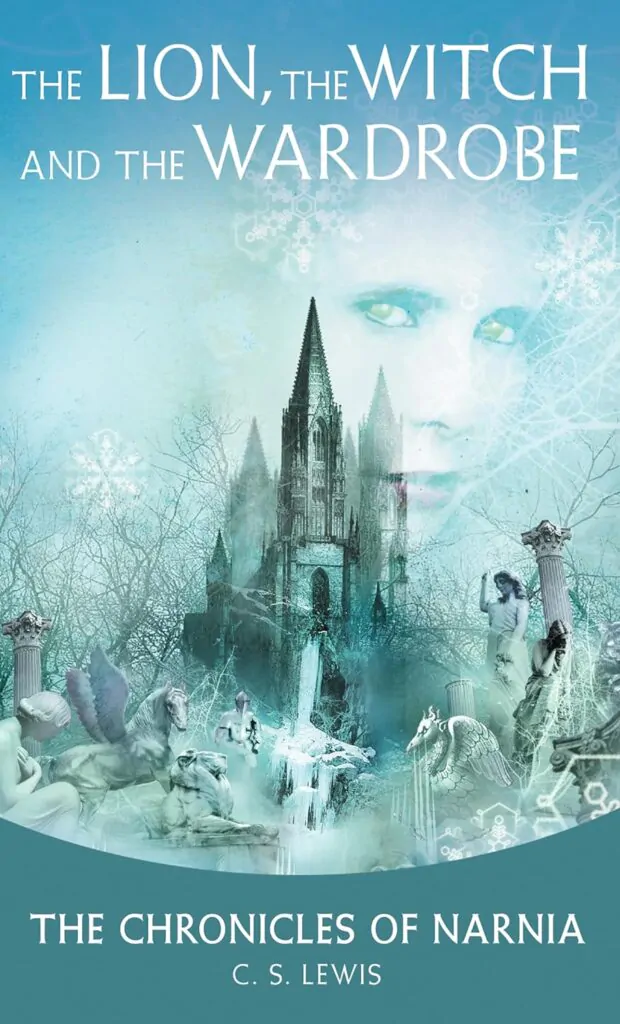
In some hero’s journey books, the stages are subtle – you can find them, but you may need to look closely. As in Alice in Wonderland, the phases are made obvious in this novel The Chronicles of Narnia : the kids literally step over the threshold of the magical wardrobe and into the enchanted world of Narnia. The Refusal of the Call comes when the children initially turn back, fearful of their ability to navigate their way home. They return and take on the challenges set for them by one of literature’s ultimate Mentor figures, Aslan.
“All shall be done, but it may be harder than you think.” C.S. Lewis
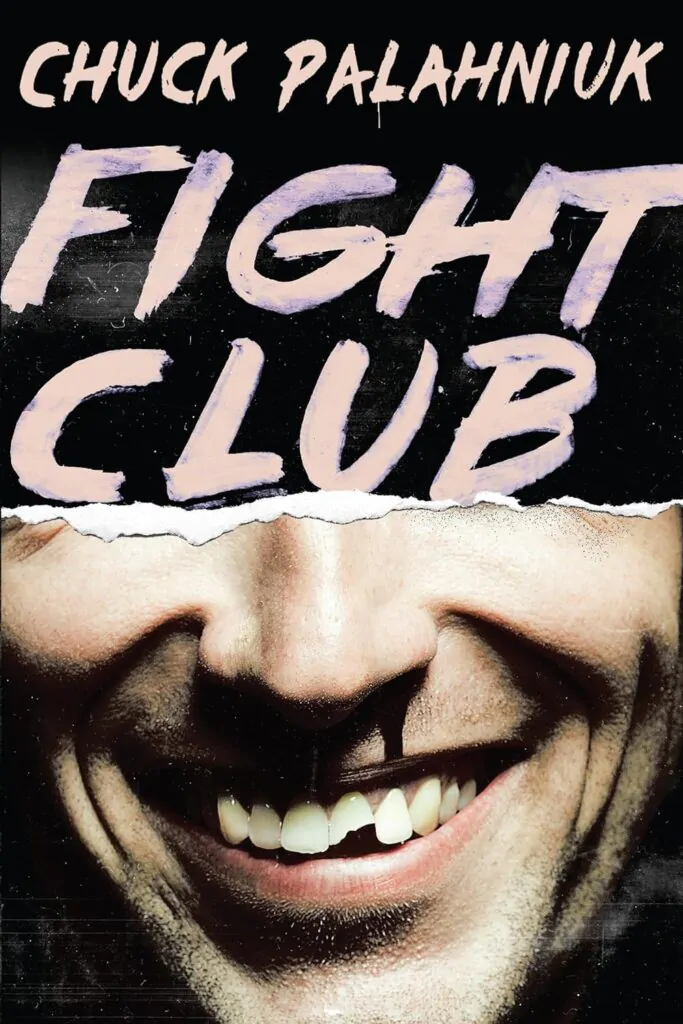
Just because the hero’s journey genre is as old as time doesn’t mean it’s not subject to continual innovation – as in this novel, where the hero’s Mentor and biggest challenge to overcome is…literally himself. Fight Club is a cult phenomenon that’s made the leap to mainstream hit, helped along by the success of the great screenwriting featured in the Hollywood movie version of the book. Visionary, satirical, and a personal enlightenment journey like no other, Fight Club gleefully reimagines the hero’s journey genre to spectacular effect.
“If I could wake up in a different place, at a different time, could I wake up as a different person?” Chuck Palahniuk
Receive Big Ideas to Your Inbox
Great adventures: five examples of a hero’s journey.
- March 2, 2020
- TEDxMileHigh Admin
- Art & Design
It’s the common thread woven throughout all storytelling. A lens that can be applied to any film or work of literature where each story will look the same. This arc of character and plot development is called the hero’s journey, and it’s everywhere.
In part one of this series , we learned what the hero’s journey is and the steps a character must take in order to fulfill their quest. We also learned that this story arc is relatable to us because our lives follow a similar pattern. If you still aren’t convinced that the hero’s journey permeates the fictional world, here are five great examples of a hero’s journey from different classics.
Spoiler Alert: If you are unfamiliar with any of these books or movies, skip them! We discuss the entirety of the story, including the end.
Examples of a Hero’s Journey in Five Stories
This 2009 sci-fi blockbuster became the top-grossing film of all time just 47 days after it premiered. Its success is largely due to the incredible Computer-Generated Imagery (CGI) characters and visual effects that are vibrantly convincing. Underlying messages and morals such as the importance of a peoples’ culture and land conservation accompany the film. While all of these elements play a role in the resounding praise of this film, there’s another reason people loved the film: the main character followed a typical hero’s journey.
Jake Sully starts out as a paraplegic former Marine. He is chosen to be a bodyguard for a research team on a search for a new energy source on the planet Pandora. While on their mission, Sully meets Neytiri, a native of Pandora, and is quickly accepted by her and her people. Sully is then faced with the moral choice to continue his work with the team he came with, and thus destroy the sacred native land, or join the native tribes and fight back against his own people. In the end, he helps save the land and its people and makes a permanent transition from his human body to the able-bodied avatar.
Sully’s time on Pandora is the perfect example of a hero’s journey:
- Separation: He is called to his adventure as a bodyguard, separating himself from his otherwise ordinary life
- Initiation: The initiation stage involves his meeting Neytiri and his introduction to her native tribe, and his moral dilemma of helping the natives of Pandora or staying with his team
- Return: His return is marked by the triumph of the natives. He returns to the tribe, physically changed from a human to one of their own, and mentally a new being with a new purpose
2. Marvel’s Spiderman
Another dominating movie franchise is Marvel’s The Avengers and the superhero spin-offs that it consists of. The movies have been a force to be reckoned with in the box office. However, each character had their start as a part of a comic book. Perhaps one of the most classic of this comic-book-hero-turned-movie-star is Spiderman.
The most recent adaptation of this beloved character is in the Marvel Avenger movies and the spin-off hits. In case there is any question that he is a hero, here is his journey in three steps:
- Separation: After the iconic spider bite, Peter Parker discovers his spider-like powers, prompting his new superhero life. He needs to adapt to life as a teenager with superpowers and fight crime at the same time
- Initiation: Tony Stark (a.k.a. Iron Man) and the other Avenger superheroes recruit him to help them in their battle against their extraterrestrial enemies
- Return: In the end, Spiderman returns as Peter Parker to his normal high school life, but is changed by the knowledge of his bigger responsibility as a superhero
Marvel’s Avenger version of Spiderman follows the classic hero’s journey, but we can see a major emphasis on the introduction of a mentor throughout Parker’s adventure. Iron Man serves as a father-like figure and helps Parker not only navigate his newfound superpowers but also how to harness them and use them for good.
3. The Wizard of Oz
A beloved novel-turned-film story that includes wicked witches, ruby slippers, and flying monkeys. This film is known for its brilliant use of color to separate real life from the fantasy world of Oz, as well as its iconic song “Somewhere Over the Rainbow.” Dorothy’s journey, however, is different from other examples of a hero’s journey because she is a woman. (In part one we learned about the difference between a hero and heroine’s journey, and Dorothy’s yellow-brick-road path embodies a classic example.)
- Separation: After the twister drops her house in the magical land of Oz, and coincidentally on top of the Wicked Witch of the East, all Dorothy wants is to return home to Kansas
- Initiation: On her adventure, she meets three iconic friends, the scarecrow, the tin man, and the lion. They ultimately help her defeat her enemy, the Wicked Witch of the West and find the Emerald City
- Return: Dorothy returns home to her family in Kansas only to realize she’s been on an incredible independent adventure
Like Spiderman, Dorothy also has a mentor: Glenda. She advises Dorothy to seek the Wizard of Oz at the end of the yellow brick road.
The key to a heroine’s journey is overcoming society’s expectations of women . Dorothy does this several times throughout the film, like when she longs for adventure when the expectation is that she lives on her family’s farm. Or the expectation that her new, male friends will help her when she ultimately helps them. Finally, when Dorothy returns home on her own, proving she doesn’t need to rely on her uncles or anyone else to get what she wants.
The other stages of Dorothy’s quest make it one of the many examples of a hero’s journey, but it is this power that she finds as a woman that distinguishes her as a heroine.
4. To Kill A Mockingbird
This Pulitzer-Prize winning novel is at once a coming-of-age story and an attack of racism in the depression-ridden South. The main character and heroine, Scout Finch, grows up conflicted between how she feels and how other people think she should feel.
- Separation: When Atticus, Scout’s father, and a prominent lawyer, agrees to defend a black man in court, the implications are felt by the entire family. The two kids are alienated at school for their father’s decision
- Initiation: Their initiation stage takes up the bulk of the story. Atticus remains a prominent mentor to Scout and her conflicted societal views. The elusive Boo Radley remains a friend and helper although never showing his face. The conflict of this novel is woven throughout the story. Scout struggles to understand the racial views of those around her. There is also major discontent from the Maycomb townspeople surrounding Atticus’s decision to defend a black man
- Return: In the end, Scout finally puts a face to the name when Boo Radley saves her and her brother from a man who disapproved of their father’s case in court. She also realizes that regardless of what other people think, it’s better to do the right thing than cave into societal pressures
Scout can be seen as a heroine on her journey because she defies the expectations of her as a young girl. She also disregards what society thinks of her interactions with black people. She sees no problem with her father defending a black man in court. Although she can feel the discontent from those around her, Scout understands that a person deserves equal treatment despite their race, and she spends most of the novel making that point.
Disney characters and movies follow the hero’s journey.
- Separation: Aladdin lives as a poor “street-rat” until he fatefully meets the Genie in the Cave of Wonders. With the Genie’s help, Aladdin is transformed from poor bread-stealer to Prince Ali in order to win the heart of Princess Jasmine
- Initiation: Aladdin is confronted with not only Jafar, the hand to the Sultan but also the moral struggle of living a lie in order to impress the person he loves
- Return: In the end, Aladdin realizes no magical genie power can truly give him what he wants. After defeating Jafar, he admits to lying about who he is and why he felt he needed to be someone he wasn’t
The emphasis of the return in Aladdin’s hero journey is what is important. He met the Genie and was pushed into this magical adventure as Prince Ali. With the Genie at his side as his mentor, he is able to defeat Jafar, but he realizes the Genie can’t help him with everything. The lesson Aladdin learns about being himself in order to get what he wants is important. It proves that he has had what he needed all along—that is all he will ever need.
The Moral of the Story
From comic books to blockbusters, Pulitzer-Prize novels to classic films, these works have seen varying levels of success. Some were the biggest movies of all time and some were classic novels that are still read generations later. Despite the details in each piece, all of these stories follow the same narrative archetype—the arc of the hero’s journey.
These examples of a hero’s journey are five of many, but they are also proof that this story arc can be applied to any piece of film or literature. I encourage you to apply this arc to any and all of your favorite stories—including your own life.
Get our most powerful and mind-blowing talks sent directly to your inbox.
Browse by category.
- Health & Science
- Social Issues
- Social Science
- TEDxMileHigh
- Volunteering

Related Posts

Hemangiosarcoma: What Every Dog Owner Needs to Know
As one of the most aggressive cancers seen in dogs, hemangiosarcoma grows and spreads rapidly, often without showing clear signs until it’s quite advanced. What

Cognitive Decline in Dogs and Cats: Managing Pet Brain Health
As our beloved furry companions age, some cognitive decline is to be expected. But when pets begin to exhibit signs of accelerated cognitive decline, they

Pet Dental Care: What You Need To Know
When it comes to taking care of our pets, dental care is usually the last thing we think of. Why is that? Well, there are
TED x Milehigh presented by:

HOSPITALITY

Follow Us On Instagram @tedxmilehigh
Join the milehigh conversation..
- Svg Vector Icons : http://www.onlinewebfonts.com/icon
Stay Connected
Spark your curiosity with talks and inside event updates sent directly to your inbox..
- Translators
- Graphic Designers
Please enter the email address you used for your account. Your sign in information will be sent to your email address after it has been verified.
The Hero's Journey: Stages, Steps, and Examples

Remember when you were younger, probably around middle school age, and your teacher introduced the Greek mythology lesson? It was such an exciting time of reading books like Rick Riordan's Percy Jackson & The Olympians: The Lightning Thief . Maybe you fell in love with Percy, a lovable and relatable young boy struggling with his identity. Or maybe you were a part of the dystopian crave and fell in love with Katniss Everdeen from Suzanne Collins' The Hunger Games . Either way, this may have been your first introduction to the hero's journey (we're sure you've seen the templates). After all, the hero's journey is all around us!
If you fell in love with reading a hero's journey archetype and want to try to create your own modern hero, then you've come to the perfect place. We're going to explore the crucial steps of a hero's journey and what they entail, so you can have a template through which to write your own story. Your questions act as our call to action (you'll understand what we mean by that shortly). But first, let's define a hero's journey. After all, how can we possibly evaluate the steps of a hero's journey if we don't even have a solid definition?
The hero's journey
A hero ventures forth from the world of common day into a region of supernatural wonder: fabulous forces are there encountered and a decisive victory is won: The hero comes back from this mysterious adventure with the power to bestow boons on his fellow man. The Hero With a Thousand Faces by Joseph Campbell
The hero's journey is the story of a hero who leaves the ordinary world to go on an adventure full of peril. On it, the hero will gain both adversaries and allies, and will face a great evil. The hero will also face his shadow self, which is perhaps the most frightening antagonist of all.
Campbell references 17 total steps in the hero's journey. Wait a minute, 17 steps? That seems like a lot. Don't worry! Depending on who you ask, the number of steps and what those steps look like will differ, though they all follow a similar template. The hero's journey is commonly accepted to have 12 main steps. To make it even simpler on you, these steps can actually be broken down into three stages: the departure, the initiation, and the return.
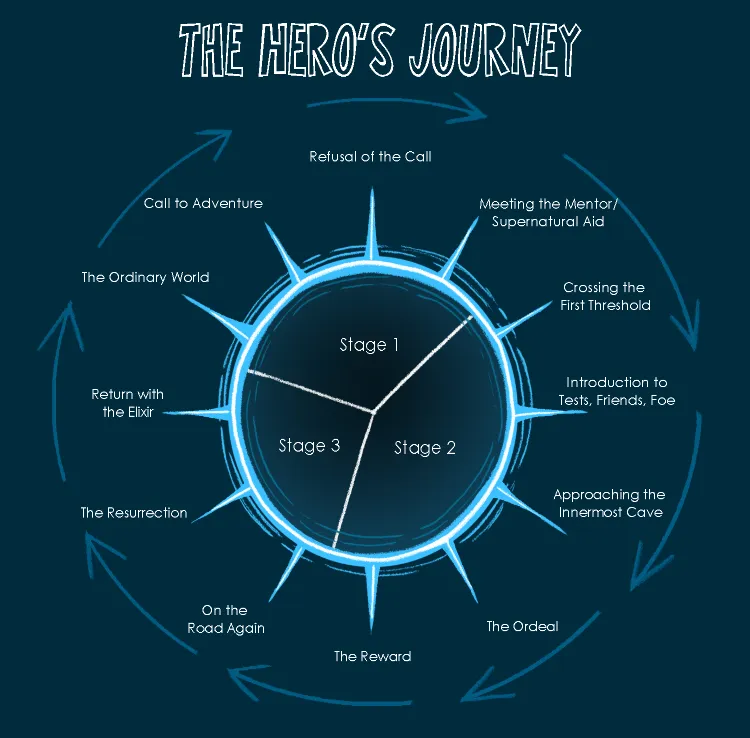
Stage 1: the departure

The departure is just as you might expect. This is the stage where the protagonist is introduced, typically in a modern, realistic setting, and we are introduced to some struggles the protagonist may be experiencing or questions they may have about their own identity. This stage can be broken into our first four steps.
- The ordinary world : As we said, we are first introduced to our protagonist and soon-to-be hero in the reality we know. It is just as the first step is listed: the ordinary world. There is no magic, mayhem, or supernatural creatures evident in this ordinary world. It is the world the protagonist has known all their life.
- Call to adventure : This is one of the steps you may be most familiar with, as it's one of the most commonly known phrases in literature. Regardless of what genre you are writing, your hero has a call to action. After all, there must be a reason why the protagonist leaves the mundane, comfortable lifestyle they've lived up until now. This is the moment where the journey or quest is initiated: a problem, challenge, or quest is presented to the protagonist, and they must decide to leave behind their ordinary lives to face new challenges. Whether the protagonist is immediately threatened, a family member is threatened, or they see something they shouldn't have, it is up to the protagonist to respond to the call.
- Refusal of the call : Wow, isn't it so cool that the hero was discovered by some other world (or they discovered it!) and now they get to embark on this awesome journey? Yes, well, sometimes. Despite how amazing it may seem to be called to accept a quest (hence the reason why this archetype is so popular in literature), the protagonist may not be feeling that excitement. In fact, it's likely that the protagonist is feeling nervous, anxious, scared, hesitant, and thus, resistant to the call at first (don't worry, they'll give in eventually).
- Meeting the mentor/supernatural aid : Okay, so the protagonist is done refusing the call. Maybe they've gotten over their fears, or maybe something happened that makes it impossible for them to continue to deny their inevitable quest. Yay! Now it's time for our protagonist to meet their mentor. The mentor can be supernatural or not, but they act as a teacher, trainer, and instructor for the protagonist. After all, the protagonist is going to need some serious guidance once they've been booted out of their ordinary world. This step involves a lot of trust, though, as the protagonist may barely know their mentor. This step also involves the passing on of certain tools and equipment the protagonist may need to succeed on their journey. These can be special powers or physical instruments.
Stage 2: the initiation
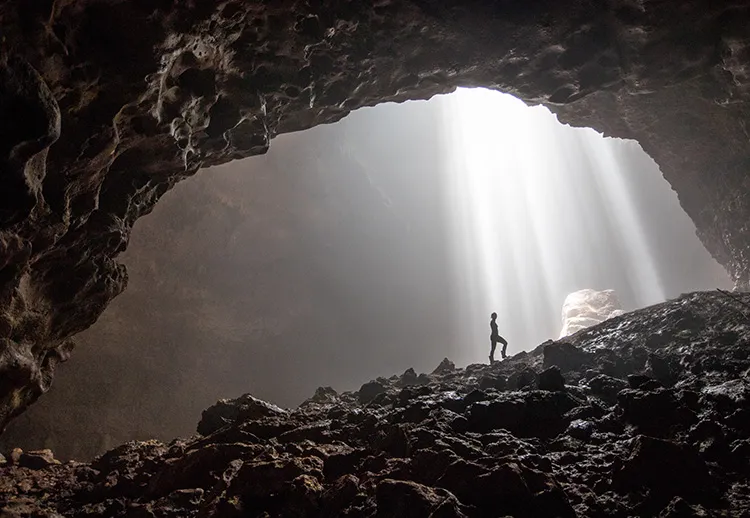
Now that you've spent a decent chunk of time introducing your protagonist (and hero!) and their conflict, it's time to head into the second stage of the hero's journey: the initiation. Before you do this, though, ensure you've checked off the first four items on the previous list. It is crucial that you meet these criteria for a successful hero's journey. After all, the hero can't be truly initiated into their new world if you have not established their old world, their main conflict, and the introduction of their next steps.
This next stage will take up the largest portion of your story. You should fill it with lots of new characters, settings, and trials and tests for your protagonist to endure. This is also a stage where you should focus a lot on character development for your protagonist. No person is going to go through a massive journey and end up the same person they once were when everything is said and done. Take this time to think about how you want your protagonist to change and what it's going to take to accomplish that change.
- Crossing the first threshold : This is the point at which the hero decides to embark on the adventure and cross over into the unknown, leaving his or her ordinary world behind. This is called the threshold because there is something or someone acting as a literal barrier between the protagonist's ordinary world and their new world. Beyond the threshold lies trials and tribulations and potential risks and dangers. Once the protagonist takes that first step beyond this threshold, there is no returning to the life they once knew. This is where the hero's actual journey truly begins.
- Introduction to tests, friends, and foe : This is the step of the story where the cast of characters expands and a new setting, the new world, is introduced. The protagonist may be lost in their new world, so they must evaluate the new people around them to identify potential allies, enemies, or morally ambiguous characters. Trust is established or denied. Just like anyone would struggle with encountering anew environment, the protagonist will endure some struggles of their own, but this is how they'll determine who is friend and who is foe, establishing other character roles in the process. The rules of the ordinary world do not apply to this new world, so hopefully the protagonist meets some good people who will teach him the new ways of life.
- Approaching the innermost cave : At this point on the hero's journey, they have left all semblance of the ordinary world behind. This step marks the preparation for the main event of the journey. The protagonist may gather materials and even other characters, if they're trustworthy enough, to take on the rest of the steps of the quest with them. The cave acts as a metaphor for what the protagonist is about to endure: risk, danger, darkness, and even potential loss. This step also includes some of the tests leading up to the large test yet, which happens to be the next step in the hero's journey.
- The ordeal : Buckle up, this is about to be a wild ride! That's right, your hero has finally made it to one of the biggest challenges of all. The protagonist is no longer approaching the innermost cave. Rather, the protagonist is now fully in the belly of the beast, and what a beast it is! The ordeal is usually not the climax of the story, but this is the moment where the protagonist truly transforms from an ordinary character into a true hero. It may involve their greatest fear or a physically or mentally demanding task.
- The reward : If your protagonist, now hero, succeeds in their greatest challenge, then they will be given a reward that makes the journey worth so much time, effort, and challenge. If they can succeed, then there is hope for them, that bright light that shines through the top of a dark cave and promises fulfillment and a future. This is what the hero has been fighting for this whole time. As for the reward itself, you should make sure it makes sense in the context of your story. It can be an object, a piece of knowledge, or even something entirely different, so long as its value matches the degree of the journey.
Stage 3: the return
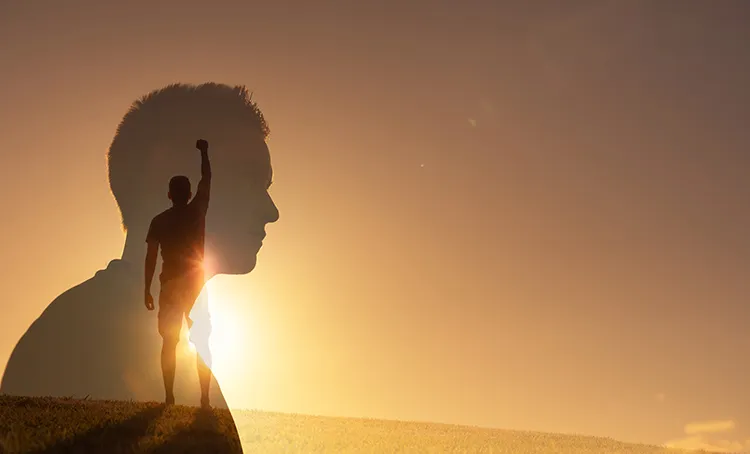
Wahoo, your hero has endured so much and has finally gotten their reward! It's over, right? They can return to their ordinary life and reap the benefits of all their hard work? Wrong! Things are never as easy as they seem, especially in a hero's journey, so why would the road back to the ordinary world be any different for your hero?
- On the road again : This is the turning point, literally. The hero turns back around, hoping to return to their normal life after receiving their reward. But thing's are never that simple, so be sure to make sure that road is blocked. Traffic cones, stoplights, maybe a supernatural villain or catastrophic natural disaster! That should do the trick. If the road back home was easy, we'd be bored, so maintain the stakes with challenges for the hero to face as they make their way back home.
- The resurrection : Congratulations, you've finally reached the climax of your story. Remember how we said the ordeal was the moment where your protagonist transformed from an ordinary character into an actual hero, this is the moment where they can prove to us that they deserve the hero title, after all. The stakes become extremely high, as the hero does not want to fail after having endured so much already. This is the final test for the hero and the final opportunity for the villain or opposing forces to defeat the hero. If the hero comes out on top, then they will finally be able to reach that light at the end of the tunnel.
- Return with the elixir : The hero has finally completed all their challenges and is able to return home with their reward. Their transformation is complete, and they've most likely become a better person because of the journey. Or, if you want to add a twist to this step, you can always have the hero fail to return without they set out to receive, but you better be prepared to write a sequel and a whole other journey!
Following the template
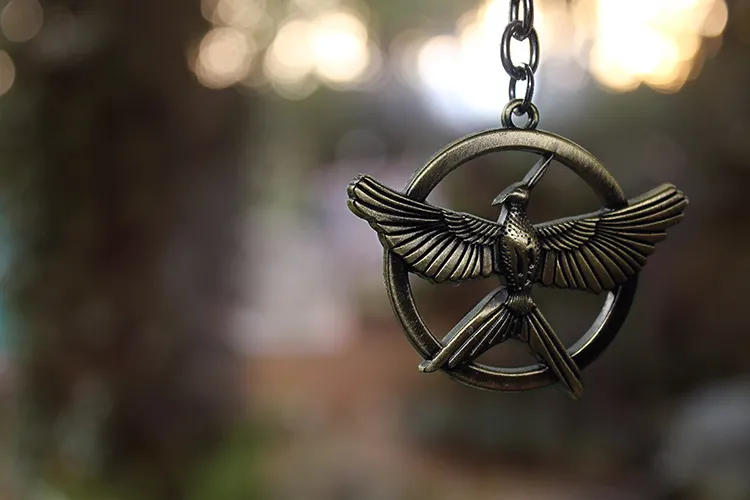
Since we mentioned The Hunger Games at the very beginning, let's use Katniss Everdeen and her hero's journey as a model for this template.
- The ordinary world : Katniss Everdeen is introduced as a citizen on District 12, a poor mining district. She spends her days hunting in the woods to provide food for her family.
- The call to action : Every year, a reaping takes place where a male and female tribute from each district is randomly chosen to take place in the Hunger Games, a fight to the death. During the reaping, Katniss' sister Primrose is selected, so Katniss volunteers to take her place as the female tribute from District 12.
- Refusal of the call : As we mentioned, you may not include all 12 steps of the hero's journey in your own story. Katniss does not actually refuse the call, as she volunteered herself to save her sister. A refusal of the call is slightly seen in Peeta, Katniss' fellow tribute, as he is visibly nervous and shaken up. The nature of this story makes it so that a refusal is impossible.
- Meeting the mentor : Katniss meets Haymitch Abernathy, a previous Hunger Games victor from her District. He is her literal mentor and is meant to teach her how to make allies, get sponsors, and survive in the arena. She also finds a mentor in Cinna, the person in charge of her appearance for promotions.
- Crossing the threshold : Katniss is whisked out of District 12 and on the train to the gaudy, wealthy Capitol.
- Introduction to tests, friends, and foe : Katniss must attempt to learn who to trust while also earning sponsors and impressing the Game Makers. Katniss makes a reluctant alliance with Peeta and admires Rue from District 11. During training, it is evident that the Careers (tributes from the wealthier districts) are enemies.
- Approaching the innermost cave : Katniss enters the physical arena.
- The ordeal : The arena is full of challenges: tracker jackers, mutant wolves, poisonous berries, and other tributes trying to survive. The games themselves are the whole ordeal.
- The reward : Katniss and Peeta are the last tributes standing.
- On the road again : Although Katniss and Peeta have survived, there can only be one winner, and the Capitol wants to force them to select who lives and who dies.
- The resurrection : Katniss' bold attempt at a mutual suicide leads to both of them being allowed to live as victors, lest they become martyrs in front of the whole country.
- Return with the elixir : Katniss and Peeta return to District 12 as victors, allowing them to live lives of wealth and luxury. If you've read the books, you'll know this is nowhere near the end of Katniss' journey.
Reaping the rewards
If you've managed to check off all 12 steps on our hero's journey checklist, then you've got yourself an awesome hero's journey. If you're just starting out on your own journey of writing for a hero, then be sure to follow this template for maximum results. Be the hero in your own journey and remember to never give up as you face those roadblocks and challenges while buckling down and writing a story of your own!
Header photo by Zoltan Tasi .
World of Warcraft®: The War Within™ Goes Live August 26!
Get back in the fight as you defend Azeroth from the shadows below. Journey through never-before-seen subterranean worlds filled with hidden wonders and lurking perils, down to the dark depths of the nerubian empire, where the malicious Harbinger of the Void is gathering arachnid forces to bring Azeroth to its knees.
World of Warcraft’s next expansion— The War Within —will launch in the Americas, Europe, Taiwan, Korea, and Australia/New Zealand at the same time globally. Wherever you live and whatever faction you represent, you can be part of one globally unified front as the way into the Khaz Algar opens.
Check the details below for the exact time you can begin logging in to explore all that this new expansion has to offer.
Players who pre-purchase the Epic Edition of The War Within will also gain early access to The War Within on August 22 at 3:00 p.m. PDT. The War Within will go live globally on August 26 at 3:00 p.m. PDT. Players who pre-purchase the Epic Edition can also get bonus content —Gryphon Rider Sets and Squally’s Siblings.
Early Access Launch Times Los Angeles New York São Paulo London Paris Taipei Seoul Sydney 3:00 PM. PDT August 22 6:00 PM EDT August 22 19:00 Brasilia August 22 23:00 BST August 22 00:00 CEST August 23 06:00 CST August 23 07:00 KST August 23 08:00 AEST August 23 Global Launch Times Los Angeles New York São Paulo London Paris Taipei Seoul Sydney 3:00 PM PDT August 26 6:00 PM EDT August 26 19:00 Brasilia August 26 23:00 BST August 26 00:00 CEST August 27 06:00 CST August 27 07:00 KST August 27 08:00 AEST August 27
Table of Contents
- Meet the Earthen
- Uncover the Secrets of Delves
Take Your Character to the Next Level with Hero Talents
Ride into battle in deephaul ravine, explore the zones and dungeons of the war within.
- Get the Band Together for Warbands (now live)
- Take to the Skies with Skyriding (now live)
- User Interface and Quest Updates (now live)
The War Within Season 1 Schedule
The story so far, additional media, meet the earthen, a new playable allied race.
A new playable race arrives in The War Within—the Earthen. Unlock playable Earthen characters after completing their quests and the overall level-up campaign. Enlist this titan-forged race made of living stone by aiding them in their endeavors.
Champions of Azeroth must aid the Earthen and seek a way to restore their harmony and population. They can also be unlocked as a playable race, and you can choose Alliance or Horde to begin your journey starting at level 10 in their capital city of Dornogol. Learn more about them from our previously published article.
Uncover the Secrets of Delves in The War Within
Take your adventure to a new level with Delves. Explore bite-sized world instances, gain experience, and epic rewards! You can explore alone or with up to four additional friends, along with an NPC companion—Brann Bronzebeard— you customize through their talent tree. Learn more about this new feature and the rewards you can earn either solo or with a few friends in our previously published article .
The War Within™ expansion introduces Hero Talents to World of Warcraft classes. They are an evergreen form of character progression for each class specialization that introduces new powers and class fantasies. There are 11 nodes in a Hero Talent tree. The first of these unlocks with the system at level 71, and you earn 1 talent point per level from level 71 to 80, so you get every talent in the tree by level 80. Learn more about the available Hero Talents for your class and specialization in our article here .
Set your sights on your next PvP adventure within Deephaul Ravine in the Ringing Deeps where you’ll work with your team to secure resources in the mine. Teams earn points by controlling one of the two active mine carts on the map or by capturing the Deephaul Crystal located in the middle of the map. The first team to earn 1500 points wins! Learn more from our article .
Get the Band Together for Warbands (Now Live)
With the arrival of The War Within , upon first logging into World of Warcraft , the Warband conversion process automatically enables many of the game's progression systems to be account-wide. Players will not need to log into each character individually for all progression, items, etc., to convert; however, there may be a short wait for the system to completely process your Warband the first time you log in. The Warband conversion process can take up to 20 minutes or longer, and depending on the amount of data being processed, there could be a login queue.
The new Warbands system is effective for all characters on a player's Battle.net account and the items, Collections, and progression they share. It's important to note that your Warband is limited to characters within a single region (for example, the Americas or Europe) but spans every realm, faction, and even subscription you may have within that region.
Please note that as the character selection screen shows all characters on the Battle.net account in one convenient location, some may show up as “gray” in the listing and are not available to select to use a Character Service on. To use a service for that character, you will need to select the realm that the character is from first by clicking on the “Realm” selection at the top of the screen and then apply the service to that character. You can also hover your mouse cursor over a character listed on the right side of the screen to see additional information including the realm it is currently on. Learn more about Warbands in our previously published article .
Take to the Skies with Skyriding (Now Live)
Dragonriding is here to stay and is available for many flying mounts in all flyable areas. Players can also toggle between Skyriding (previously known as dynamic flight) or the flying style introduced originally in The Burning Crusade (TBC) which we’re calling Steady Flight.
You can easily identify the mounts that are enabled for Skyriding from within the Warbands Collection tab (Shift-P) which is noted as Skyriding. To switch between Skyriding and Steady Flight, you can do so directly in the mount collection by clicking on the Skyriding icon in the middle of the interface and selecting “Switch Flight Style” in the drop-down menu. It’s important to note that any mount that doesn’t support Skyriding will be grounded if Skyriding is active. You will also be able to open your Skills Unlock here as well.
The ground mounts in your collection will continue to stay grounded, but most flying mounts will be able to be put to use for Skyriding save for a select few such as the Otterworldly Ottuk Carrier, some fish mounts, and brooms.
User Interface and Quest Updates (Now Live)
With the start of Early Access on August 22, Normal difficulty dungeons will become available.
- Ara-Kara, City of Echoes (Levels 70-80)
- Priory of the Sacred Flame (Levels 70-80)
- The Rookery (Levels 70-80)
- The Stonevault (Levels 70-80)
- Cinderbrew Meadery (Level 80)
- City of Threads (Level 80)
- Darkflame Cleft (level 80)
- The Dawnbreaker (Level 80)
With the launch of the expansion on August 26, Heroic difficulty dungeons will be available to play.
On September 10, The War Within Season 1 will begin with Heroic and Raid Finder Wing 1 of Nerub-ar Palace opening, Mythic 0 dungeons also become available along with Heroic Seasonal dungeons and the new World bosses.
World Bosses
- Kordac, the Dormant Protector
- Aggregation of Horrors
- Shurrai, Atrocity of the Undersea
- Orta, the Broken Mountain
On September 17, Mythic raids, Raid Finder Wing 2, Mythic+ dungeons and raid Story Mode will open.
On September 24 Raid Finder Wing 3 will open.
Dungeon Item Rewards:
Catch up on the story so far with our video.
WoWCast: Dive into The War Within’s Delves, Dungeons, PvP, and Raid
"threads of destiny".
Warning: Arachnophobe Alert! This content contains references to spiders and arachnid-related imagery which may be unsettling to individuals with arachnophobia. Viewer discretion is advised.
Alleria: "Light and Shadow"
Follow Alleria Windrunner’s journey as she battles through the trials that have shaped her into one of Azeroth’s most formidable heroes.
Short Stories
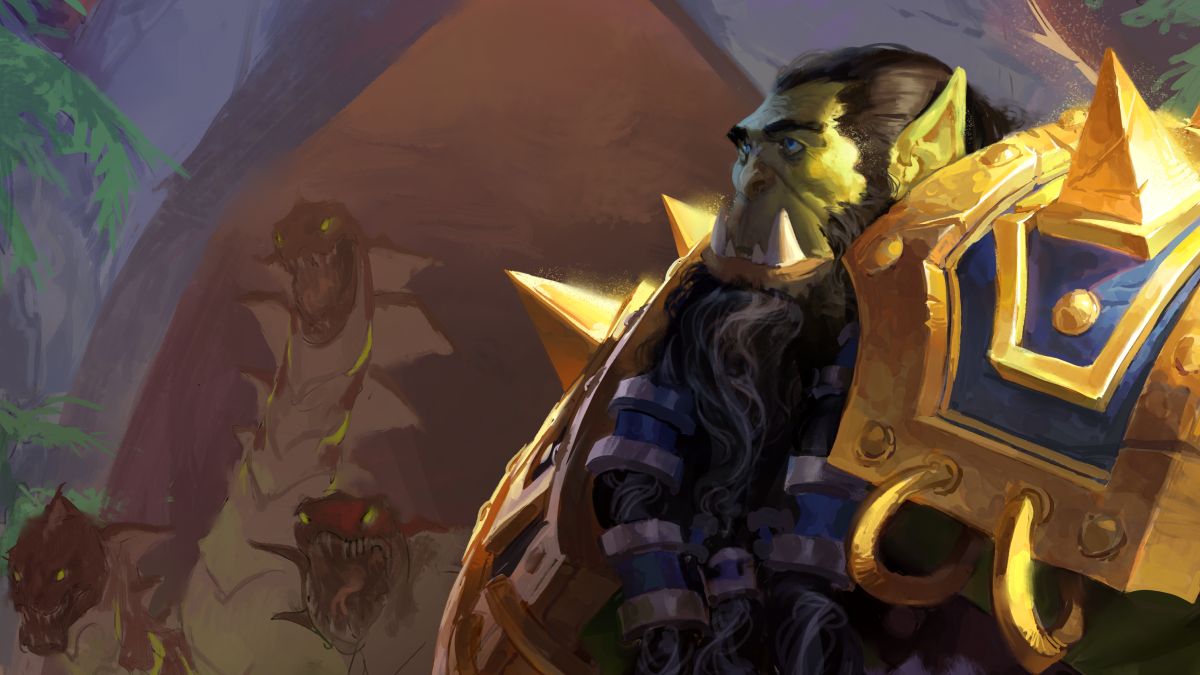
After several younglings are lost attempting their om’gora rites, Thrall begins questioning the value of the trials. The new generation places such emphasis on martial strength and battle prowess that they would risk death attempting the rites before they are ready. Walking through Orgrimmar with his family, Thrall reflects on his son’s readiness for the trials, his own coming of age, and how to prepare this new generation to build on the legacy he and his friends started long ago. Read it here.
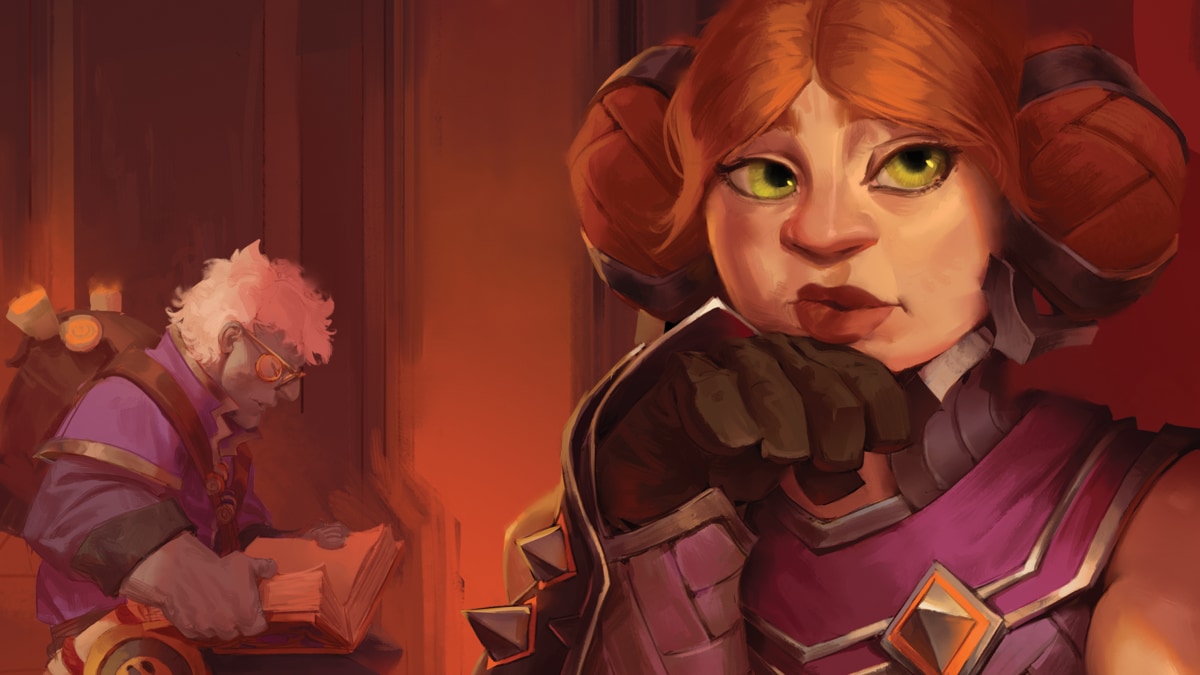
"The Lilac and the Stone"
Queen Regent Moira Thaurissan is exhausted. Her son, Dagran II, is rapidly coming of age and stands to inherit leadership of both the Dark Iron and Bronzebeard Clans. But Dagran is bookish and odd: He would easily choose the company of his library over leadership. Can Moira inspire her son to take up his birthright, or will her fears for his future—and the future of the clans—prove true? Read it here.
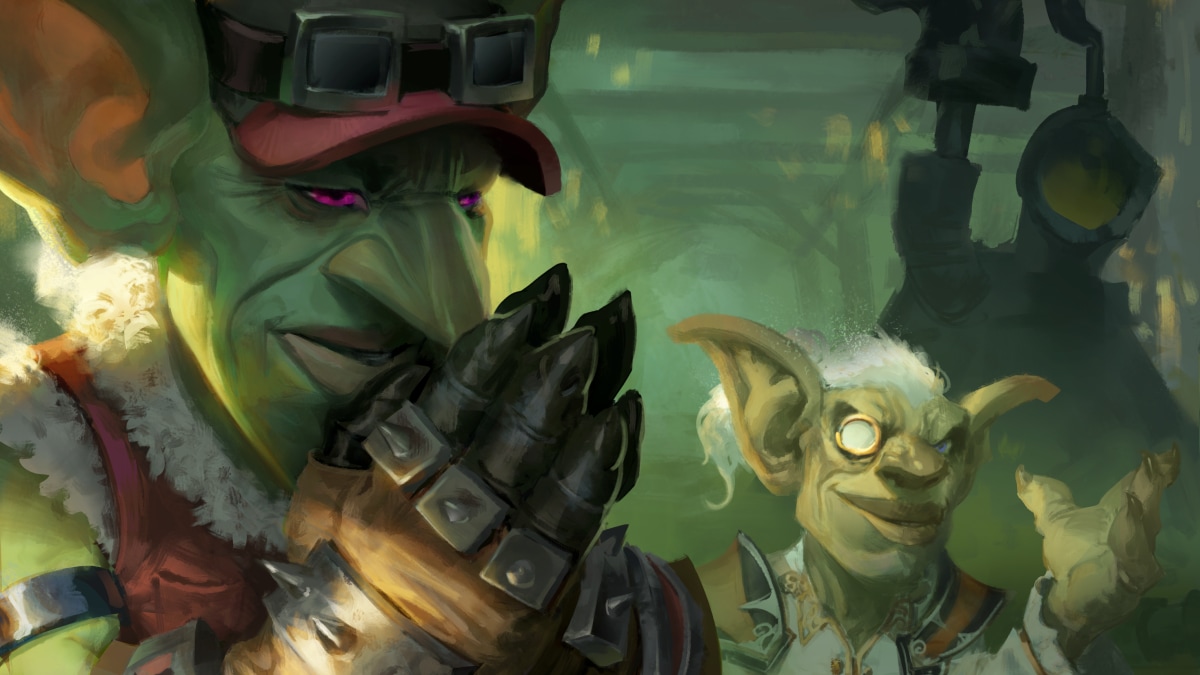
"The Goblin Way"
Monte Gazlowe, Trade Prince of the Bilgewater Cartel, has been probing working conditions among the goblins. Everywhere he tours he sees a burned-out workforce, cheap machinery, and unhealthy working conditions that drag production and denigrate their people. “This is the goblin way! Dog eat dog! Only the winner comes out on top!” But is this really the goblin way, or is it just the way Jastor Gallywix wanted them looking? Read it here.
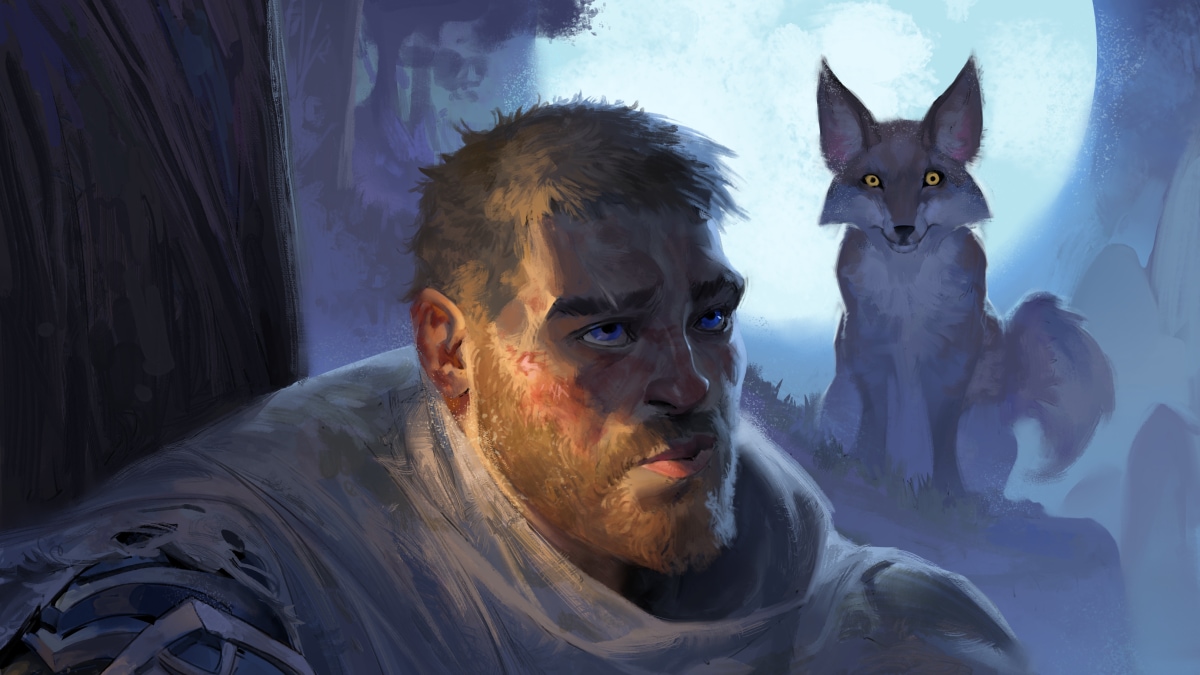
"The Calling"
Since leaving the realms of Death, Anduin Wrynn has only sought to keep his hands busy. Plagued by night terrors and grisly flashbacks, the young king finally finds the isolation he seeks in Stormsong Valley, milling flour for a local village. But while Anduin may be able to hide his identity, he cannot escape who he is or the stuff he is made from. Read it here.
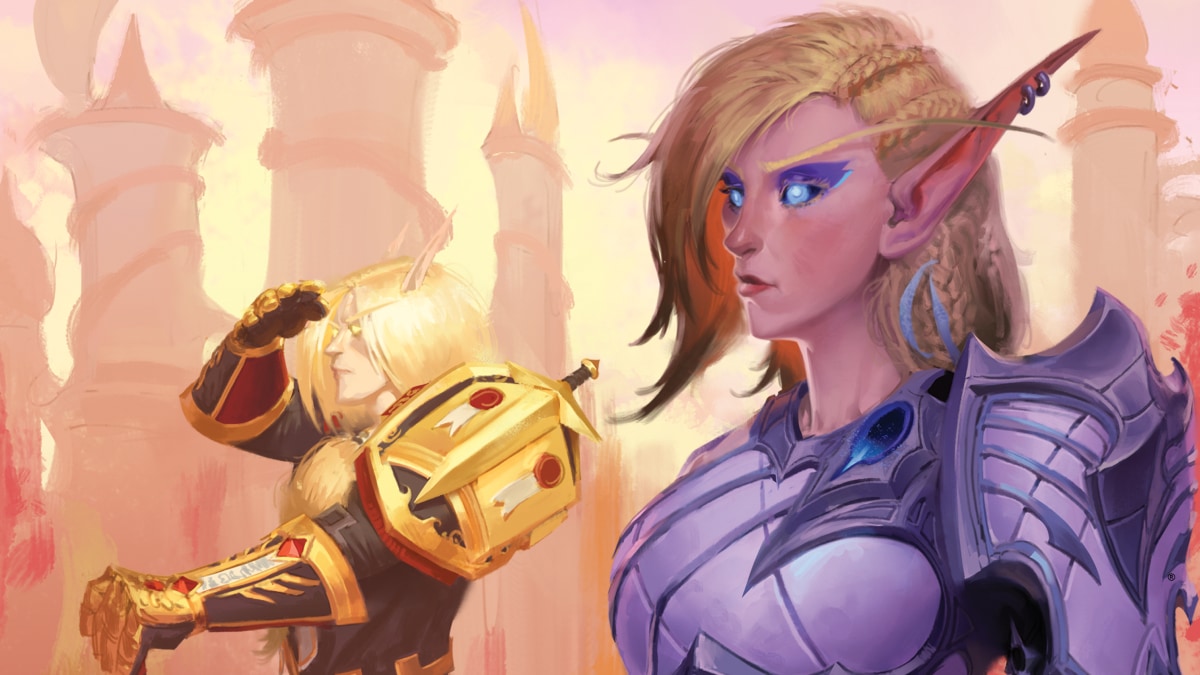
"A Whisper of Warning "
Khadgar has dispatched Alleria Windrunner on a dark mission, one that portends an uncertain future for Azeroth. Before she departs, she visits her lost home of Silvermoon on a mission of peace and connection. Much remains unsaid between Alleria and her son, Arator—hindered by fear and misunderstanding—but Alleria would have her son know his mother and her intentions before a new evil threatens Azeroth again. Read it here.

1920x1080 , 1920x1080 (alt), 3840x2160 , 3840x2160 (alt) 1080x1920 , 1080x2160 , 1860x2480
Gather your allies and we’ll see you in The War Within !

COMMENTS
6. "Raymond's Run" by Toni Cade Bambara. Squeaky, the story's young protagonist, is a talented runner who unexpectedly embarks on her own Hero's Journey. While she is initially focused on her own ambitions, Squeaky's perspective shifts as she heads down a path of self-discovery and compassion.
Here Are The Best Hero's Journey Short Story Examples. 1. Story of Your Life - Ted Chiang. Ted Chiang via Wikipedia, Public Domain. Incorporating the hero's structure narrative but molding the form to serve the story, Story of Your Life begins with the narrator, Dr. Louise Banks, speaking to her as-yet-unborn child.
4. Meeting the Mentor. The hero has either gone off on an adventure or has been thrust into one-now, they get some sort of guide to take them through this new world. This new guide is a mentor character, and they'll often have something to help our hero out along the journey. Think Gandalf or Hagrid.
The Hero's Journey: Use this structure when you want to tell a story of personal growth, transformation, and adventure. It works well for epic tales, fantasy, and science fiction, but it can be adapted to other genres as well. Three-Act Structure: This is a versatile structure suitable for a wide range of genres, from drama to comedy to action.
9. Reward (Seizing the Sword) In which the Hero sees light at the end of the tunnel. Our Hero's been through a lot. However, the fruits of their labor are now at hand — if they can just reach out and grab them! The "reward" is the object or knowledge the Hero has fought throughout the entire journey to hold.
The examples below are: Interview with a Vampire. The Hunger Games. Interstellar. Harry Potter and the Philosopher's Stone. We hope to add more as time goes on. For each story we identify how each of the stages of the Hero's Journey is represented.
9. Make a list of your hero's strengths and weaknesses. Now, create a trial or an antagonist that can challenge each of those traits. 10. Write a scene where your hero meets an unexpected ally on their journey . 11. Create a fantastical challenge or physical obstacle in the world where your story is set.
Step 7: Approach to the Inmost Cave. Eventually the Hero must arrive at the destination, and that destination is frequently a fortress, cave, or dungeon crawling with monsters, enemies, or traps. This will lead to the story's climax, but the best heroic journeys include a step before the big fight.
The Hobbit does an exemplary job of following the Hero's Journey, and it's also an example of how checkpoints can exist in more than one place in a story, or how they may deviate from the typical 12-step process of the Hero's Journey. 1. The Ordinary World. This stage in the Hero's Journey is all about exposition.
A sudden and unexpected journey, promising adventure and peril. A test of character, strength, and skill. An ultimate battle that tests the hero's resolve. A triumphant return home. If this sounds familiar, that's because this exact narrative template has inspired countless stories from ancient myths to modern television shows and movies ...
In this text, Jessica McBirney discusses the story of the Hero's Journey and examples of this writing formula found in other popular books. Read more here. Adopting a High Quality Instructional Material like CommonLit 360 curriculum accelerates student growth with grade-level rigor and built-in support.
The hero's journey is a popular form of storytelling, particularly with today's screenwriters. It also works well for novels and even non-fiction. Work through these 12 steps the next time you outline a book or story. Understanding the rules and mythology of this framework and see where your plot takes you.
Here's an overview of all of the 17 steps of Joseph Campbell's Hero's Journey: Act One: The Departure. The Call to Adventure. Refusal of the Call. Supernatural Aid. The Crossing of the First Threshold. Belly of the Whale. Act 2: The Initiation: The Road of Trials.
In today's post, we will explain the 12 hero's journey stages, along with the simple example of Cinderella. The Hero's Journey was originally formulated by American writer Joseph Campbell to describe the typical character arc of many classic stories, particularly in the context of mythology and folklore. The original hero's journey ...
There are lots of themes that can work in a story—but these five key themes really thrill readers. Learn what they are and how to implement them into your plot. 1. Good vs. Evil. Perhaps the most obvious Situational Archetype is the classic dichotomy between the forces of Good and the forces of Evil.
A Sound of Thunder: This thrilling short story by Ray Bradbury tells of a group of hunters who travel back in time to hunt the ultimate prey, the Tyrannosaurus Rex. As with most adventures in time travel, the hunters' actions have far reaching effects, educating them in the harsh lesson that even the smallest actions have consequences.
Here Are The Best Books That Follow the Hero's Journey 1. The Hobbit by JRR Tolkien The Hobbit by J.R.R. Tolkien has featured regularly on best-seller lists since its first publication in 1937.. The Hobbit by J.R.R. Tolkien has featured regularly on best-seller lists since its first publication in 1937 and is widely cited as one of the twentieth century's most beloved and influential novels.
Examples of a Hero's Journey in Five Stories. 1. Avatar. This 2009 sci-fi blockbuster became the top-grossing film of all time just 47 days after it premiered. Its success is largely due to the incredible Computer-Generated Imagery (CGI) characters and visual effects that are vibrantly convincing.
Reviewing hero's journey examples can simplify this concept and aid in understanding. Explore each step of the journey and clear examples. ... This is a moment of great success in the story. The hero is a changed person now, though they may not fully realize the extent of the change in their continued focus on the matter at hand.
The hero's journey is a timeless narrative structure that continues to captivate and inspire audiences around the world. Through the lens of a short story, we have explored the key components of the hero's journey and how they contribute to the overall narrative.From the call to adventure to the climactic showdown, the hero's journey offers a compelling framework for storytelling that ...
The story deepens and the challenges they face change the hero. 7. The meeting with the goddess. This is one of the steps in the hero's journey that have become a bit dated. Joseph Campbell's study of (mostly male-centric) myths leads him to this stage in the journey where the hero meets the goddess.
The hero's journey is the story of a hero who leaves the ordinary world to go on an adventure full of peril. On it, the hero will gain both adversaries and allies, and will face a great evil. The hero will also face his shadow self, which is perhaps the most frightening antagonist of all. Campbell references 17 total steps in the hero's journey.
Hero's Journey Plot Outline Plan your short story using the organizer below. If you need to change the order of the boxes you can. Make sure you use the slide show that explains each part of the journey. Each box should have two to five sentences. Part I: (Slides 5-10) 1. The Ordinary World: introduce the Hero and the setting to readers.
World of Warcraft's next expansion—The War Within—will launch in the Americas, Europe, Taiwan, Korea, and Australia/New Zealand at the same time globally. Wherever you live and whatever faction you represent, you can be part of one globally unified front as the way into the Khaz Algar opens. Check the details below for the exact time you can begin logging in to explore all that this new ...